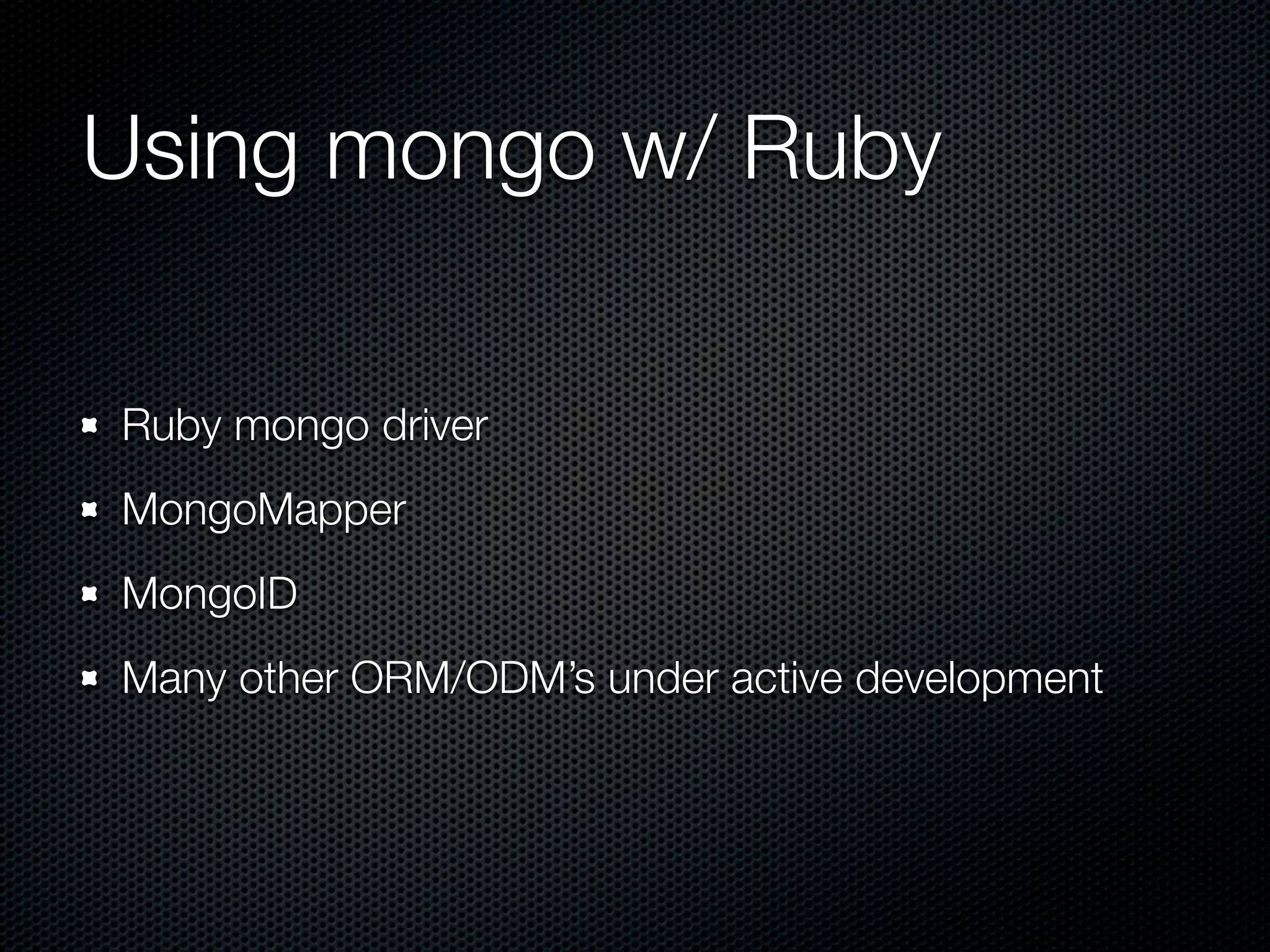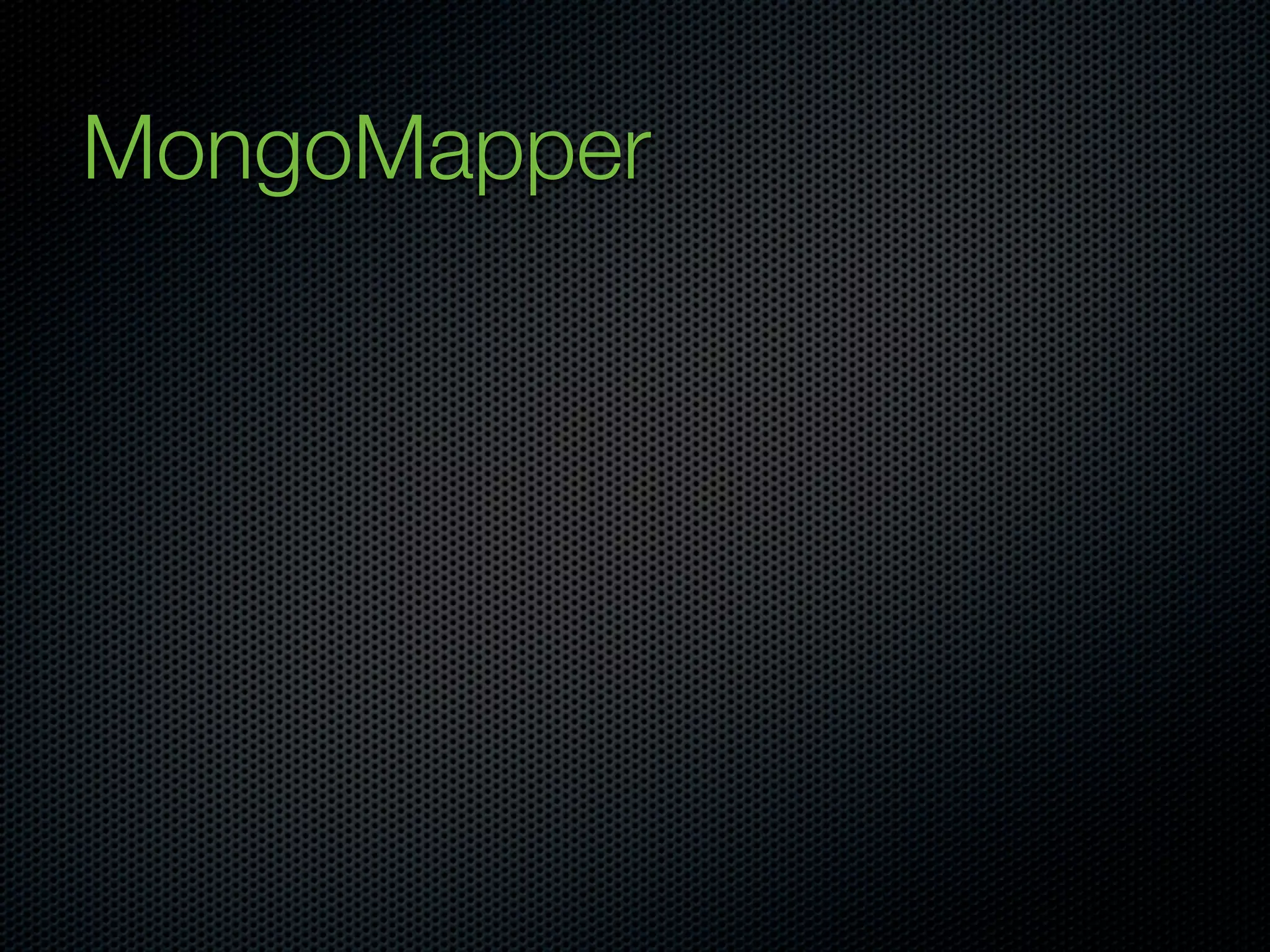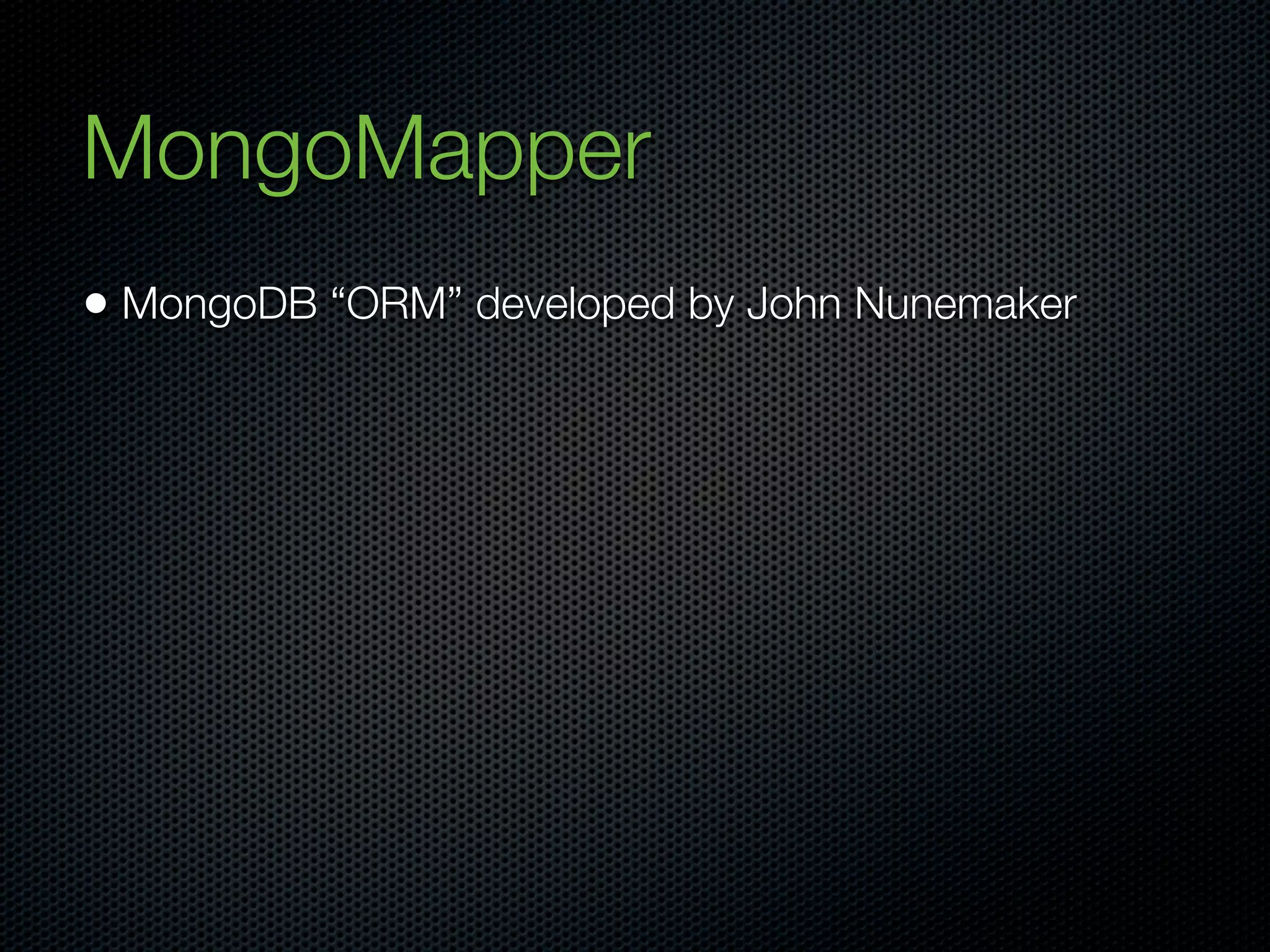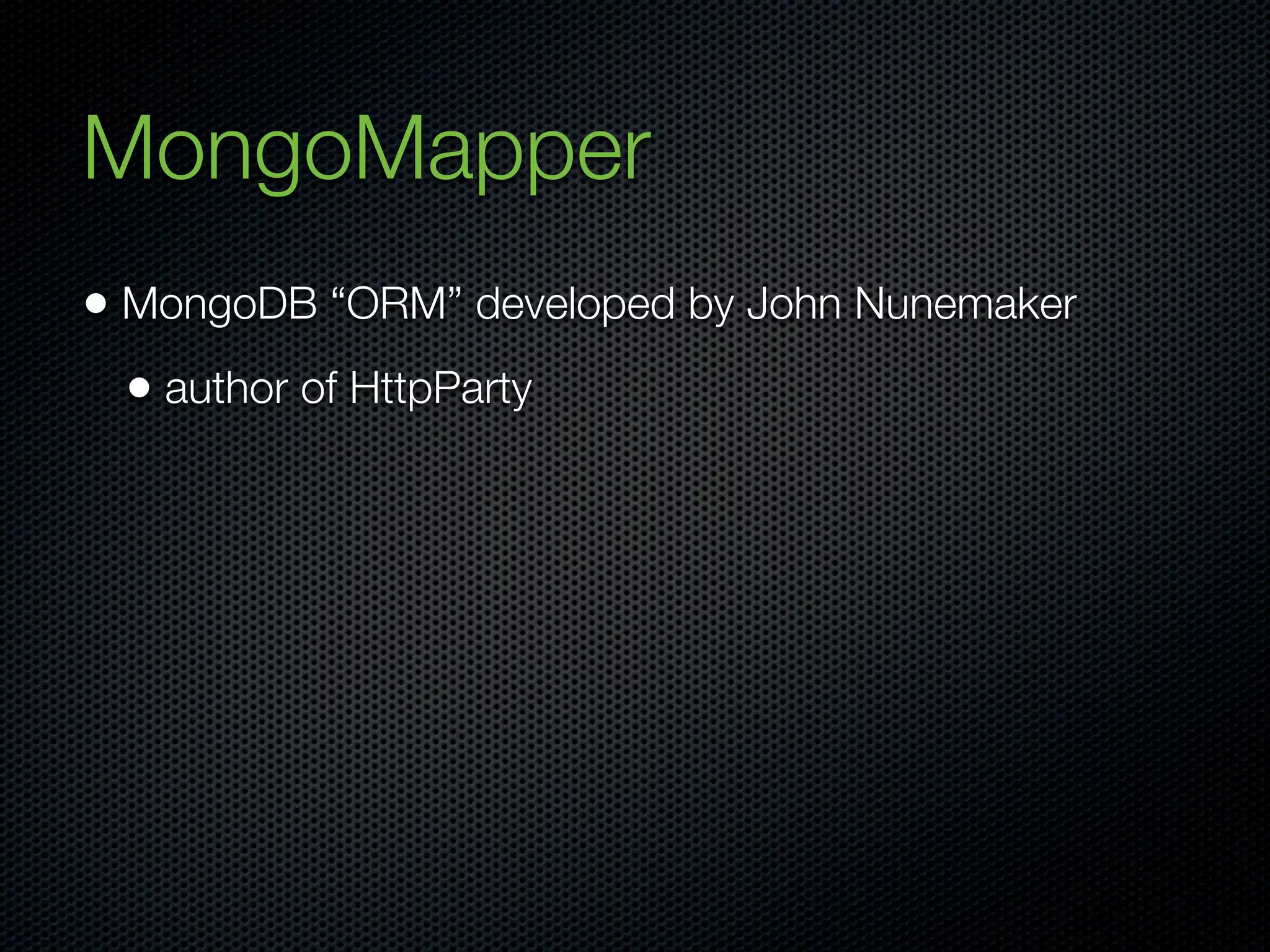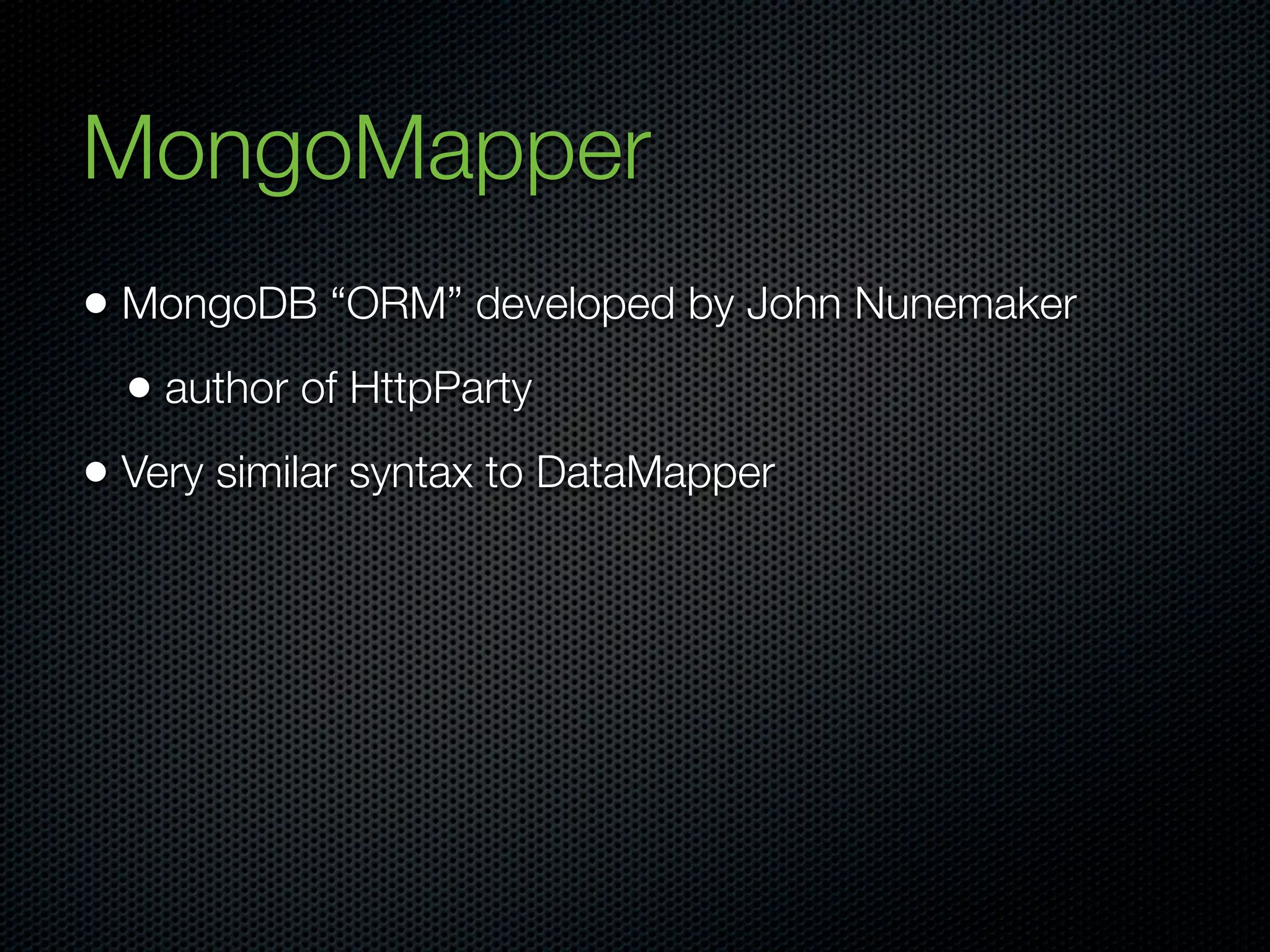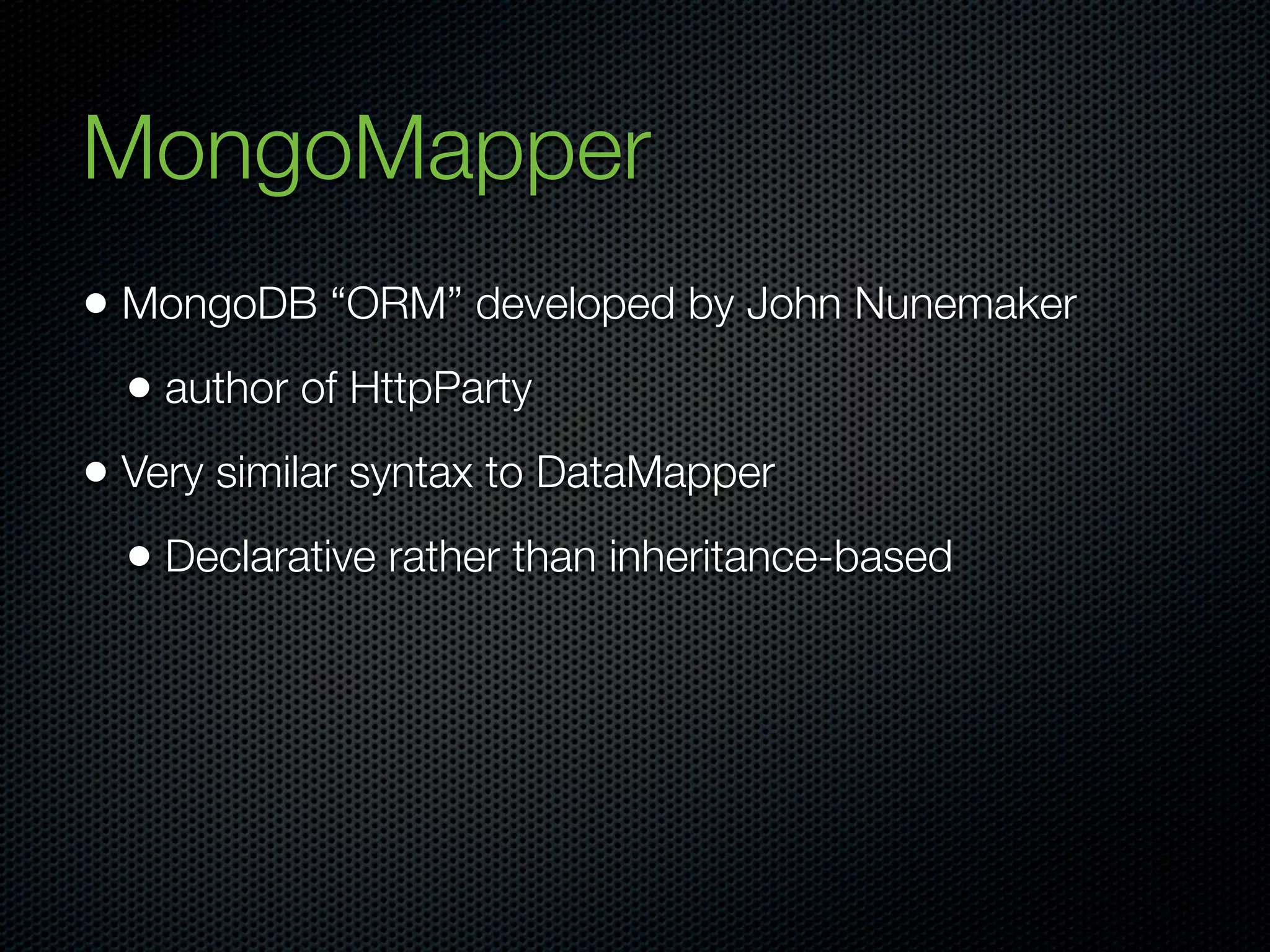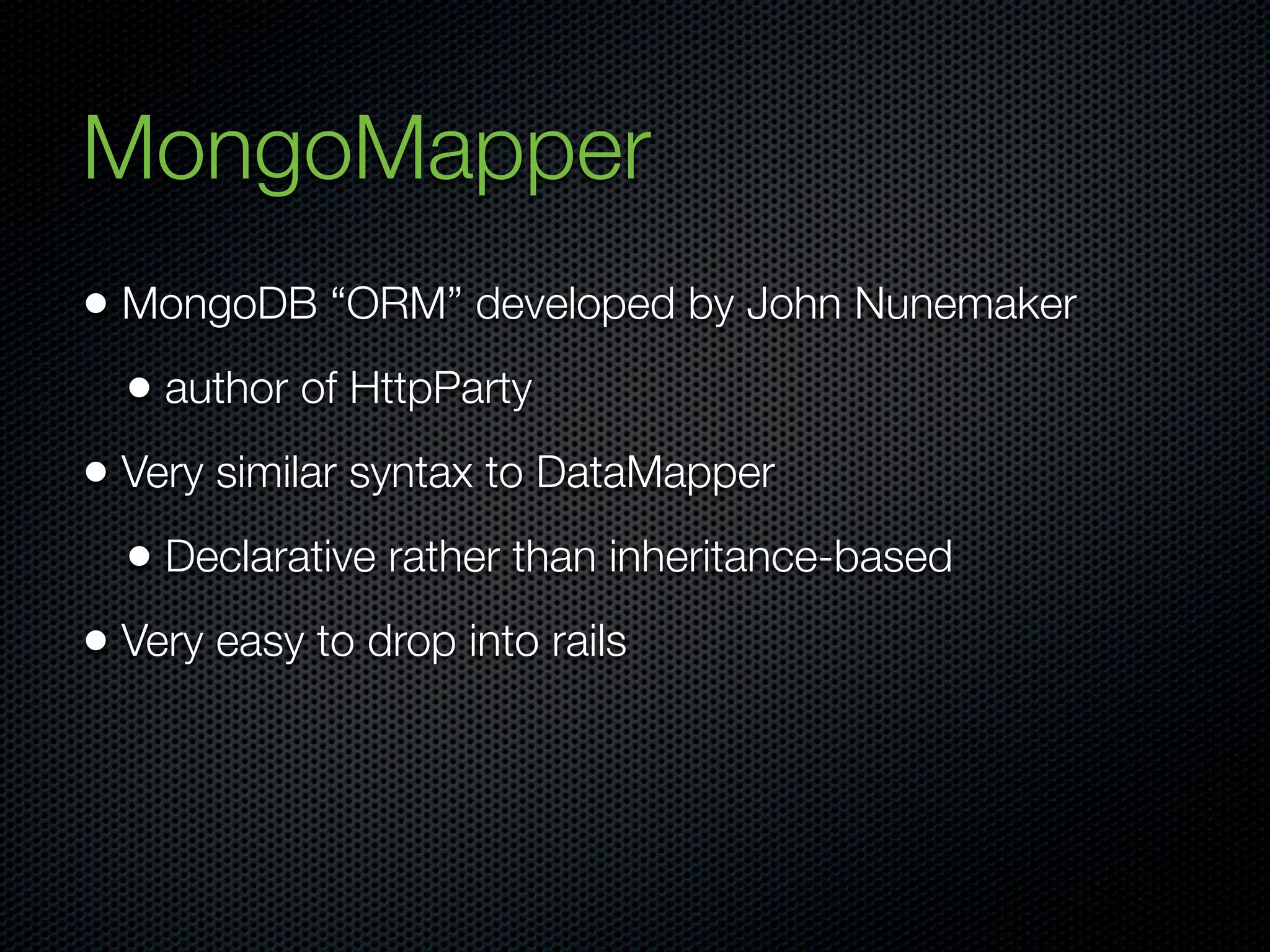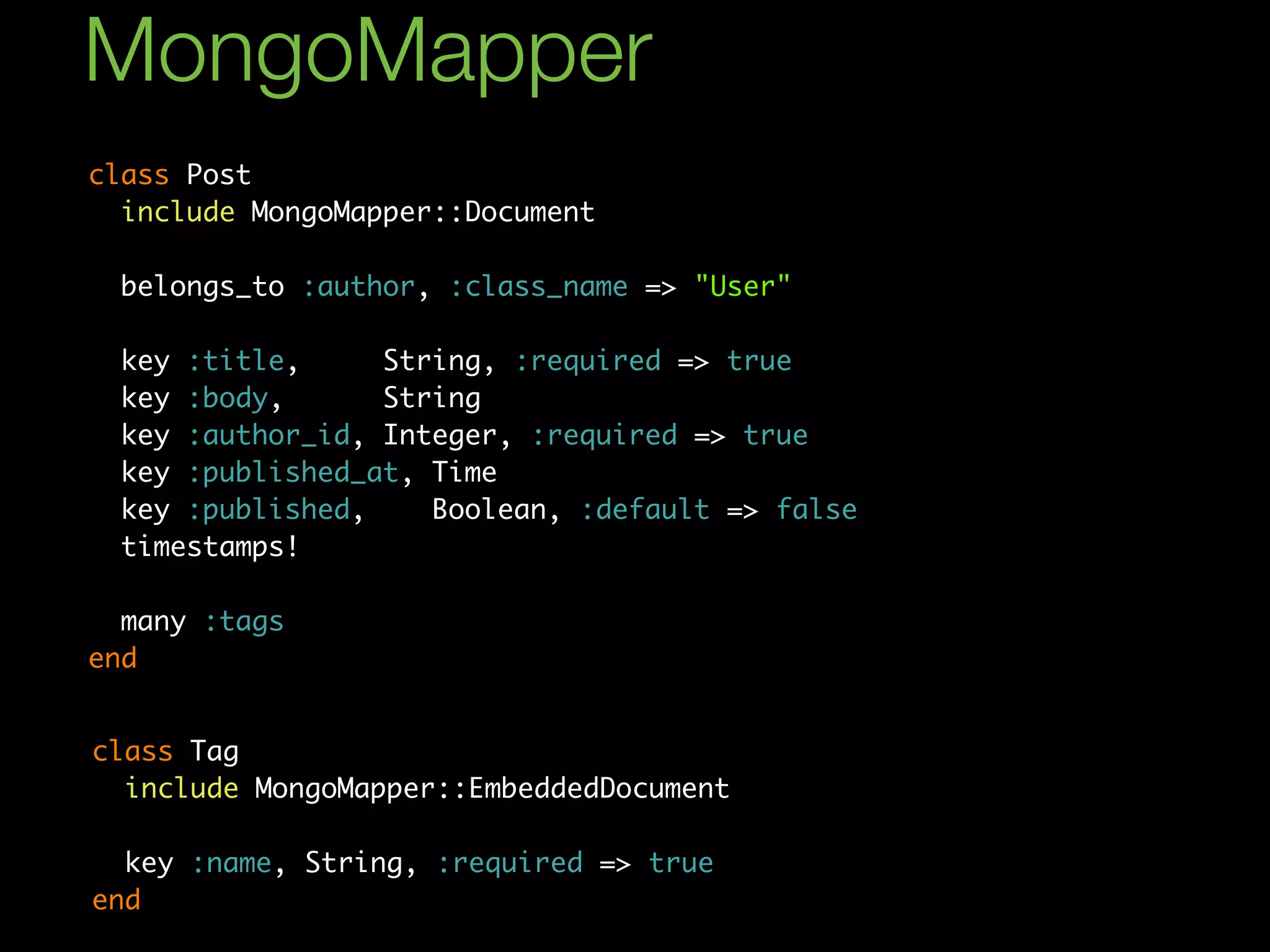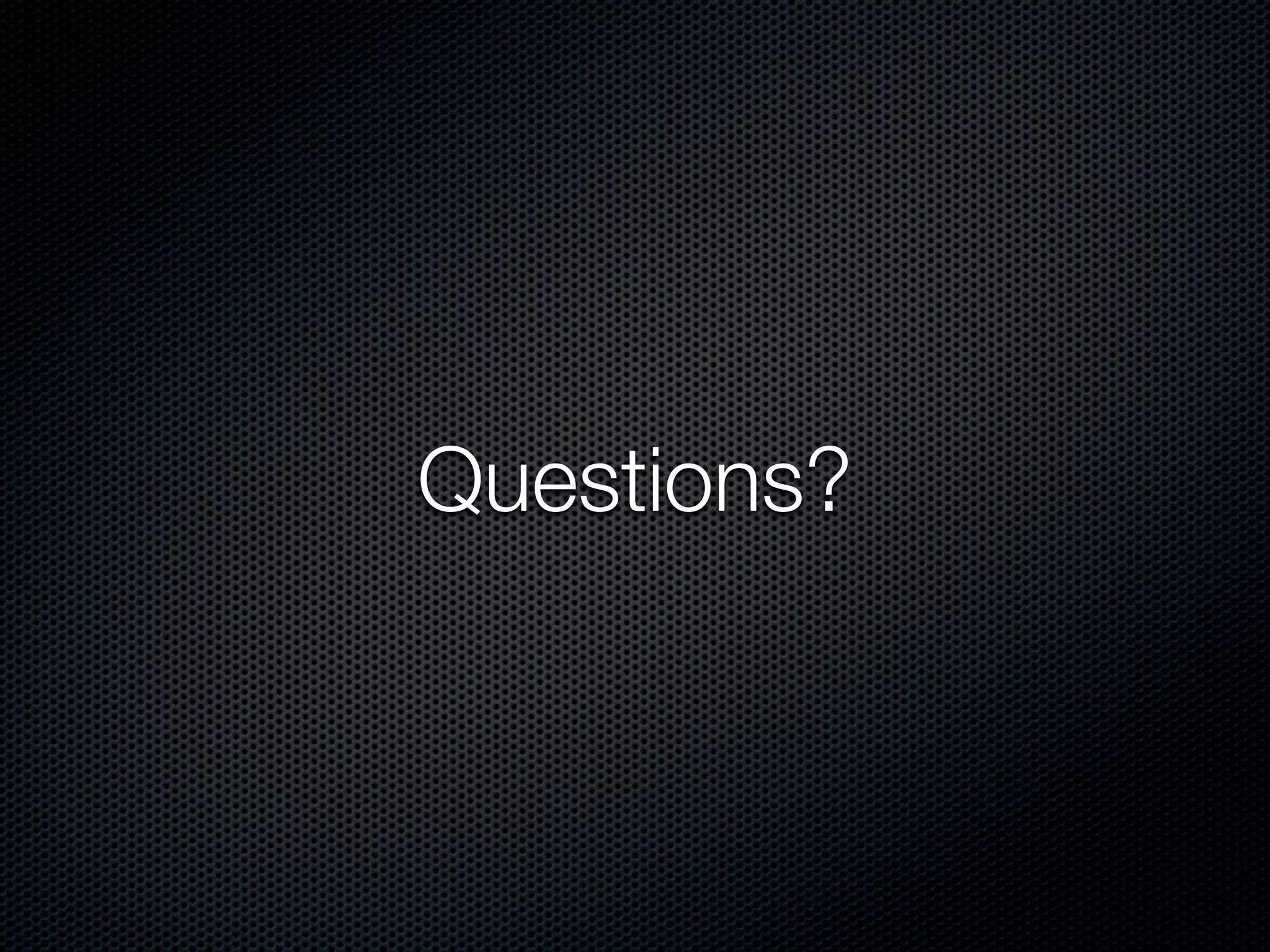The document provides an overview of MongoDB and how it can be used practically with Ruby projects. It discusses how MongoDB simplifies schema design by allowing embedded documents that match how objects are structured in code. This avoids the need to map objects to SQL schemas. Examples are given of how MongoDB could be used for a blogging application with embedded comments and tags, for logging with capped collections, and for an accounting application with embedded transaction entries. The document also introduces MongoMapper as an ORM for MongoDB that provides an ActiveRecord-like syntax for modeling documents and relationships in Ruby code.
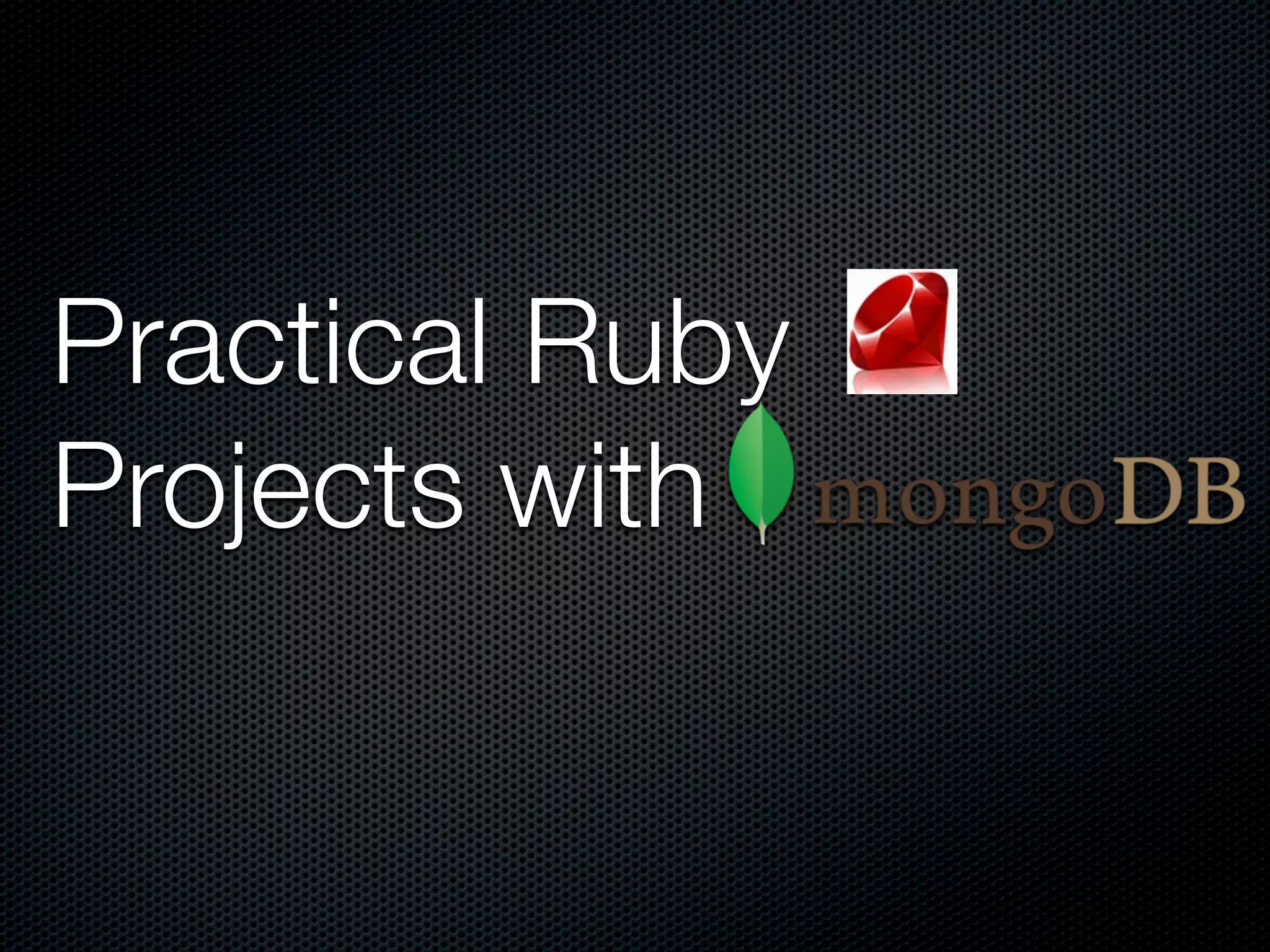
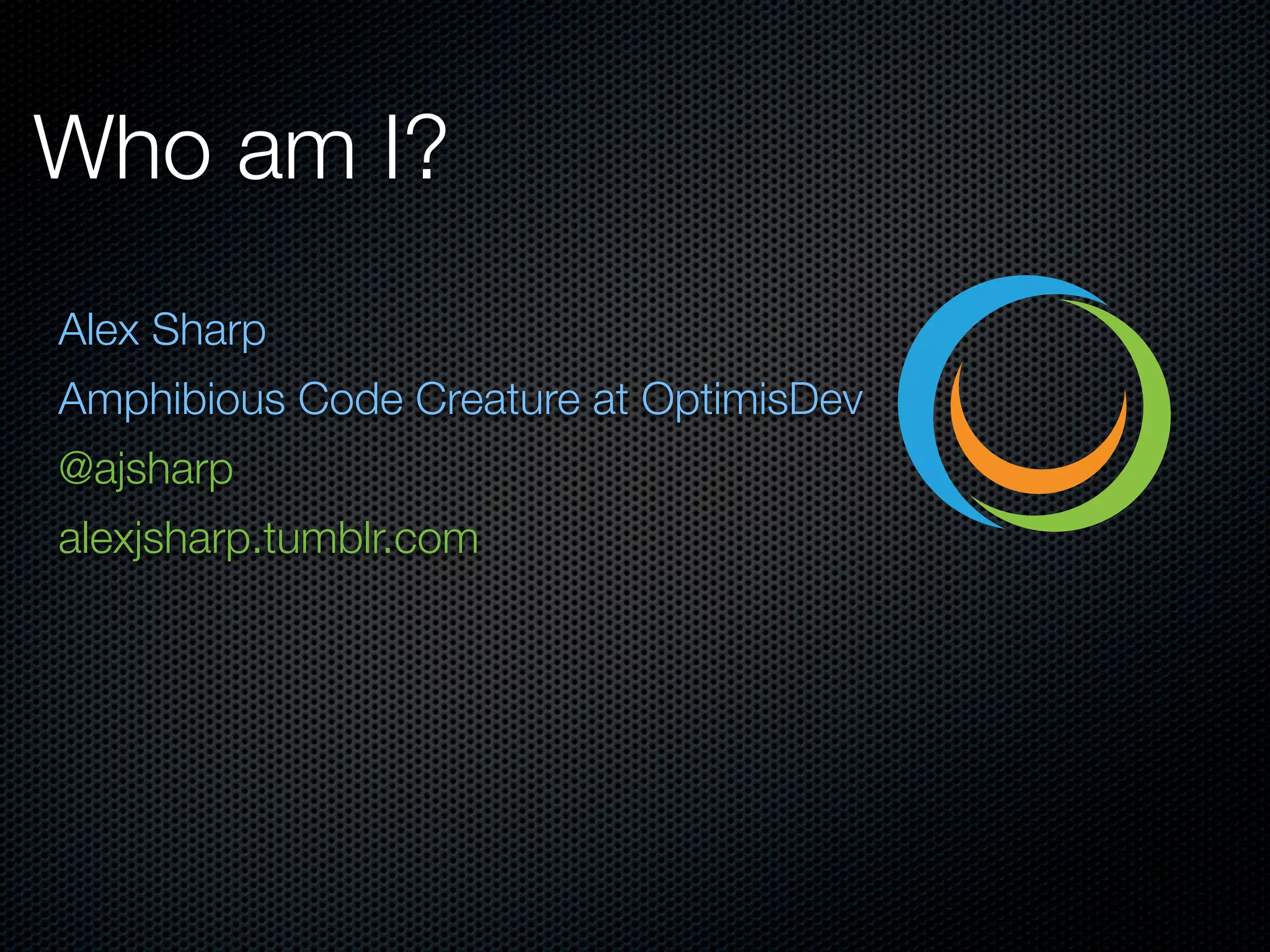
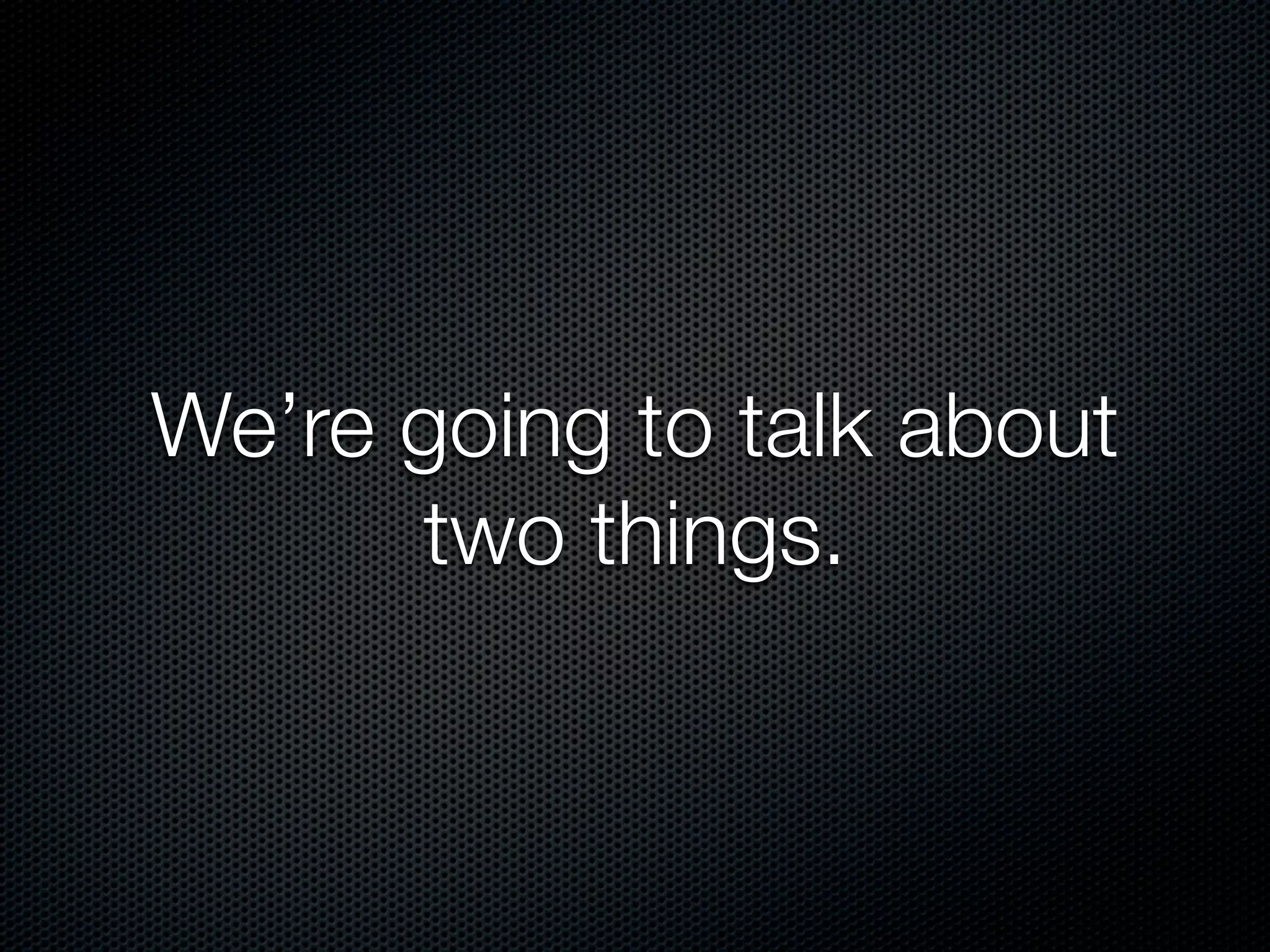
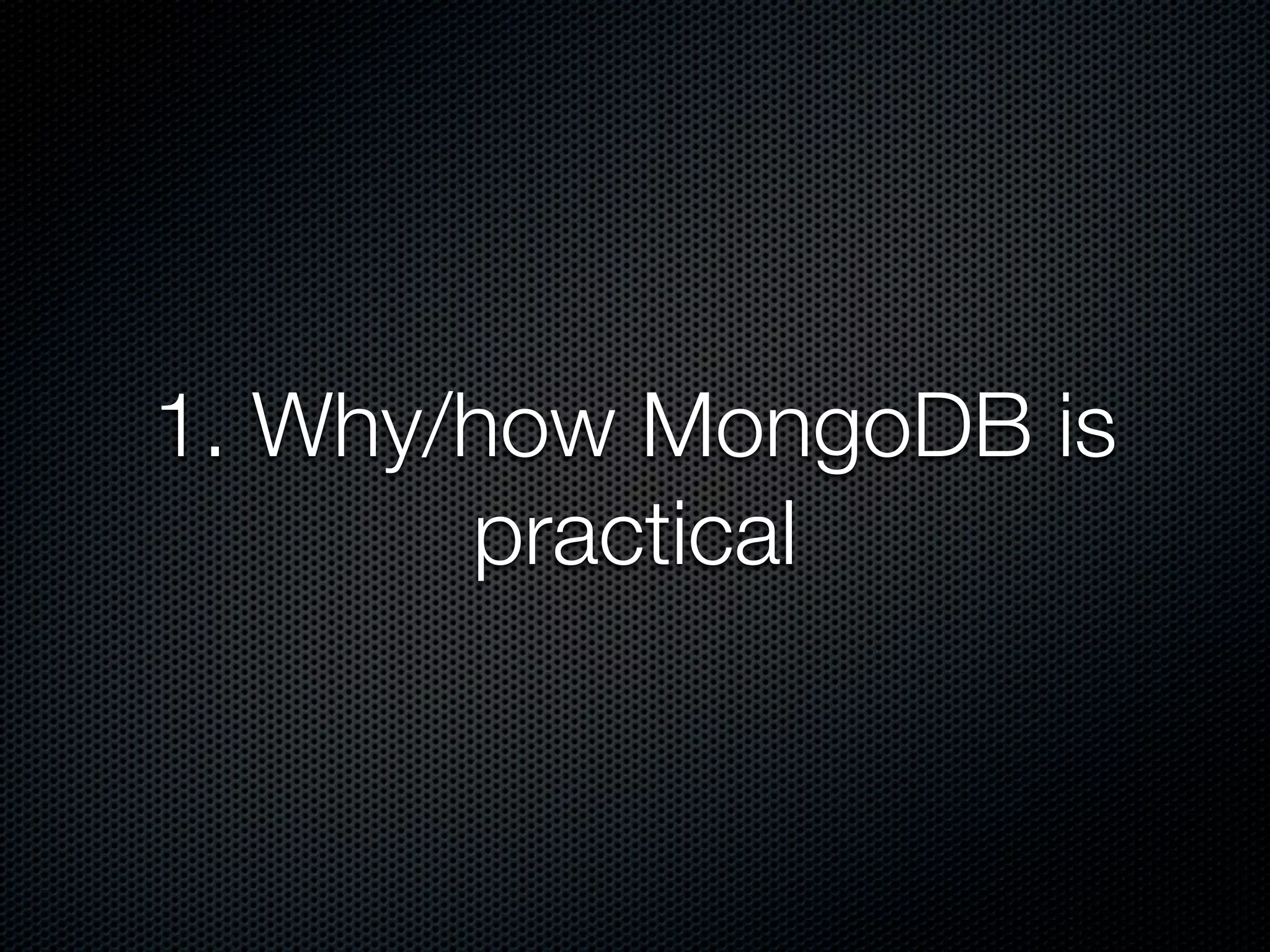
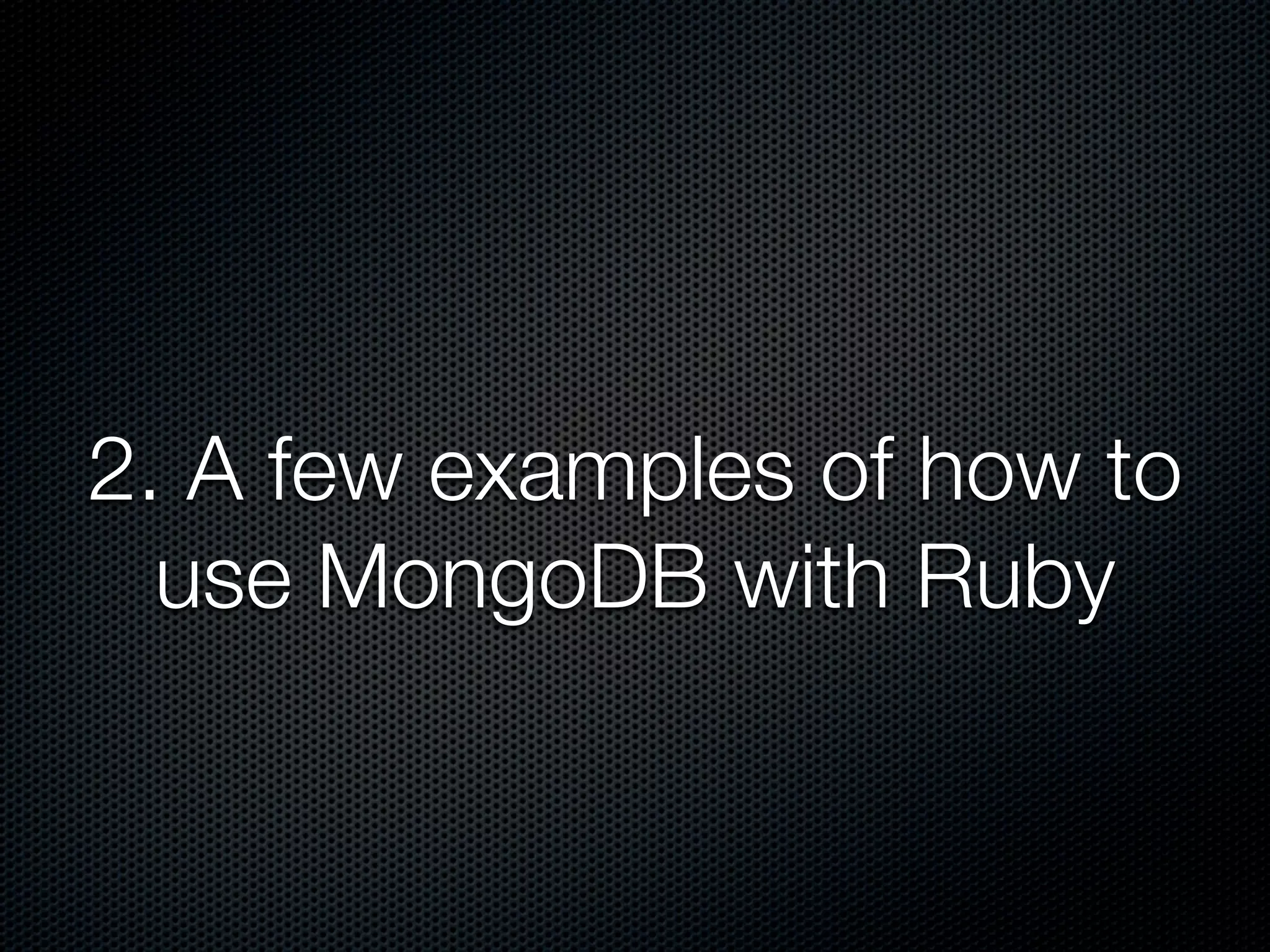
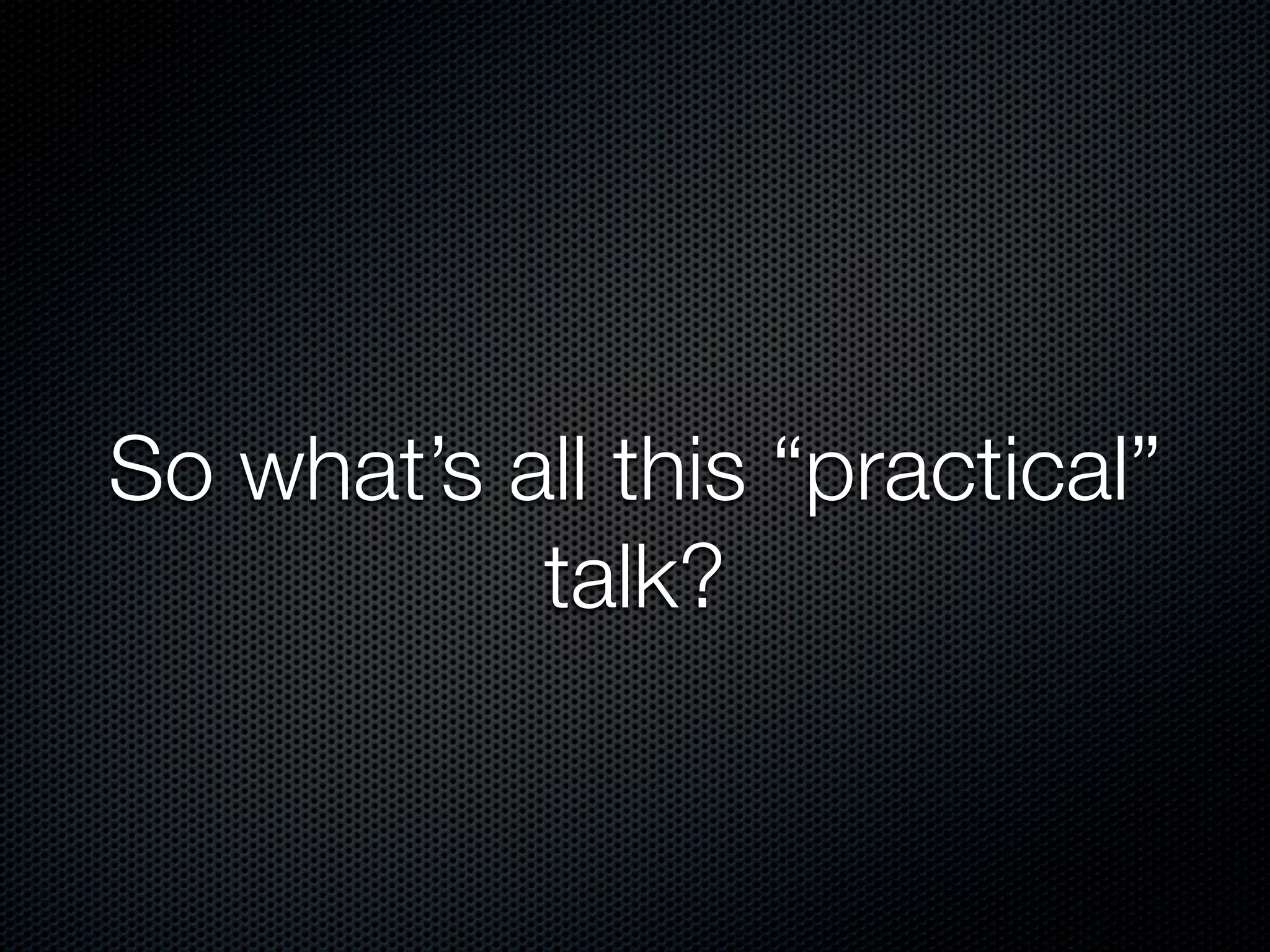
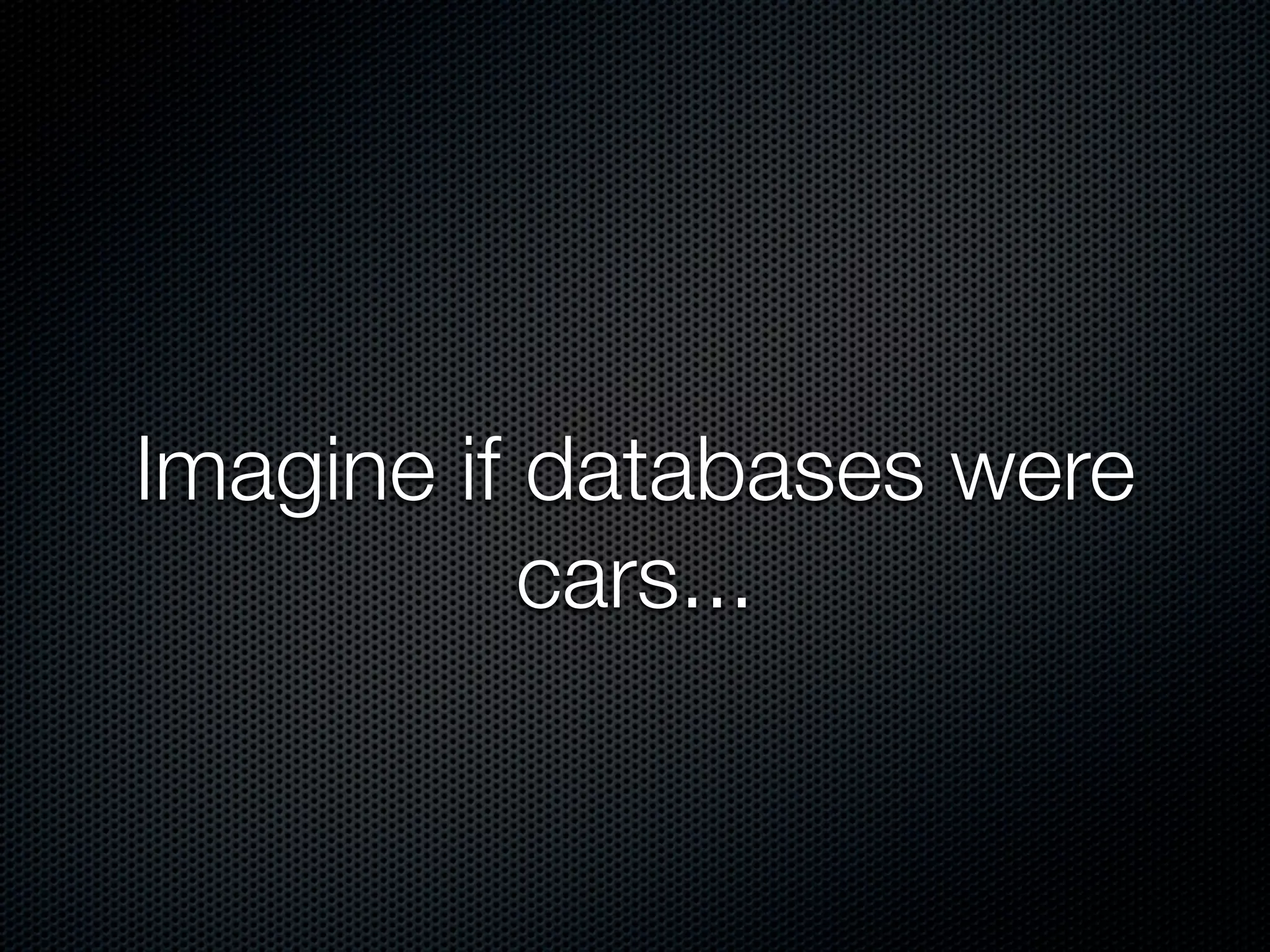
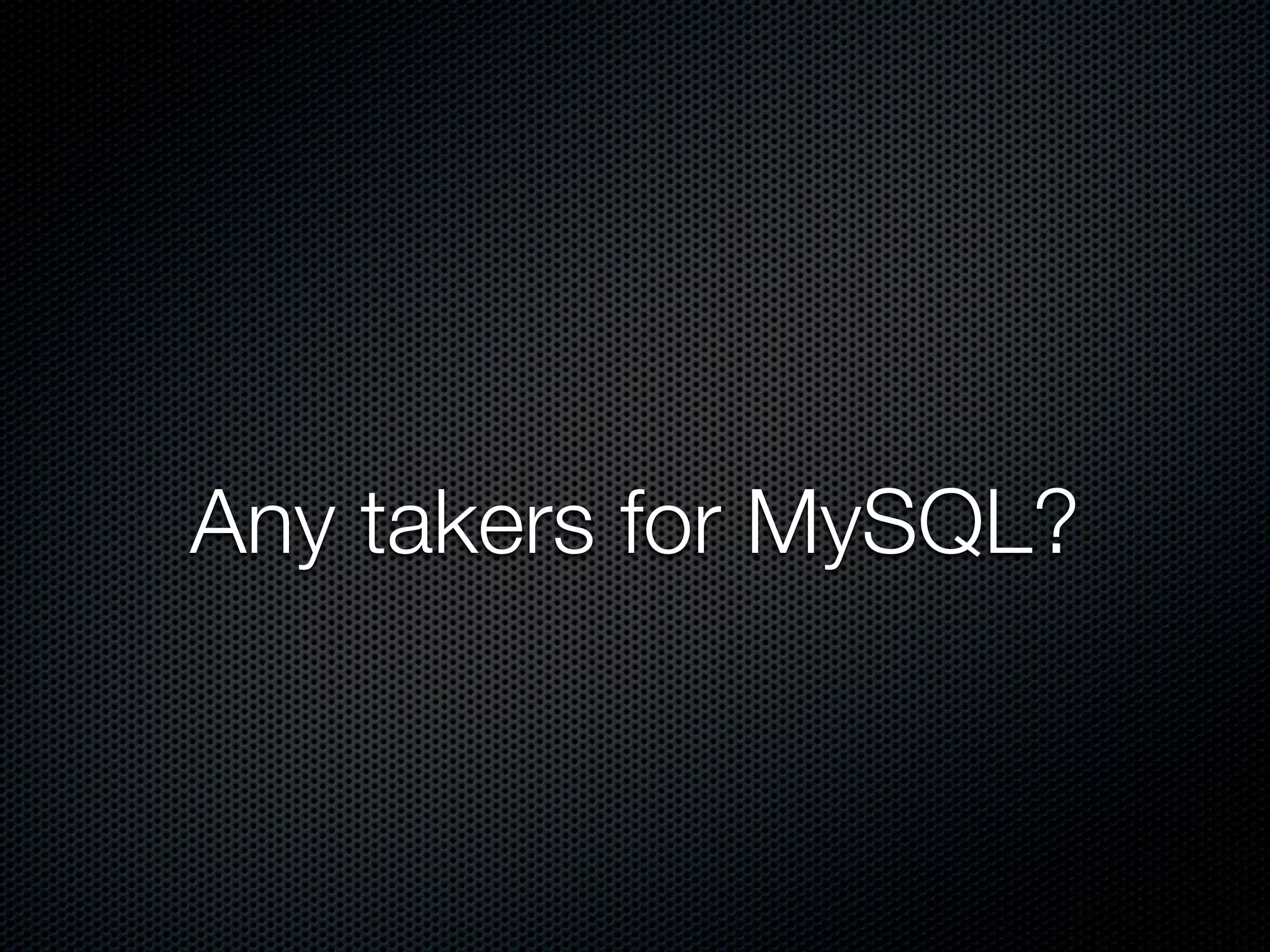
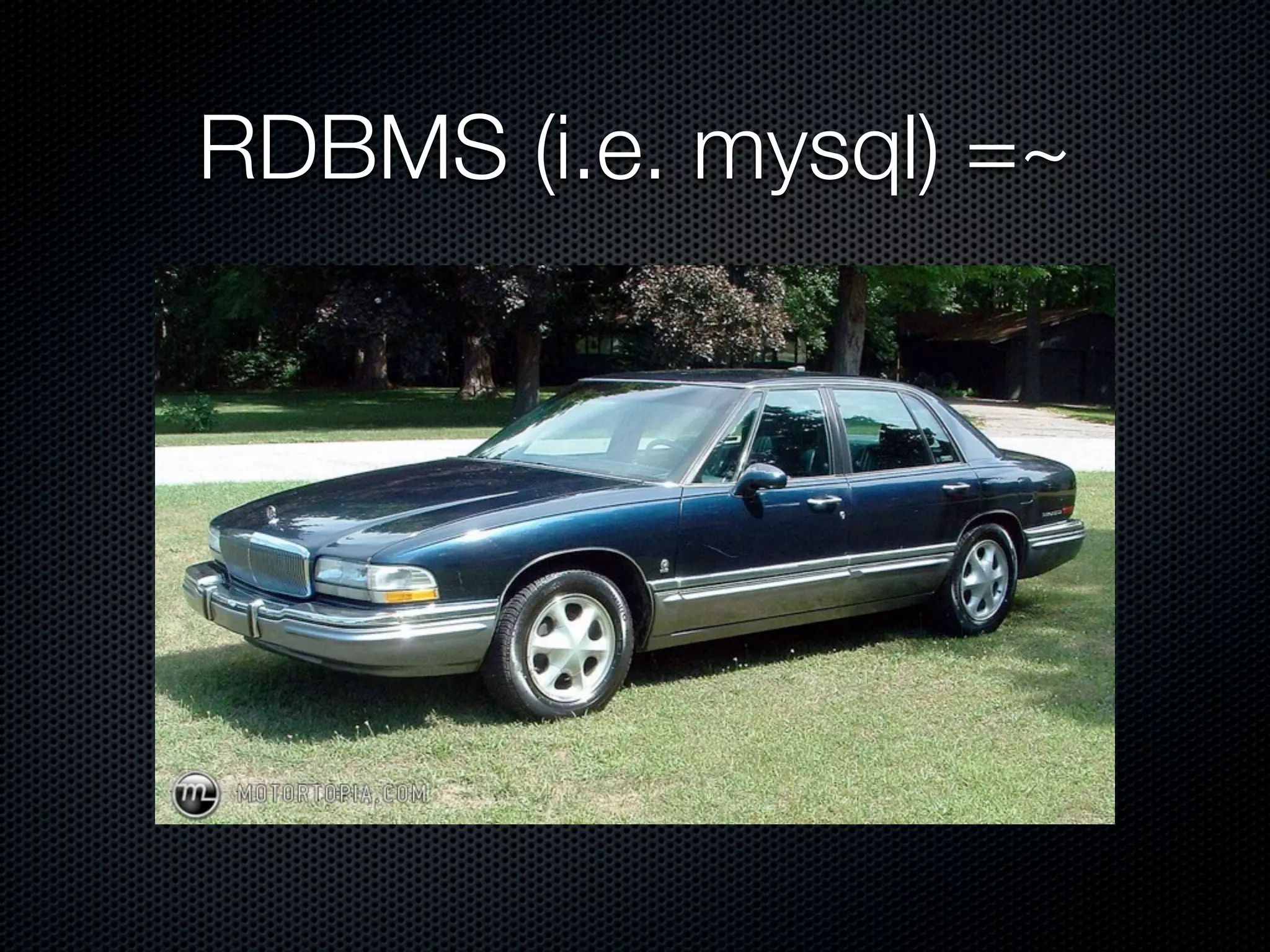
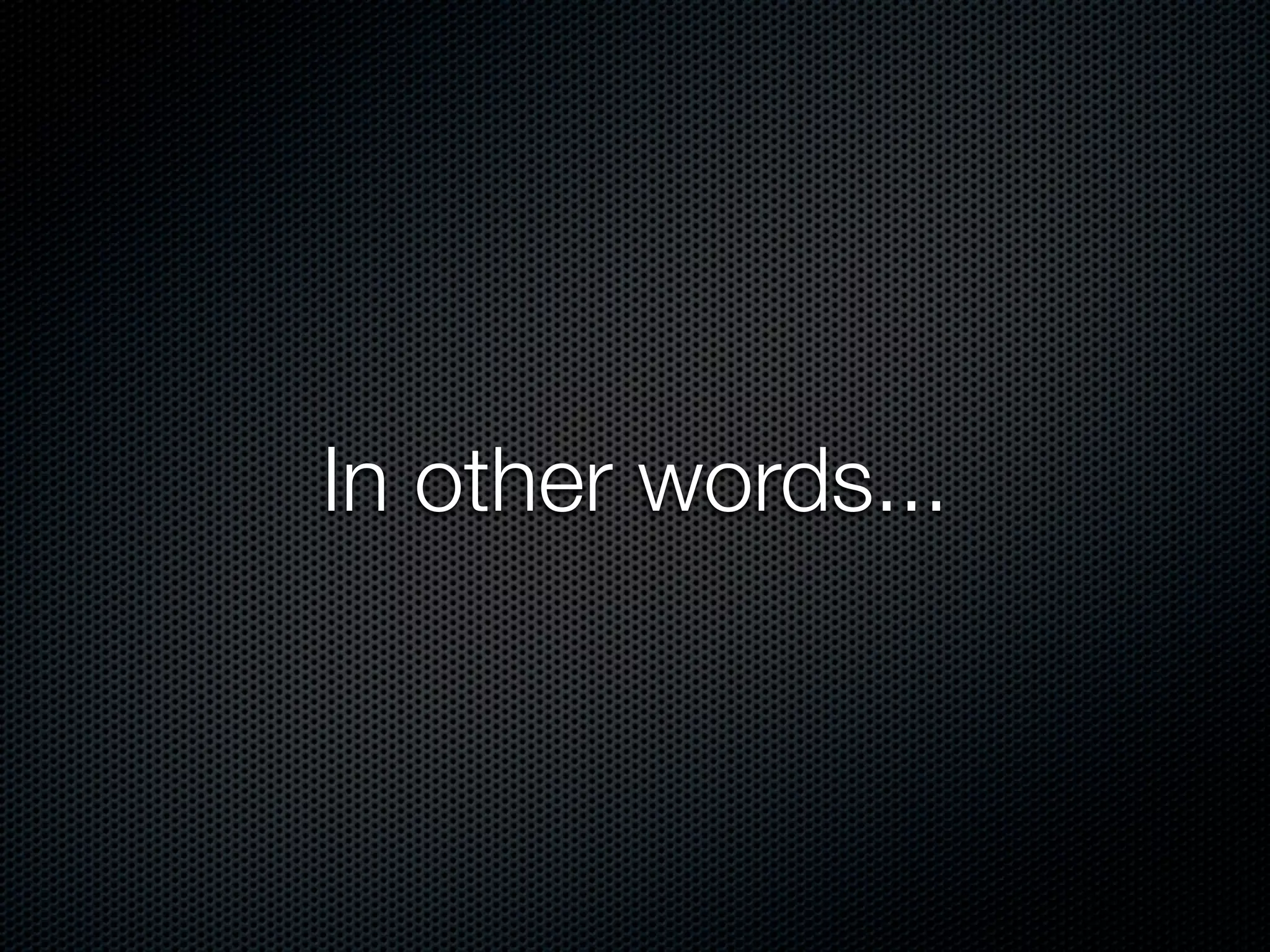
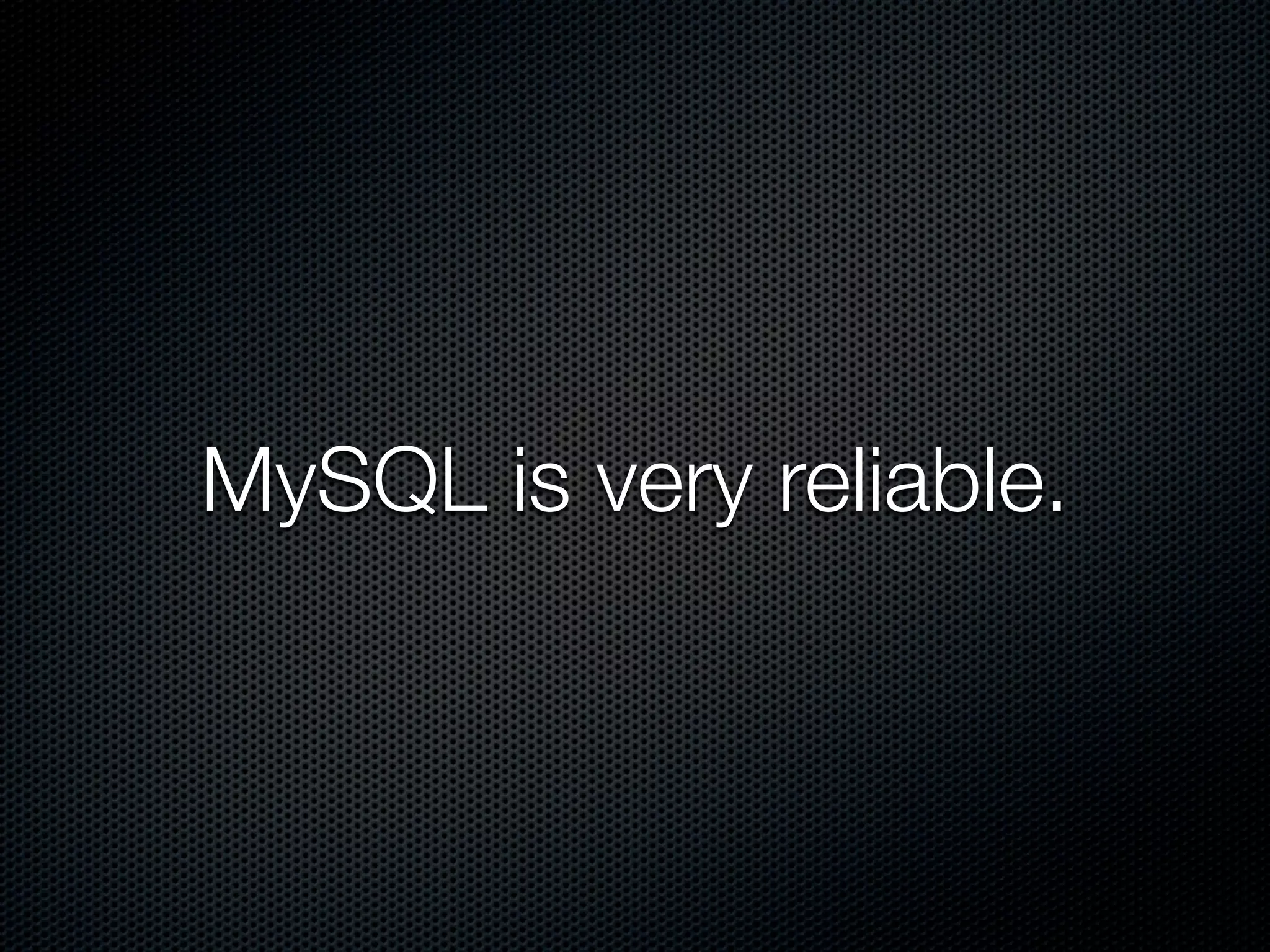
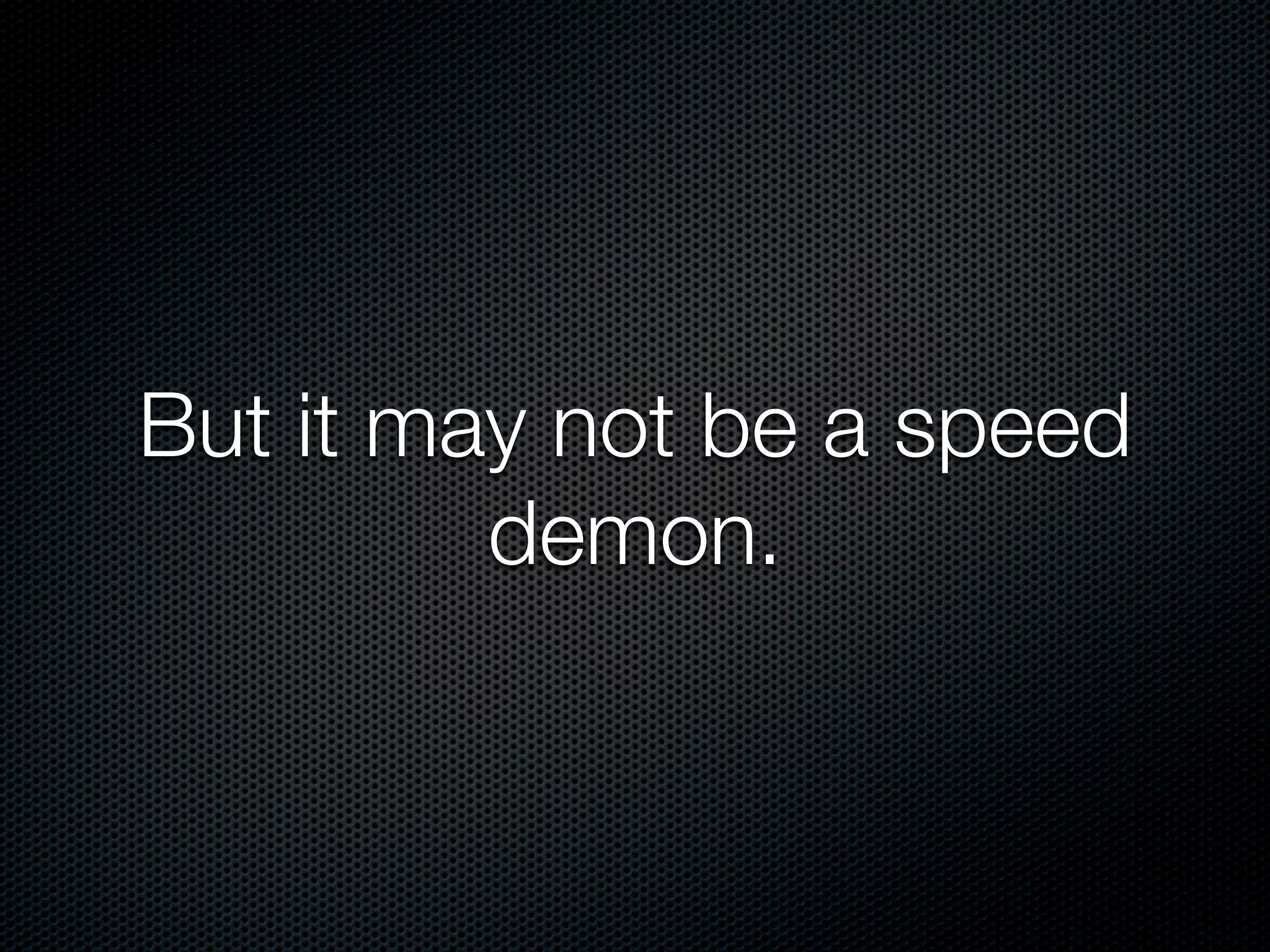
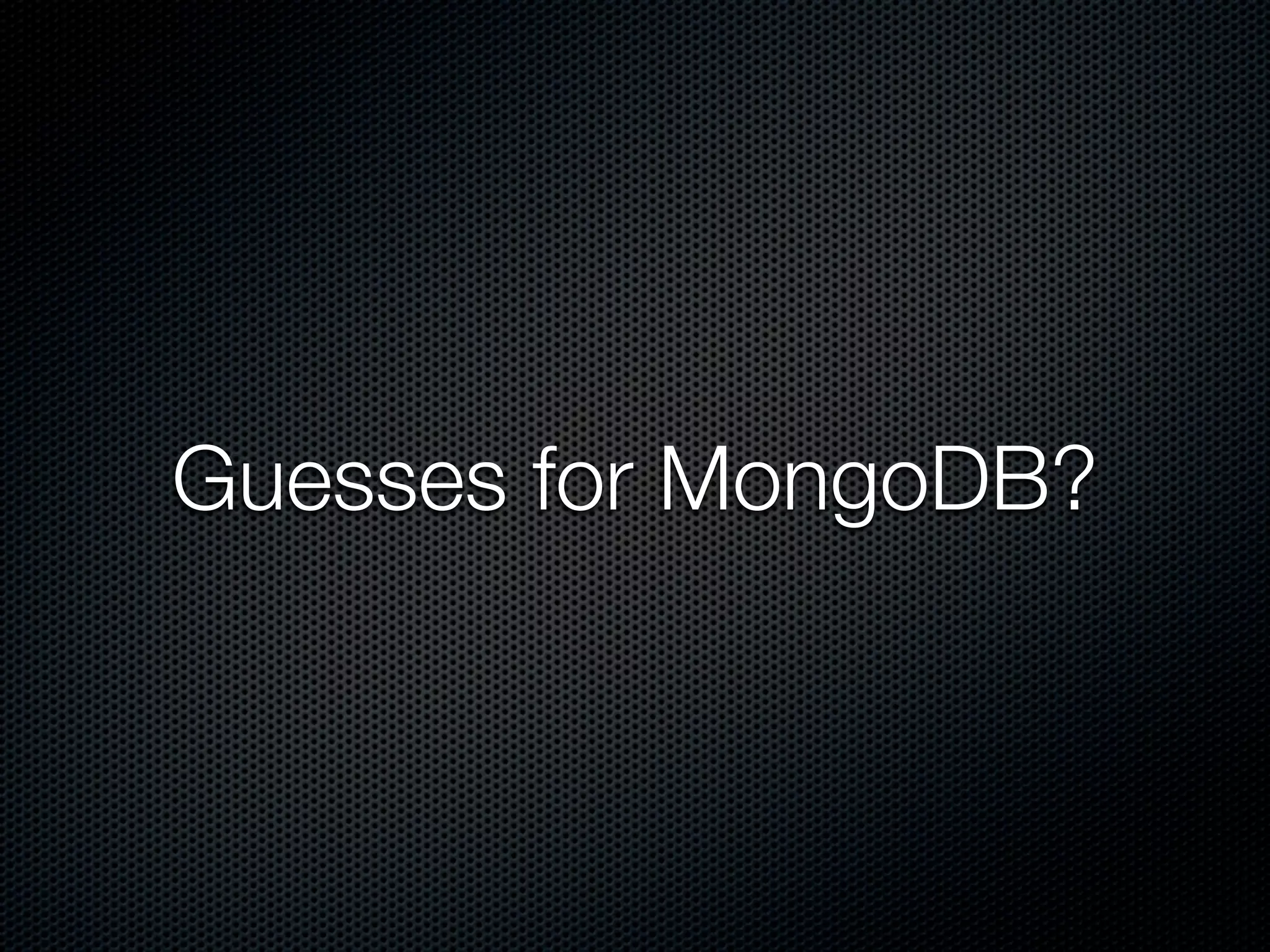
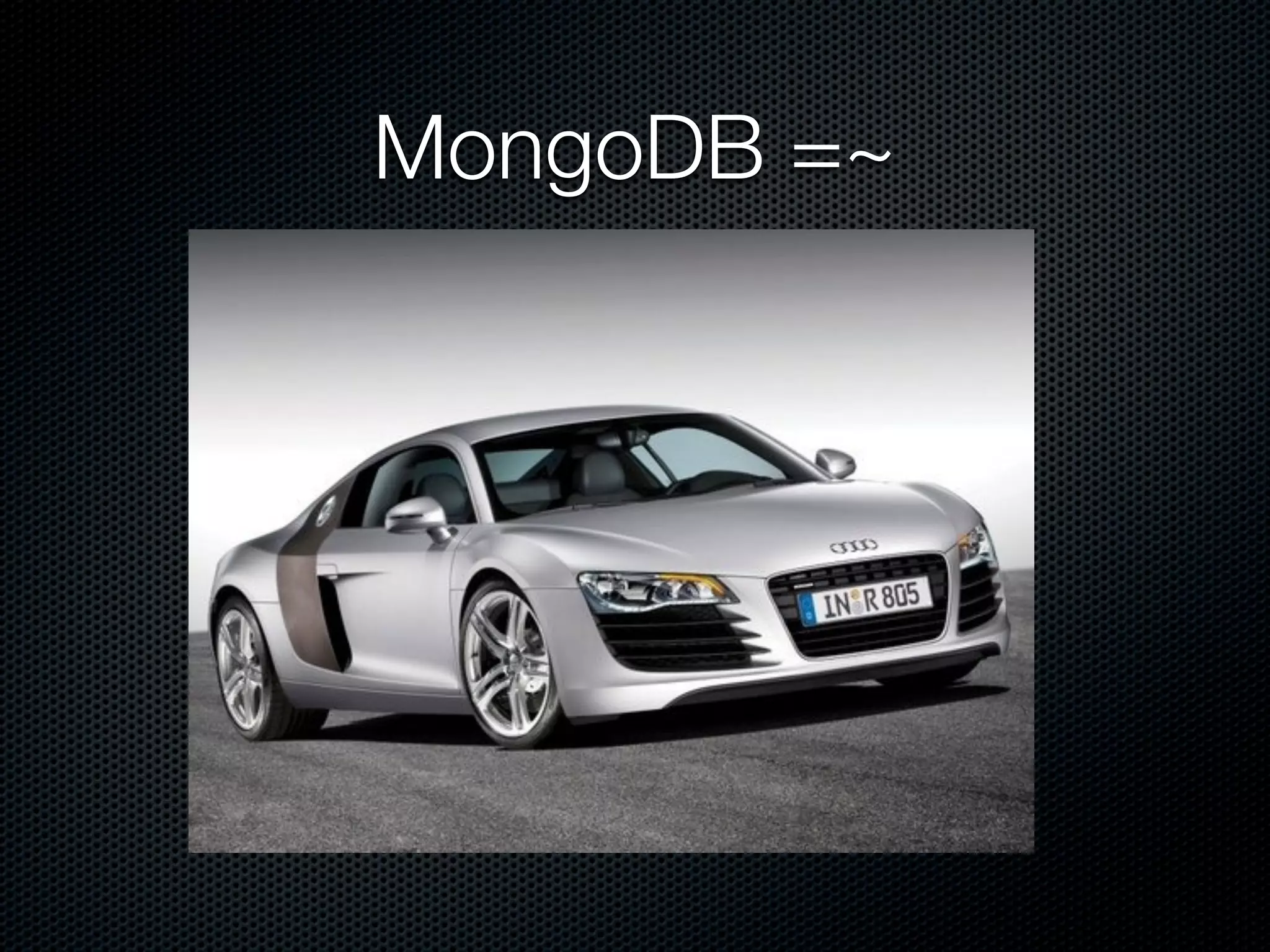
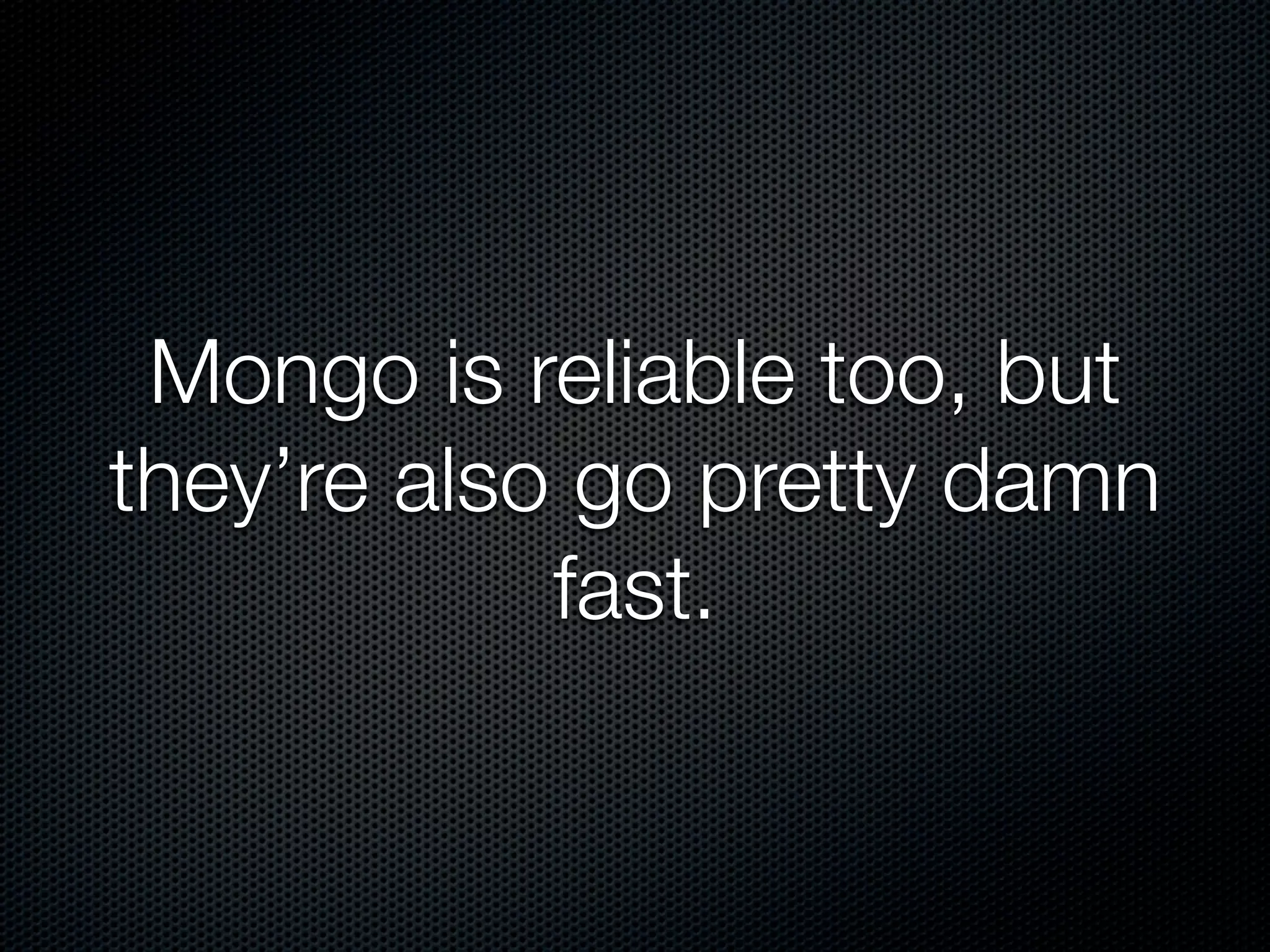
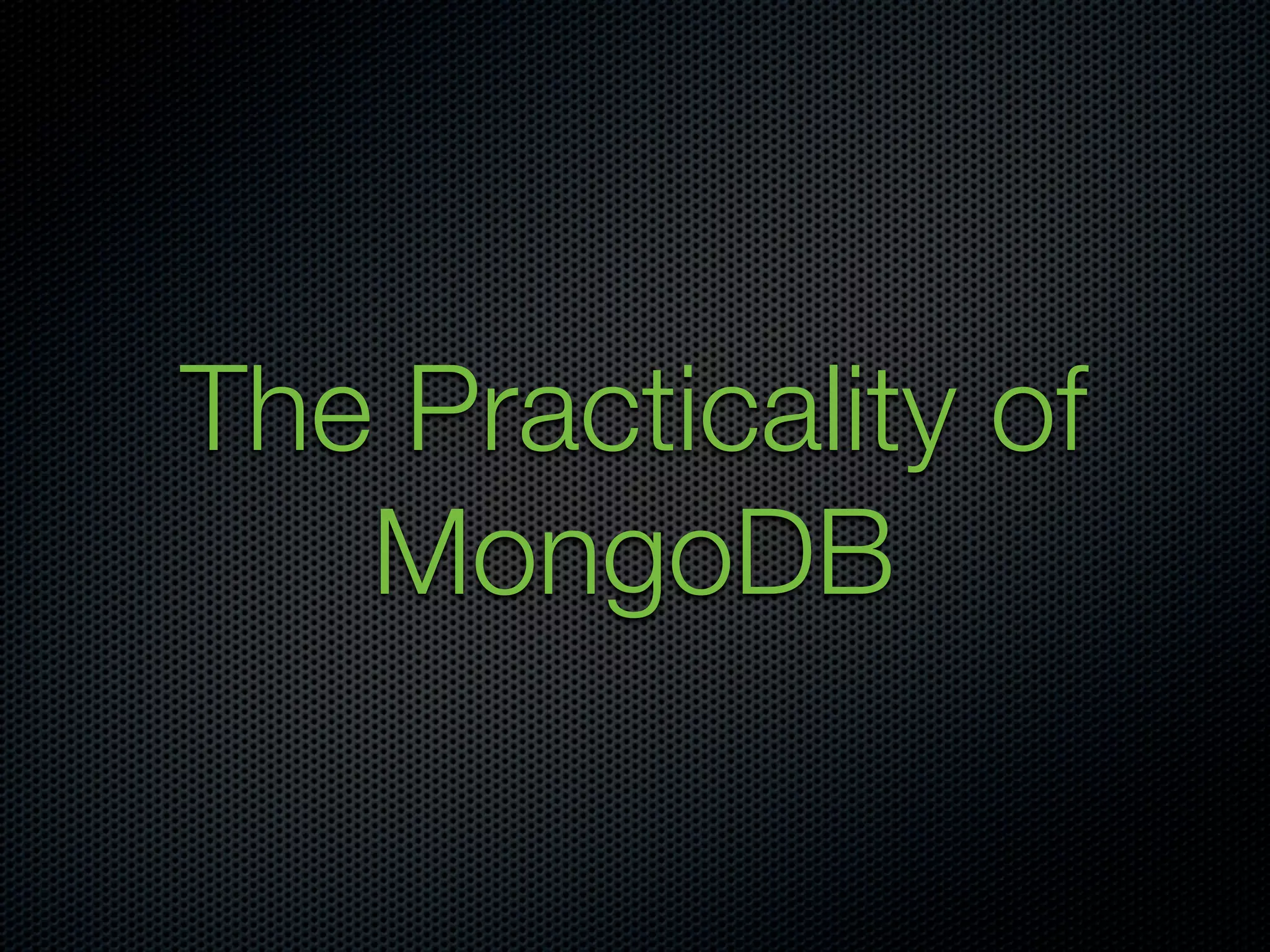
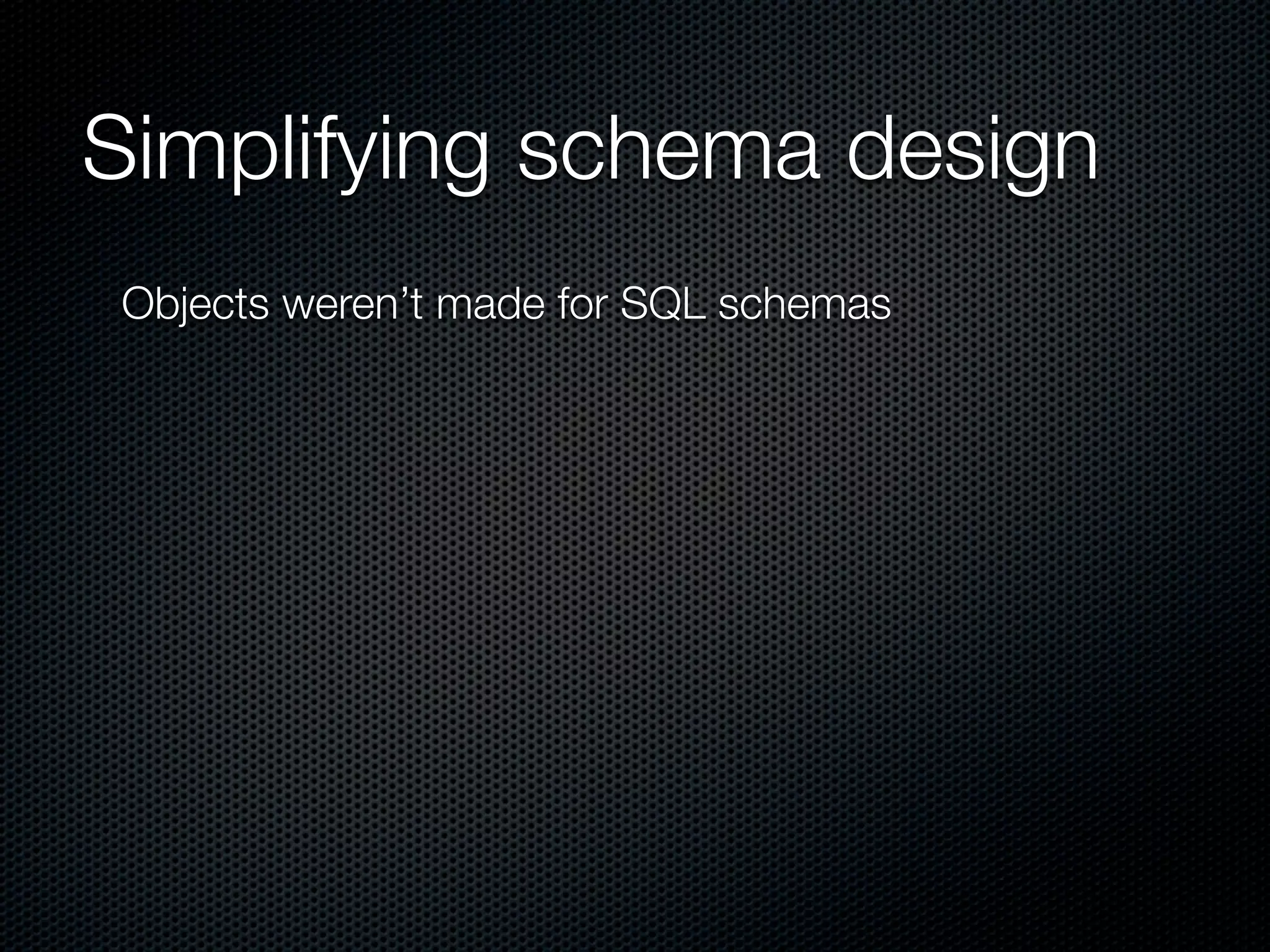
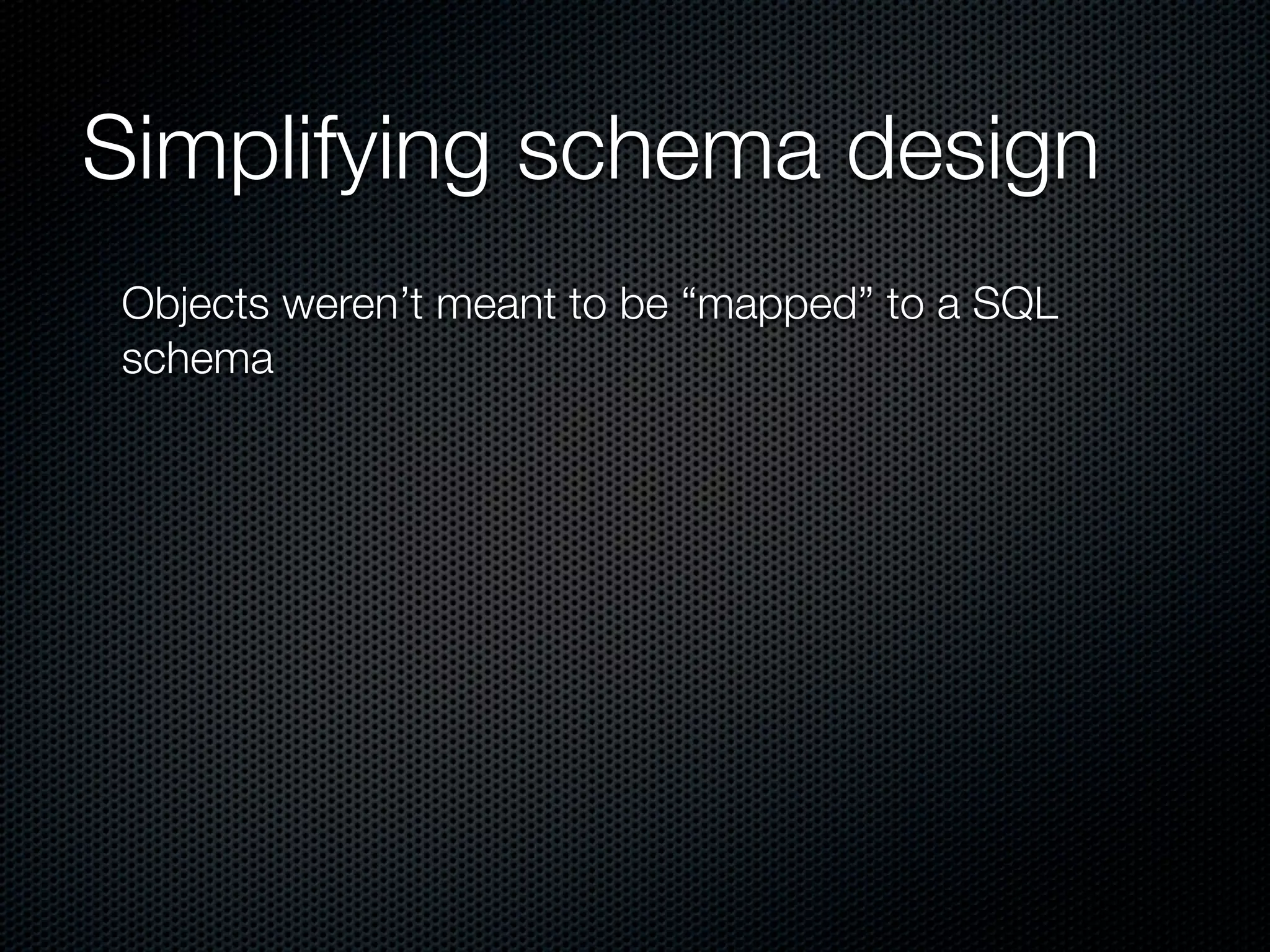
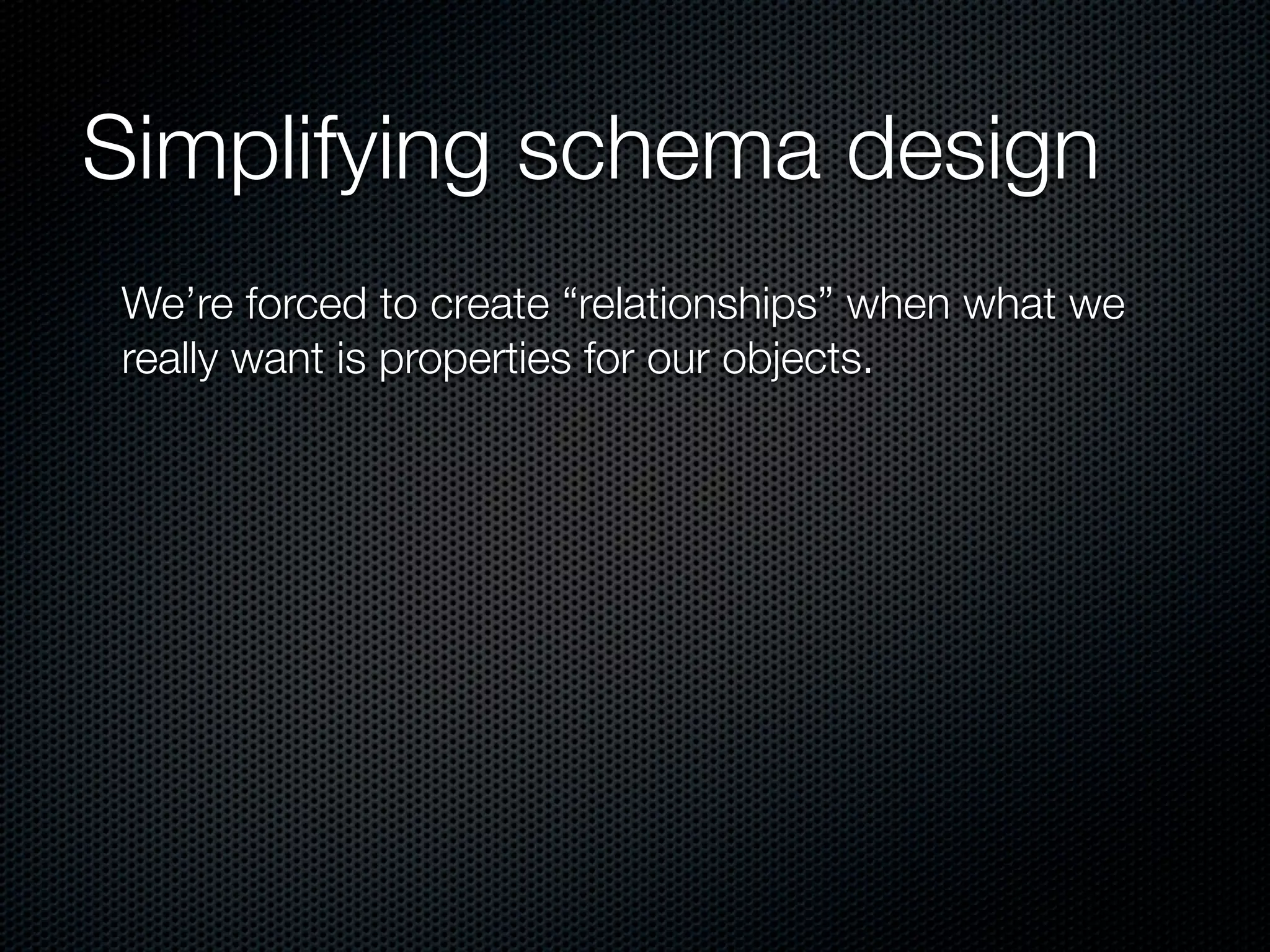
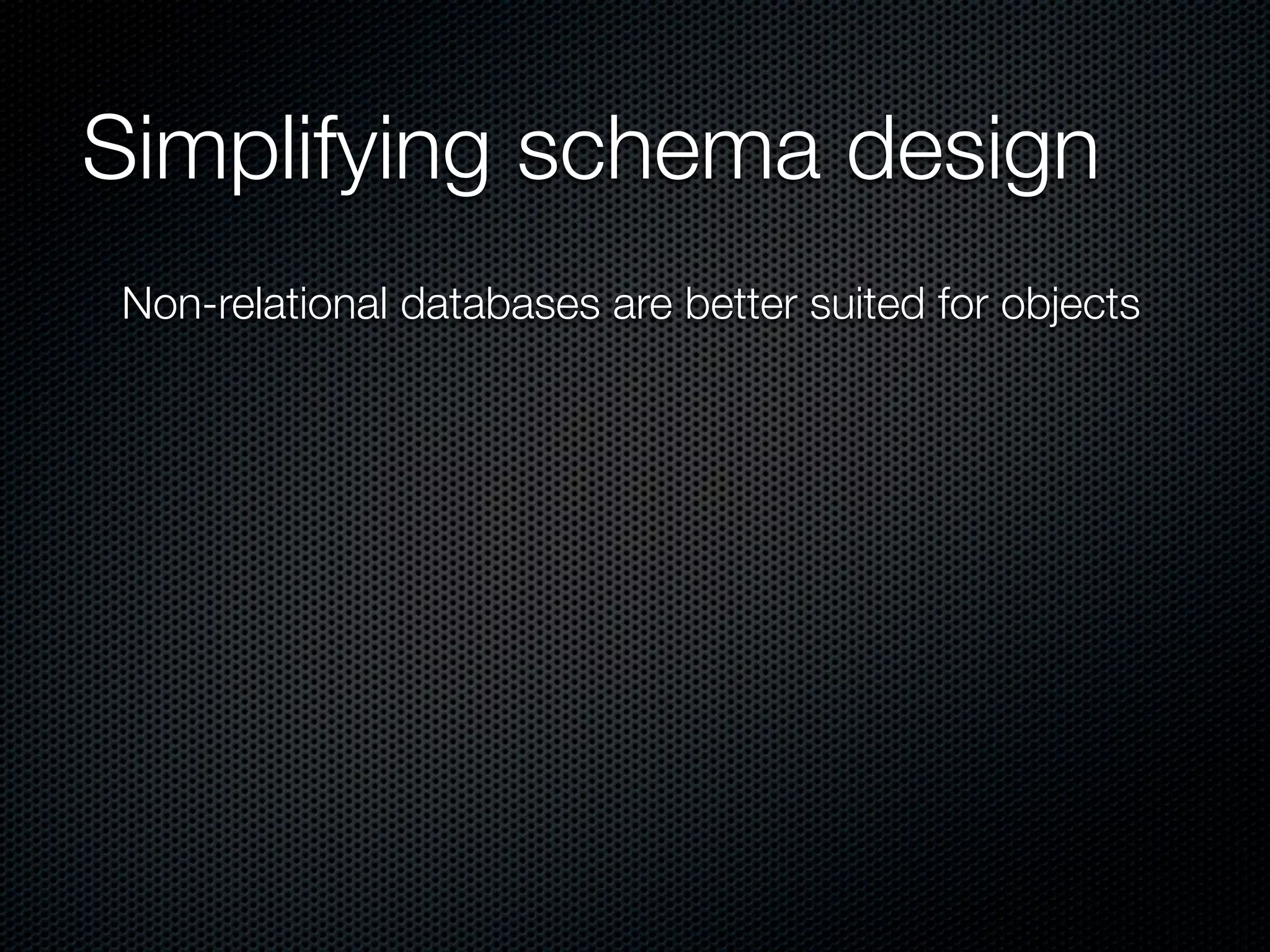
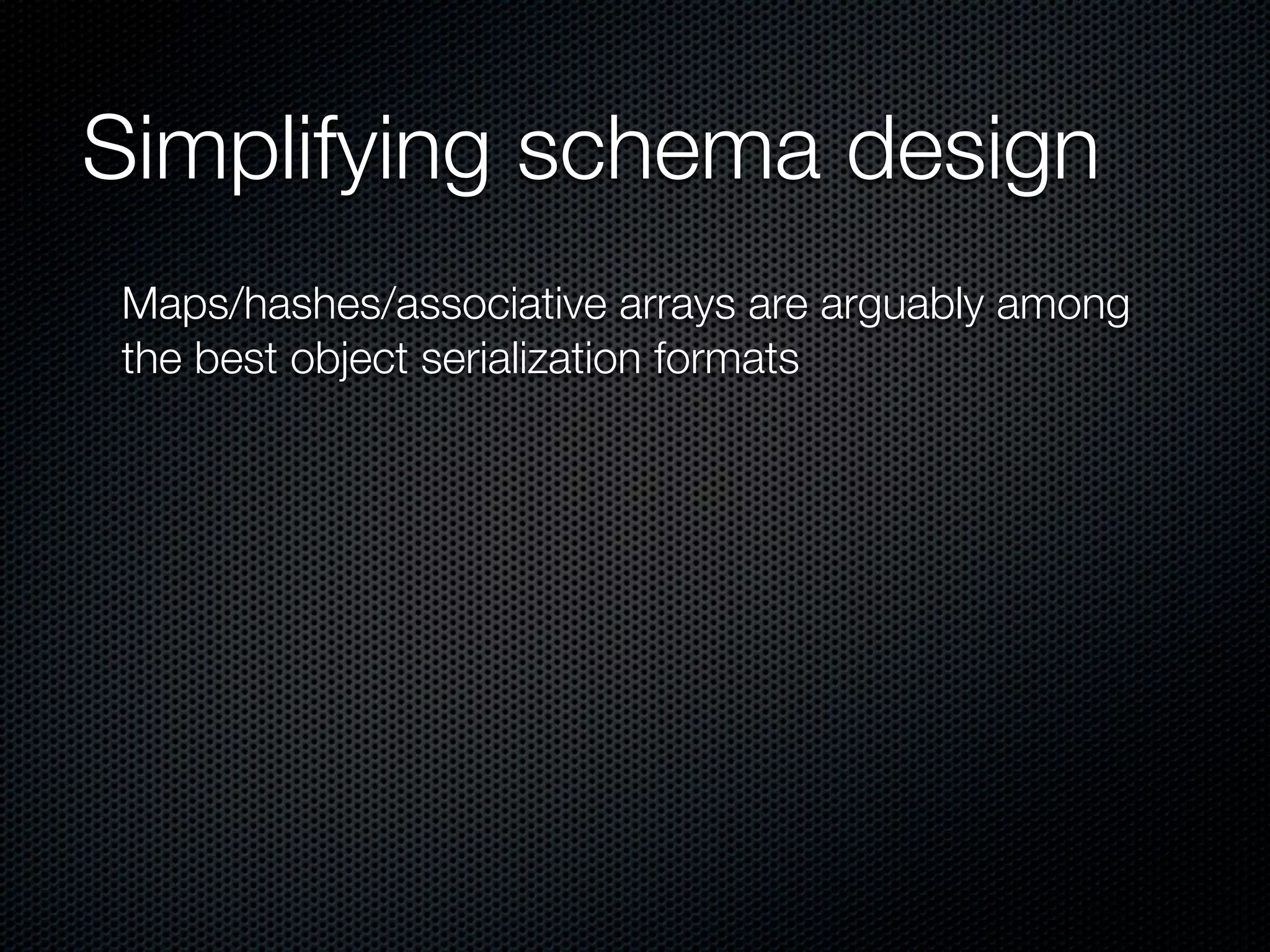
![@alex = Person.new(
:name => "alex",
:friends => [Friend.new("Jim"), Friend.new("Bob")]
)](https://image.slidesharecdn.com/practicalrubyprojectswithmongodb-100408221143-phpapp01/75/Practical-Ruby-Projects-With-Mongo-Db-22-2048.jpg)
![Native ruby object
<Person:0x10017d030 @name="alex",
@friends=
[#<Friend:0x10017d0a8 @name="Jim">,
#<Friend:0x10017d058 @name="Bob">
]>](https://image.slidesharecdn.com/practicalrubyprojectswithmongodb-100408221143-phpapp01/75/Practical-Ruby-Projects-With-Mongo-Db-23-2048.jpg)
![JSON Representation
@alex.to_json
{ name: "alex",
friends: [{ name: "Jim" }, { name: "Bob" }]
}](https://image.slidesharecdn.com/practicalrubyprojectswithmongodb-100408221143-phpapp01/75/Practical-Ruby-Projects-With-Mongo-Db-24-2048.jpg)
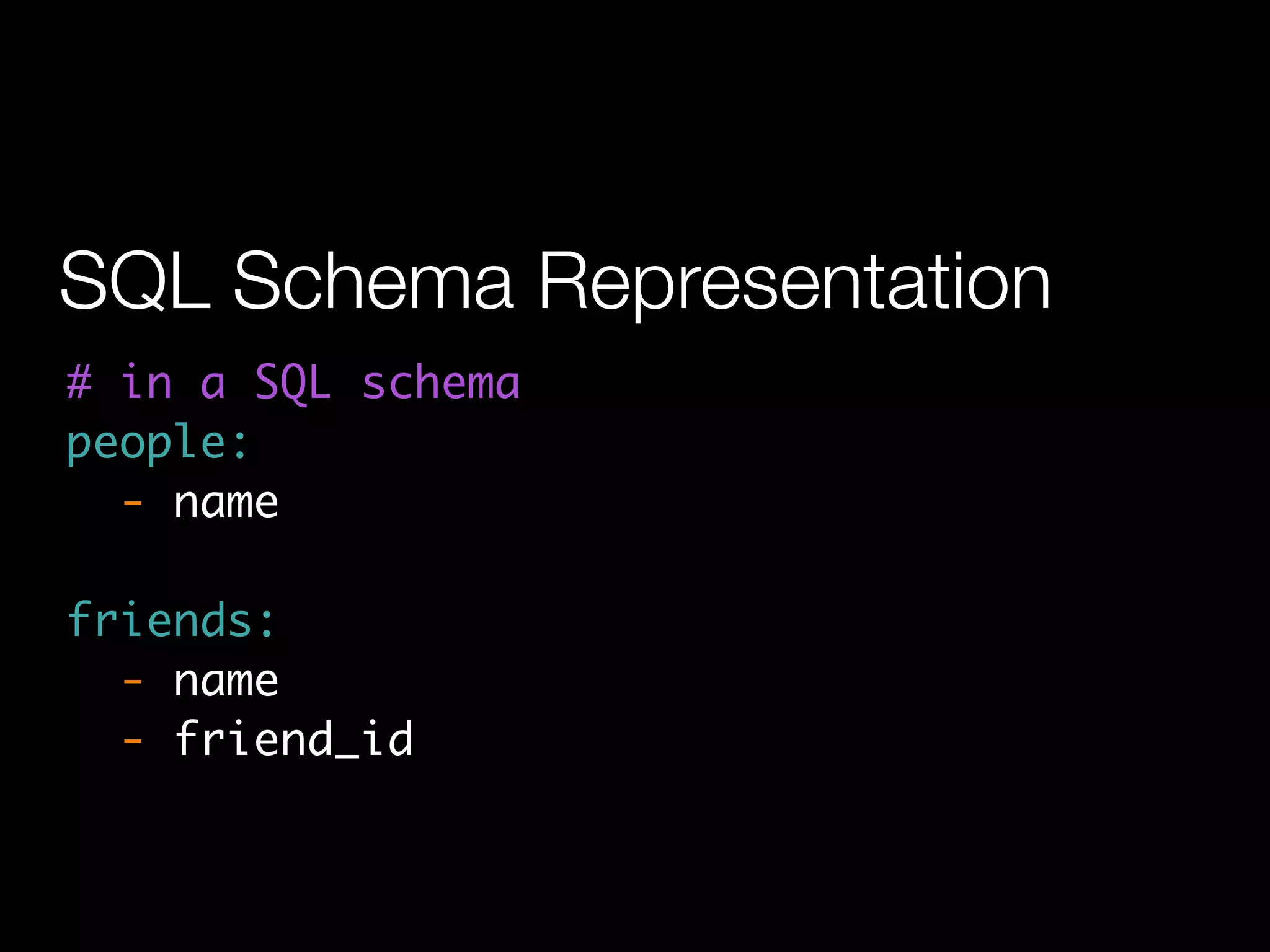
![Ruby -> JSON -> SQL
<Person:0x10017d030 @name="alex",
@friends=
Ruby [#<Friend:0x10017d0a8 @name="Jim">,
#<Friend:0x10017d058 @name="Bob">
]>
@alex.to_json
JSON { name: "alex",
friends: [{ name: "Jim" }, { name: "Bob" }]
}
people:
- name
SQL
friends:
- name
- friend_id](https://image.slidesharecdn.com/practicalrubyprojectswithmongodb-100408221143-phpapp01/75/Practical-Ruby-Projects-With-Mongo-Db-26-2048.jpg)
![Ruby -> JSON -> SQL
<Person:0x10017d030 @name="alex",
@friends=
Ruby [#<Friend:0x10017d0a8 @name="Jim">,
#<Friend:0x10017d058 @name="Bob">
]>
@alex.to_json
JSON { name: "alex",
friends: [{ name: "Jim" }, { name: "Bob" }]
}
people:
- name Feels like we’re having
SQL to work too hard here
friends:
- name
- friend_id](https://image.slidesharecdn.com/practicalrubyprojectswithmongodb-100408221143-phpapp01/75/Practical-Ruby-Projects-With-Mongo-Db-27-2048.jpg)
![Mongo Representation
@alex.to_json
{ name: "alex",
friends: [{ name: "Jim" }, { name: "Bob" }]
}](https://image.slidesharecdn.com/practicalrubyprojectswithmongodb-100408221143-phpapp01/75/Practical-Ruby-Projects-With-Mongo-Db-28-2048.jpg)
![Mongo Representation
@alex.to_json
{ name: "alex",
friends: [{ name: "Jim" }, { name: "Bob" }]
}
In Mongo, friends is an “embedded document”](https://image.slidesharecdn.com/practicalrubyprojectswithmongodb-100408221143-phpapp01/75/Practical-Ruby-Projects-With-Mongo-Db-29-2048.jpg)
![Mongo Representation
@alex.to_json
{ name: "alex",
friends: [{ name: "Jim" }, { name: "Bob" }]
}
Great for one-to-many associations](https://image.slidesharecdn.com/practicalrubyprojectswithmongodb-100408221143-phpapp01/75/Practical-Ruby-Projects-With-Mongo-Db-30-2048.jpg)
![Mongo Representation
@alex.to_json
{ name: "alex",
friends: [{ name: "Jim" }, { name: "Bob" }]
}
No JOINS required.](https://image.slidesharecdn.com/practicalrubyprojectswithmongodb-100408221143-phpapp01/75/Practical-Ruby-Projects-With-Mongo-Db-31-2048.jpg)
![Mongo Representation
@alex.to_json
{ name: "alex",
friends: [{ name: "Jim" }, { name: "Bob" }]
}
This is a good thing for scalability, because
JOINS limit our ability to horizontally scale.](https://image.slidesharecdn.com/practicalrubyprojectswithmongodb-100408221143-phpapp01/75/Practical-Ruby-Projects-With-Mongo-Db-32-2048.jpg)
![Mongo Representation
@alex.to_json
{ name: "alex",
friends: [{ name: "Jim" }, { name: "Bob" }]
}
But more importantly, this seems more intuitive
than messing with foreign keys](https://image.slidesharecdn.com/practicalrubyprojectswithmongodb-100408221143-phpapp01/75/Practical-Ruby-Projects-With-Mongo-Db-33-2048.jpg)
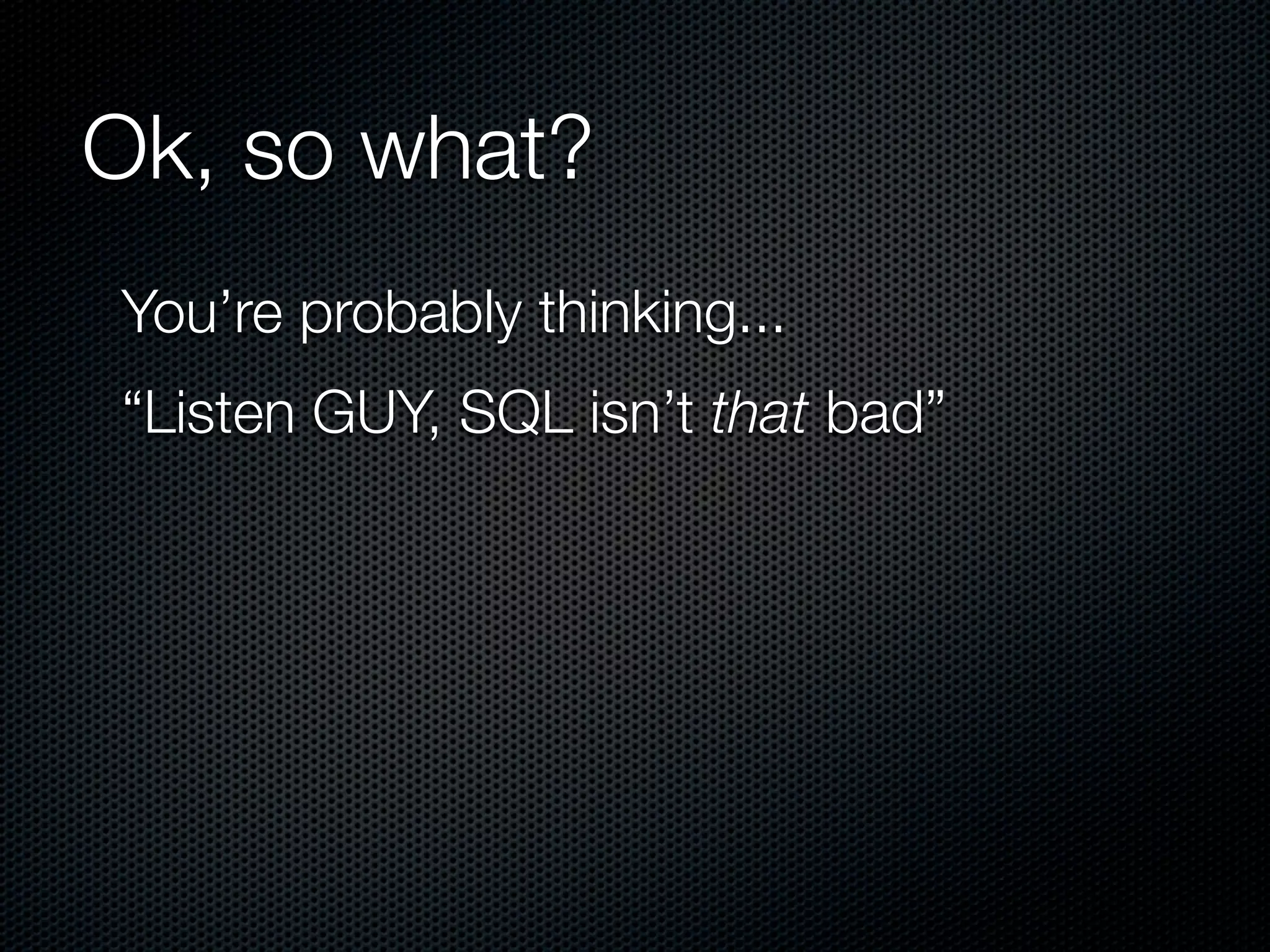
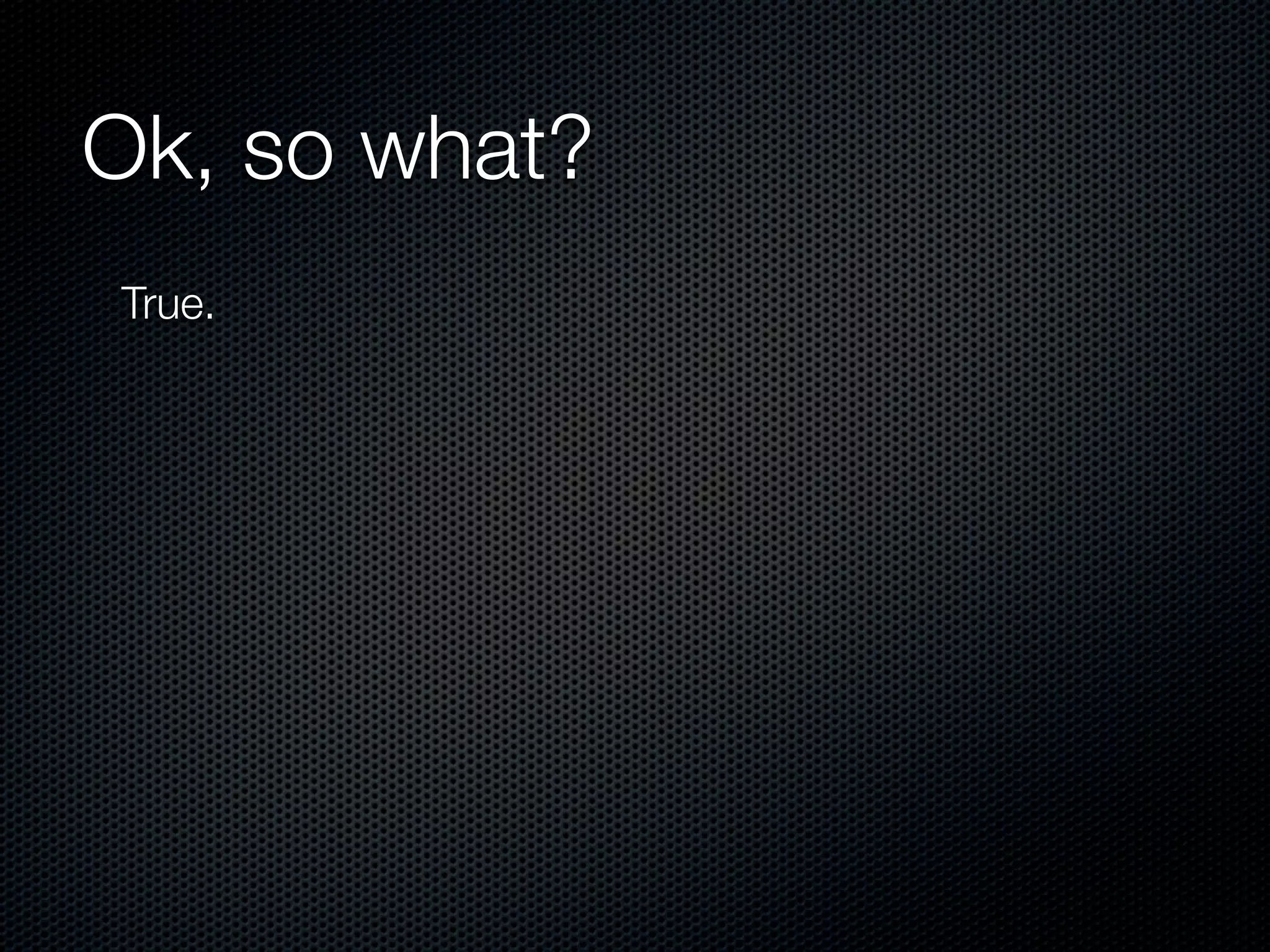
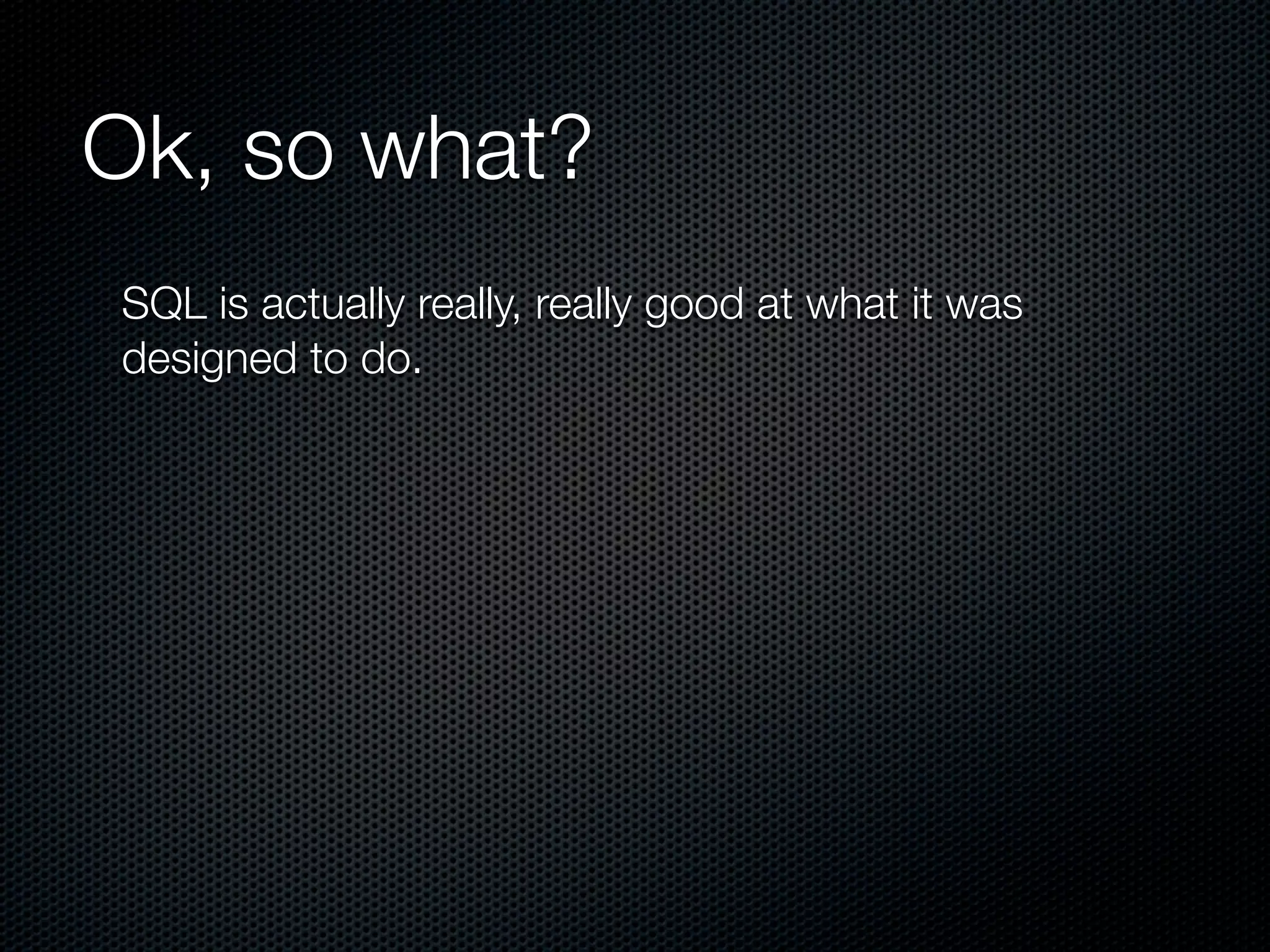
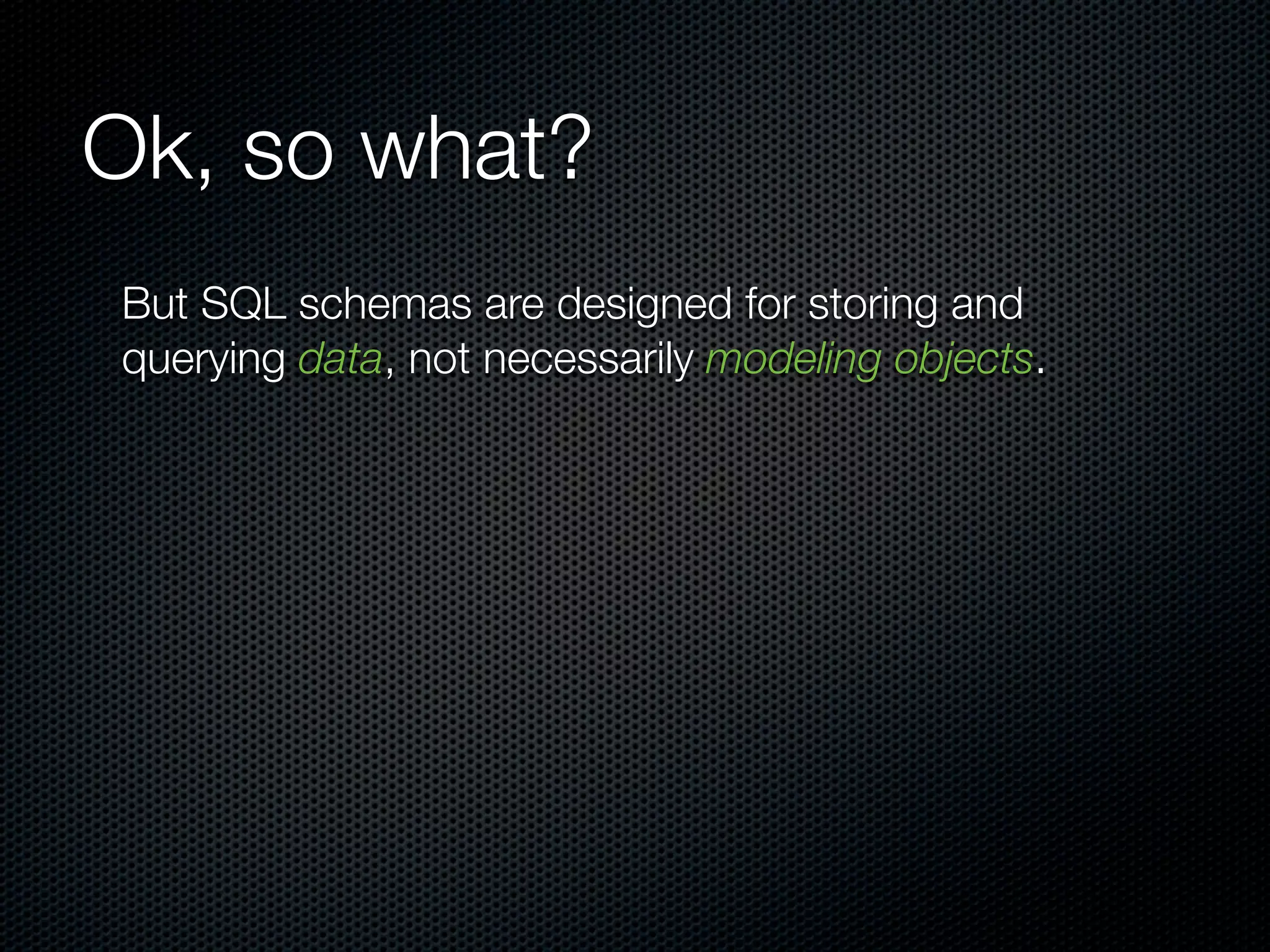
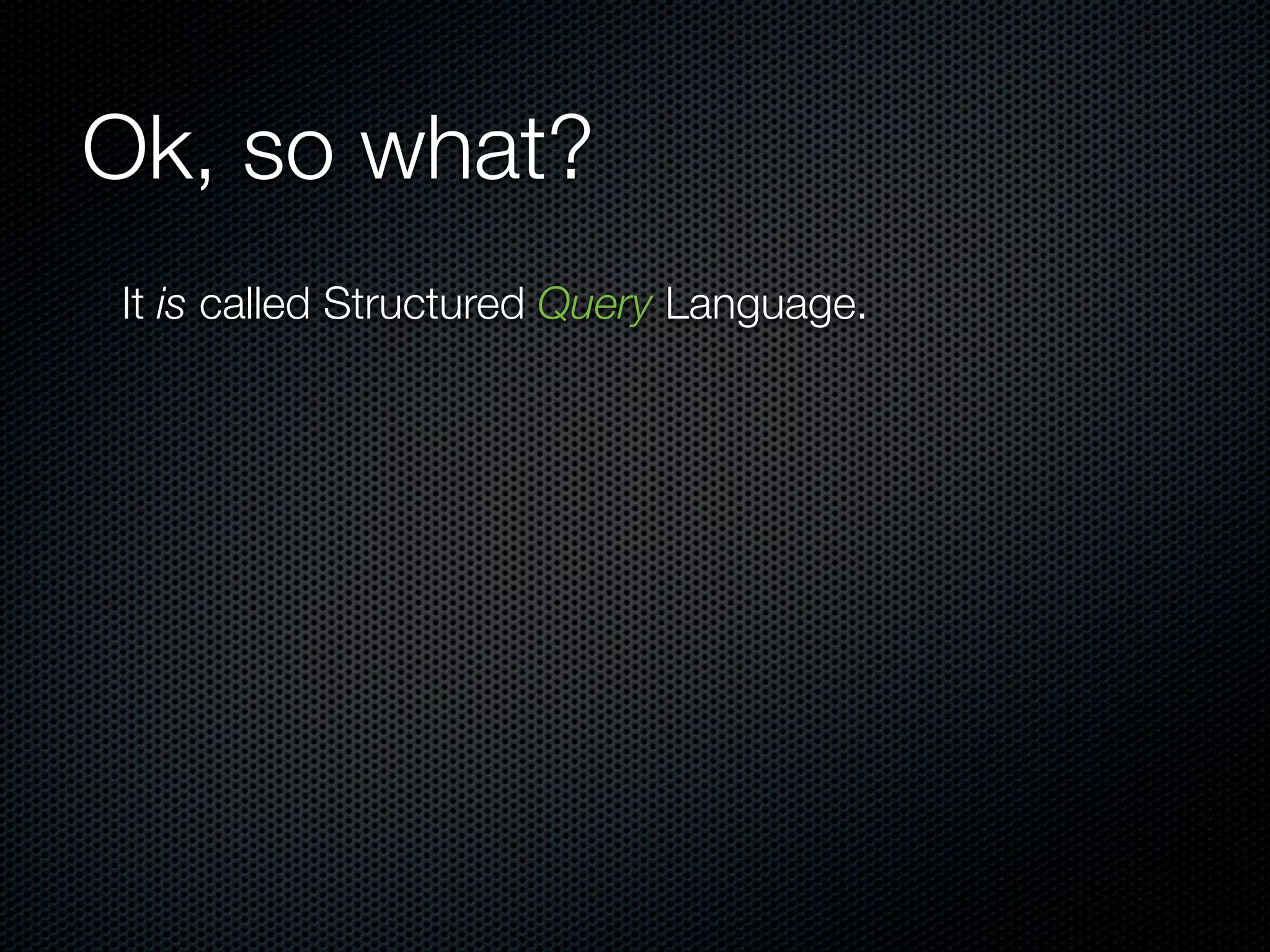
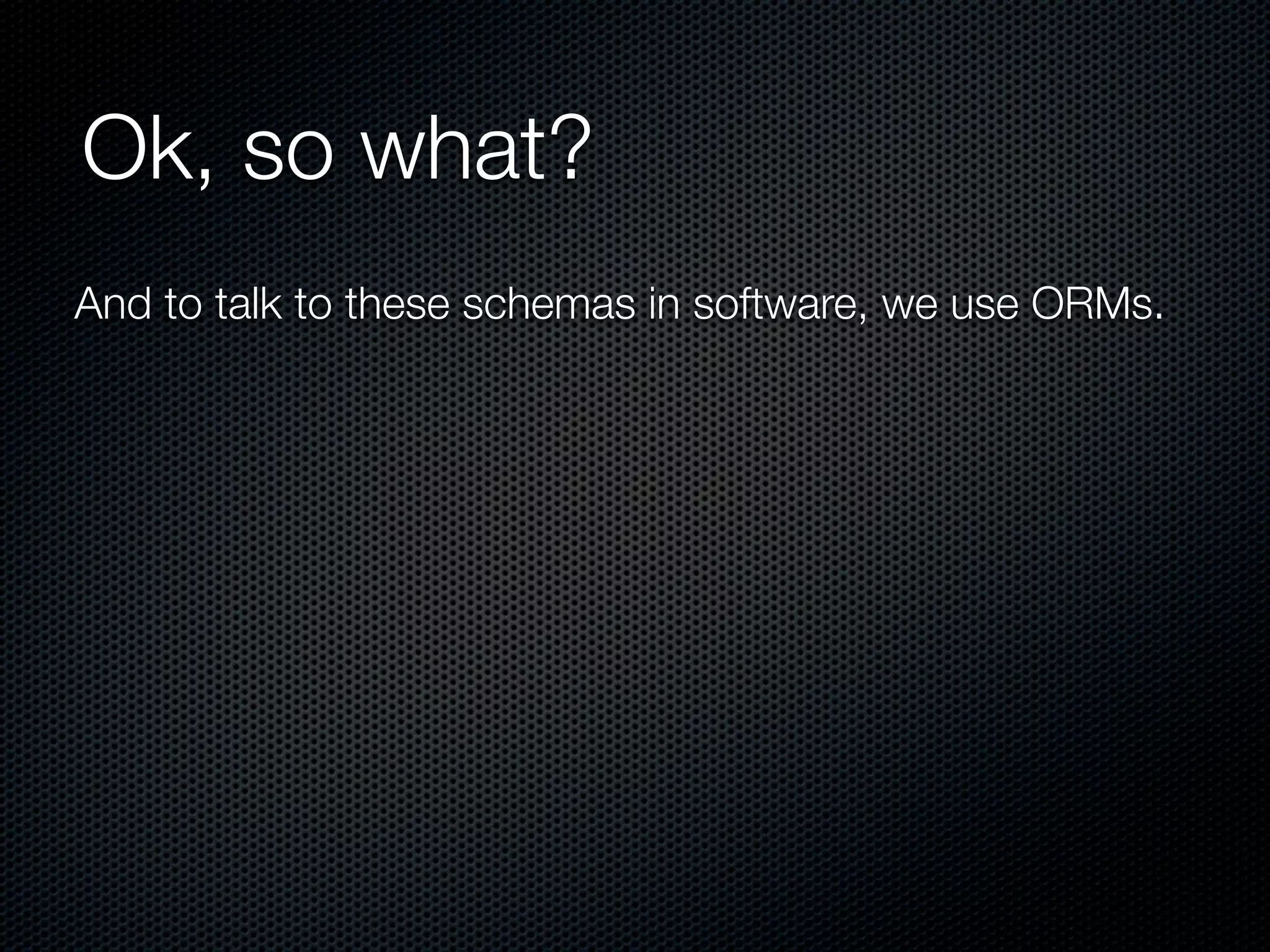
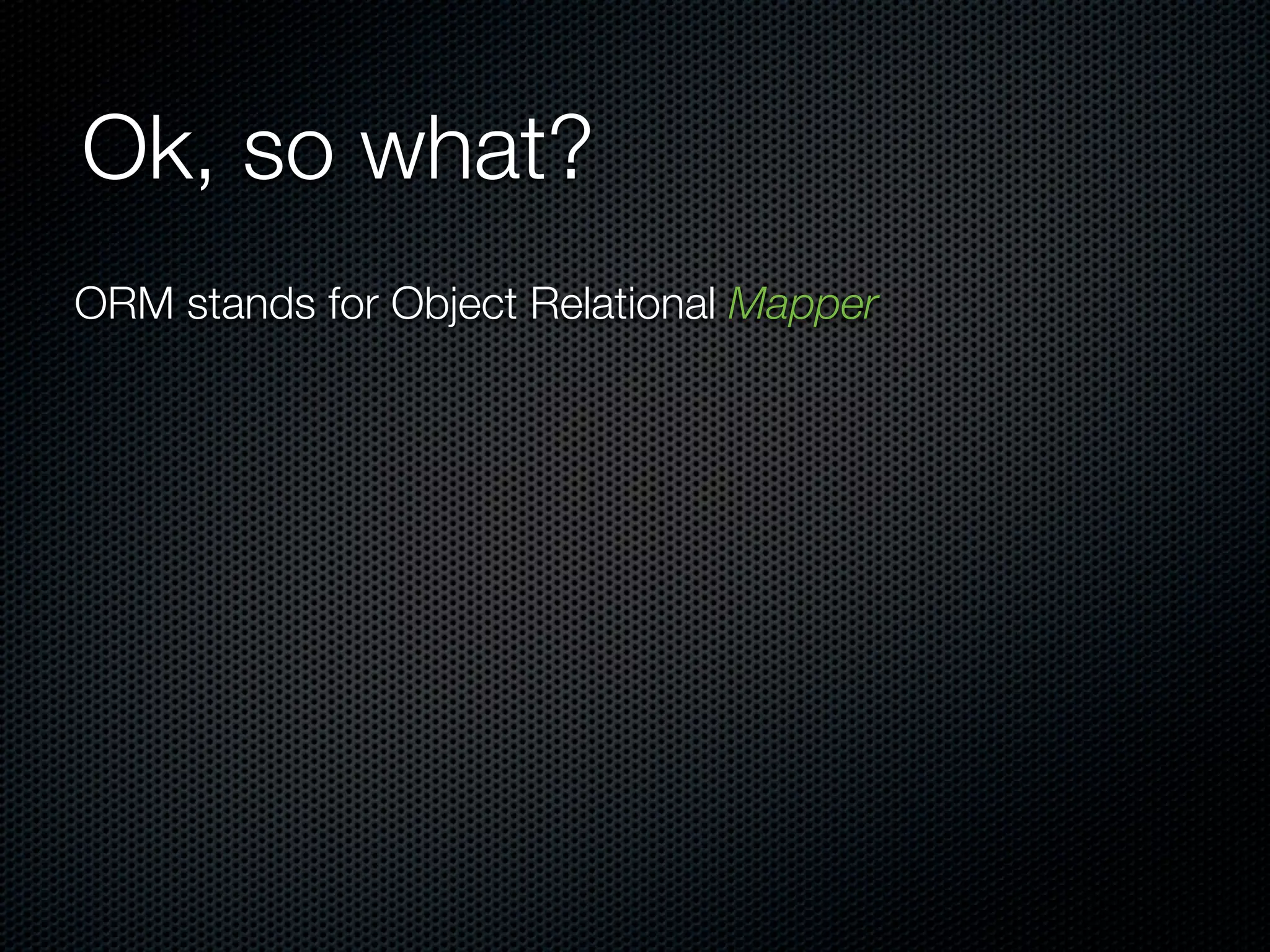
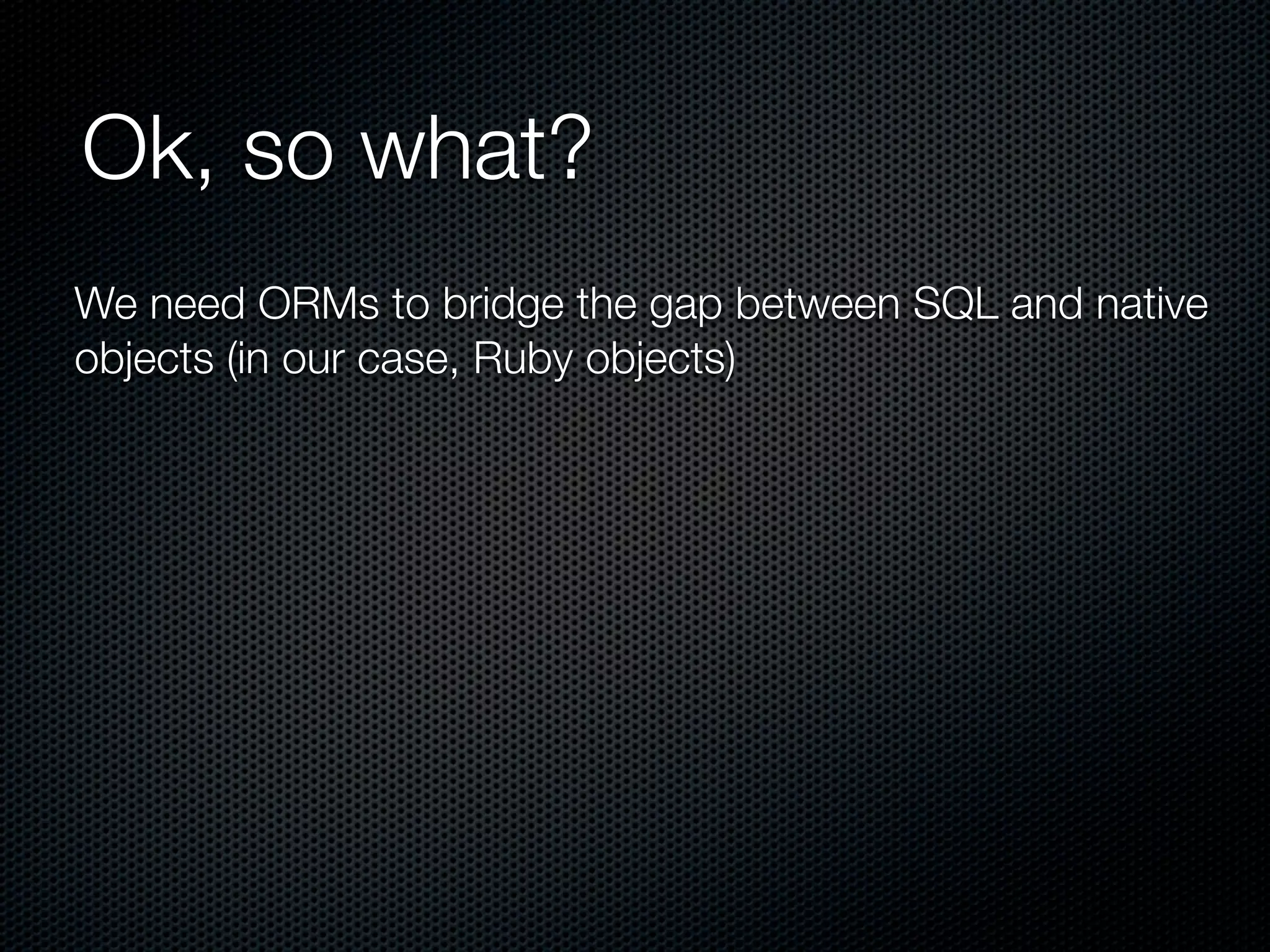
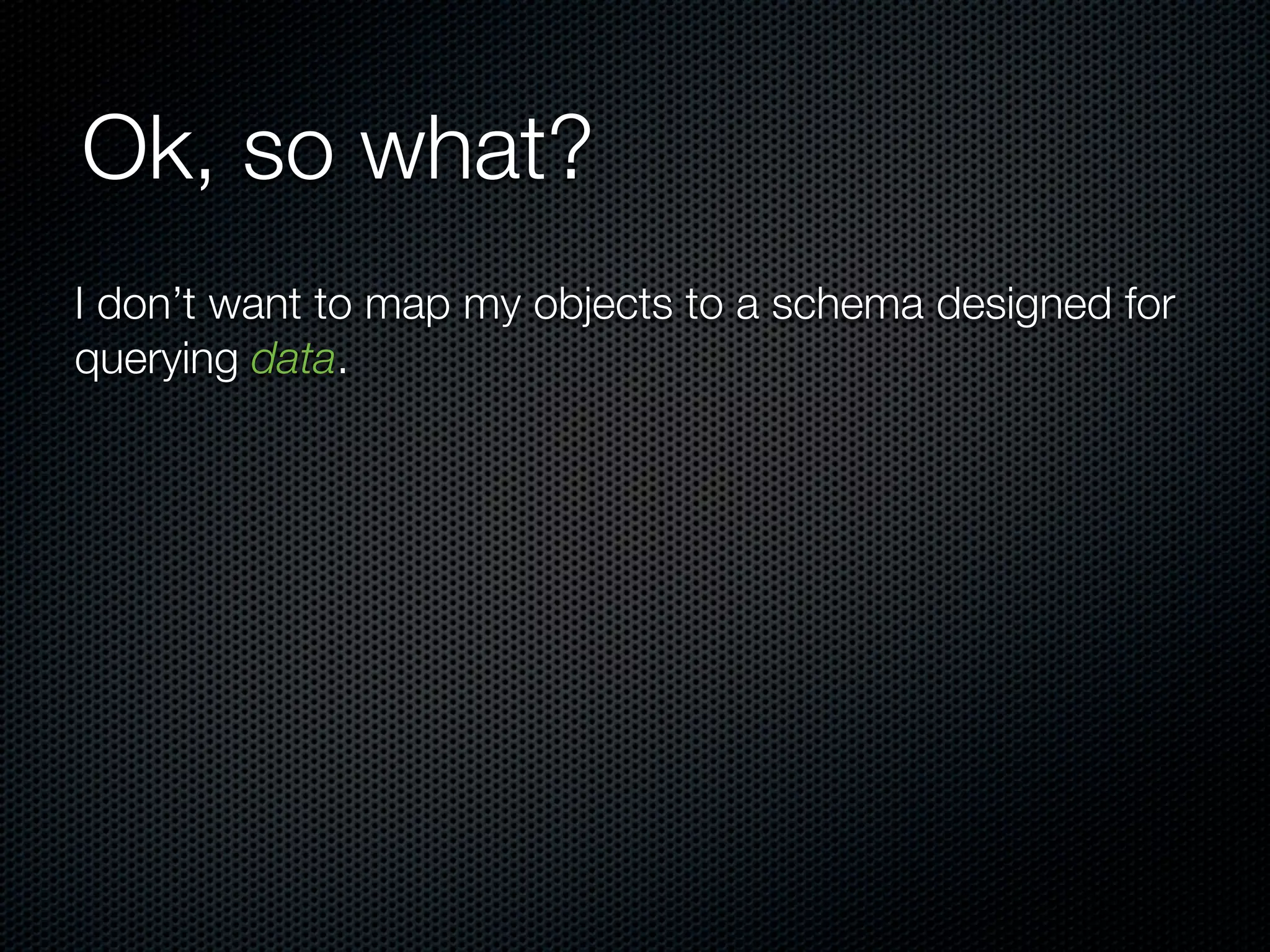
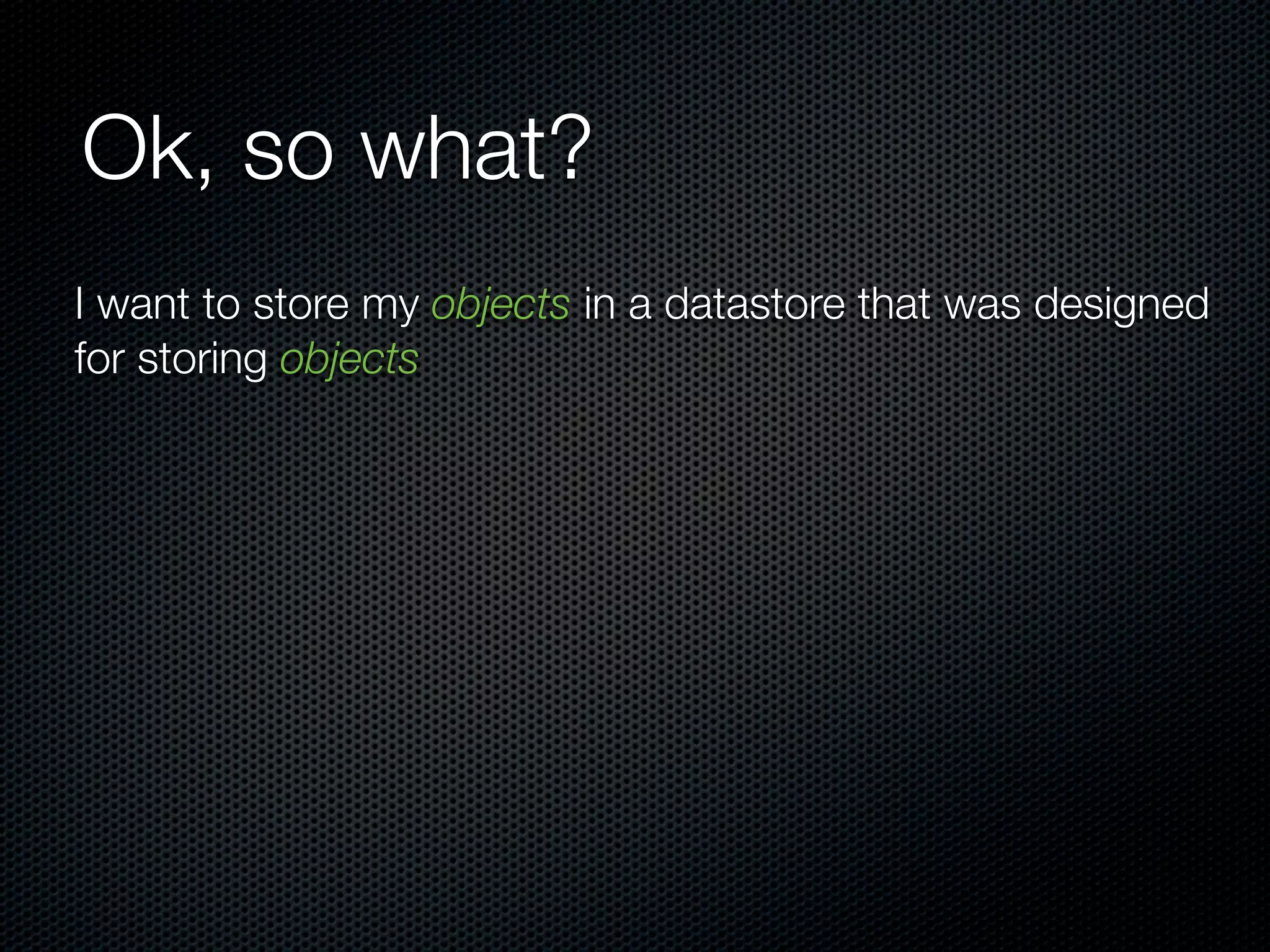
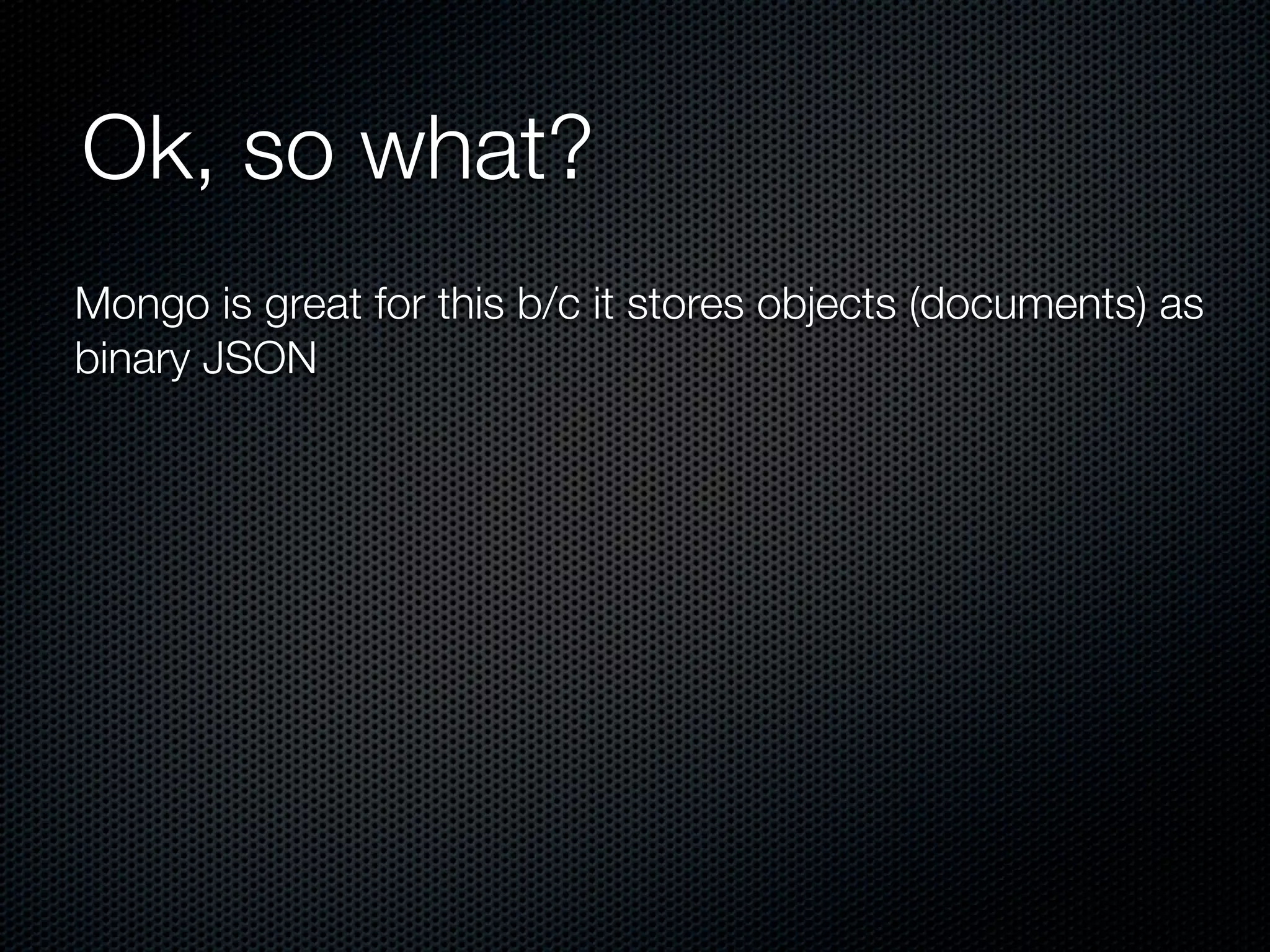
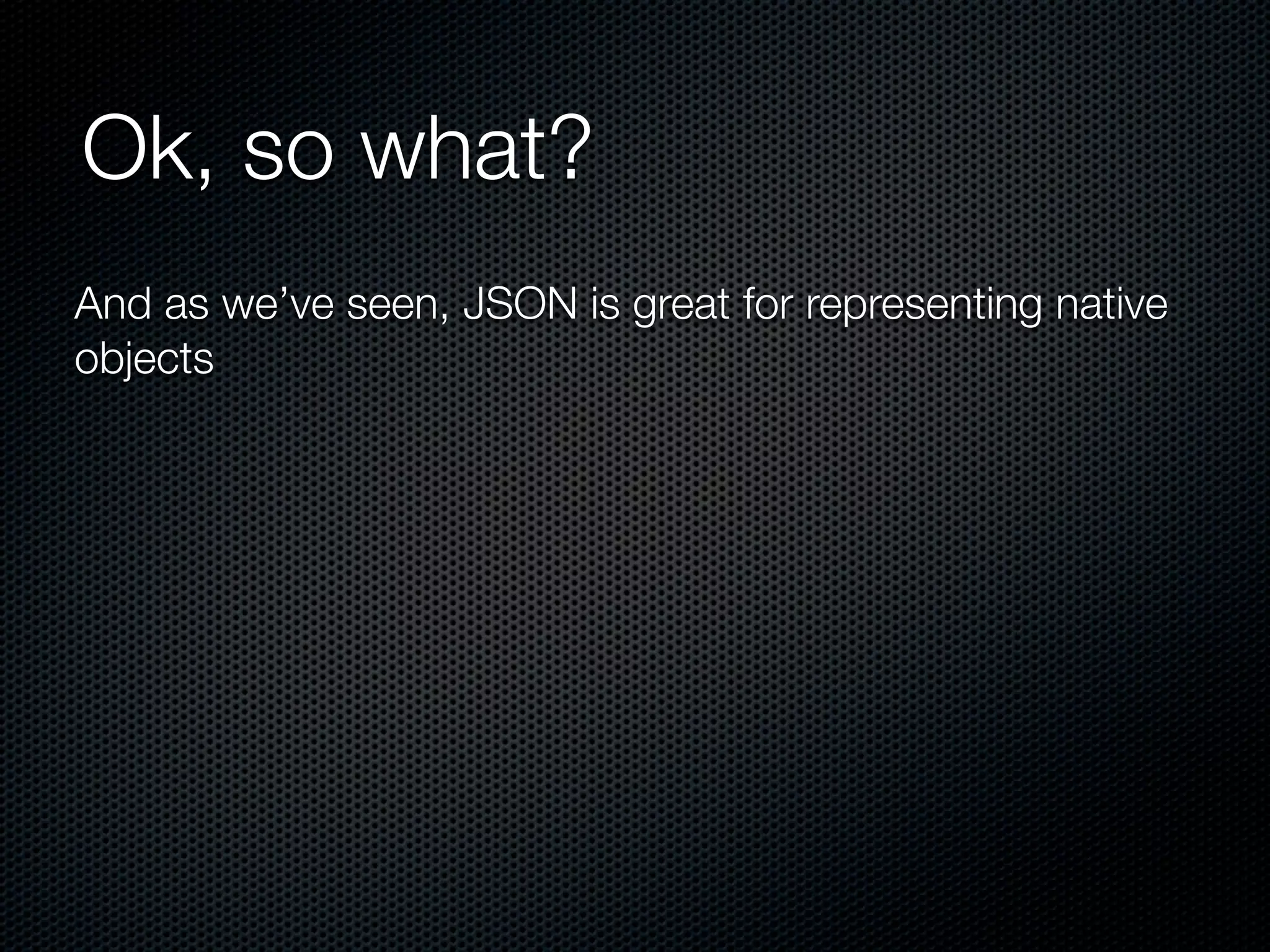
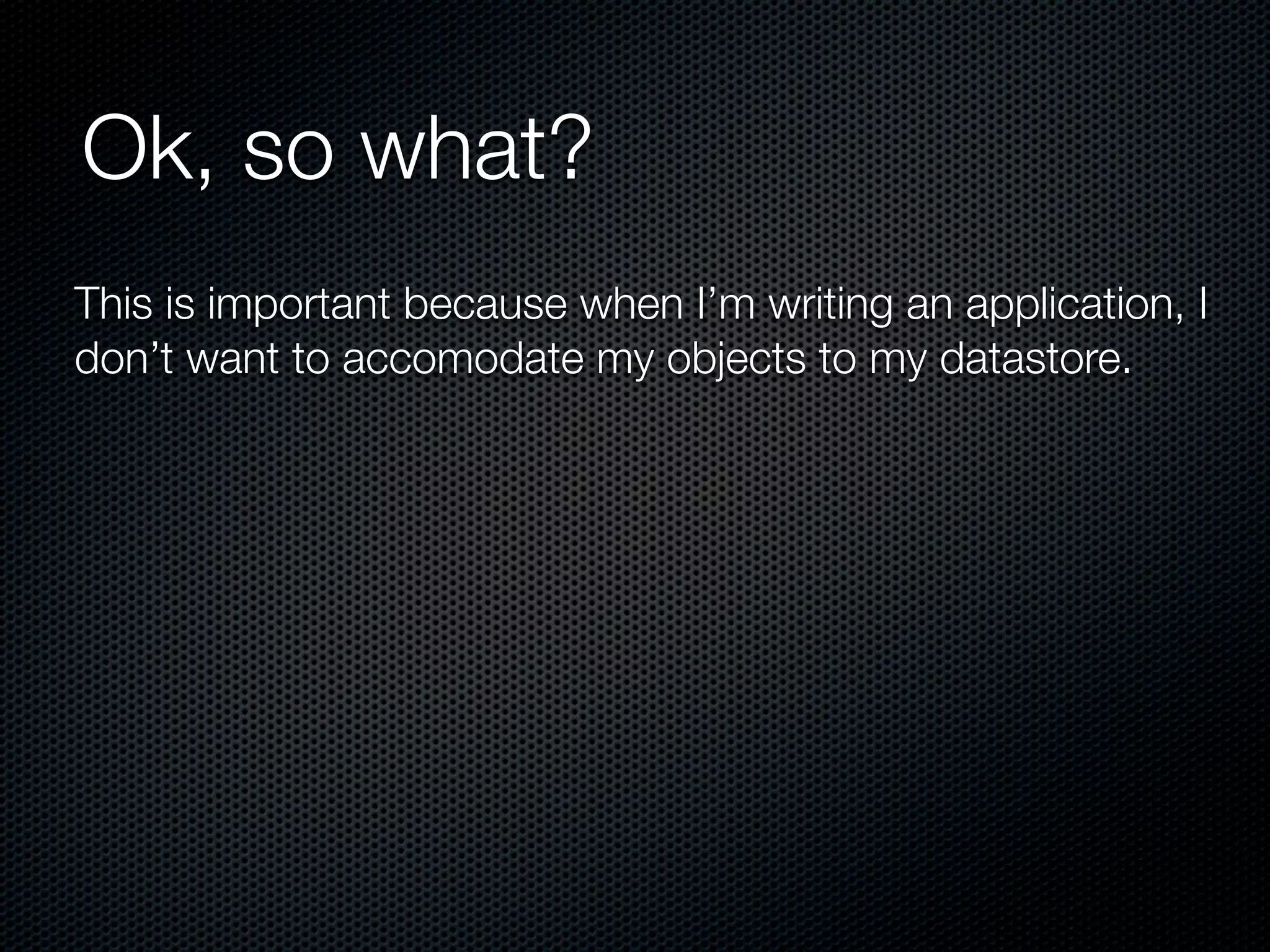

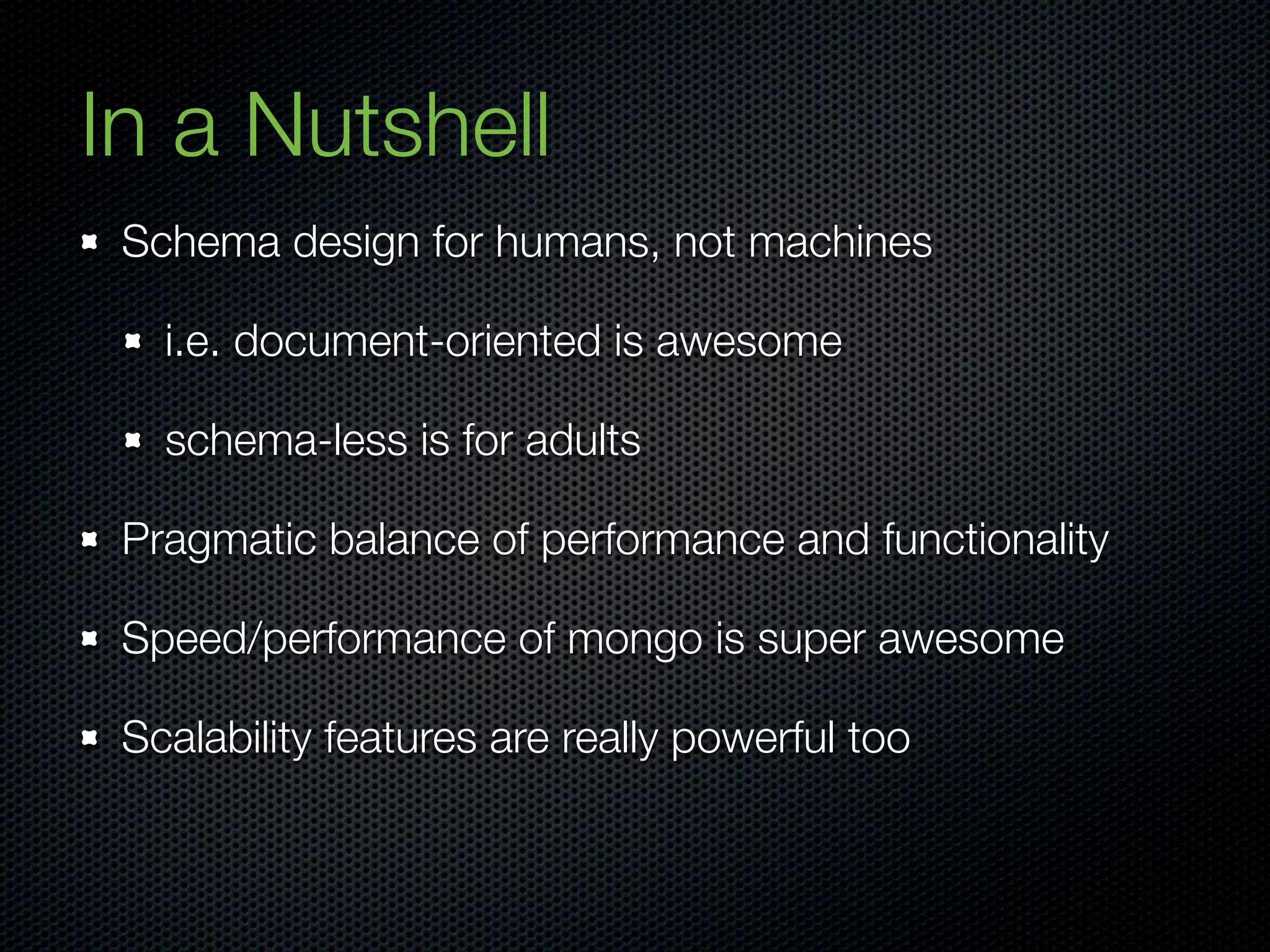
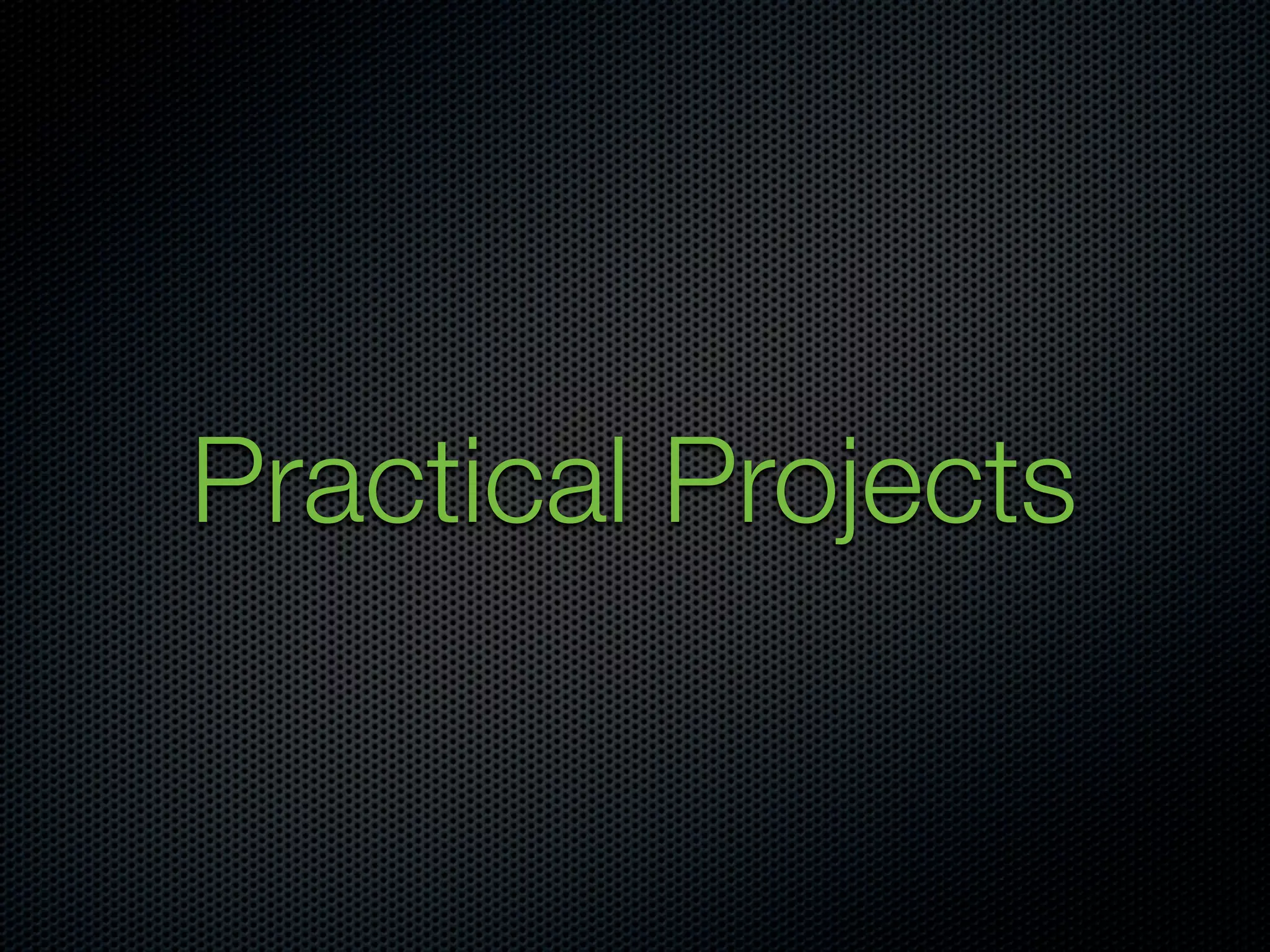
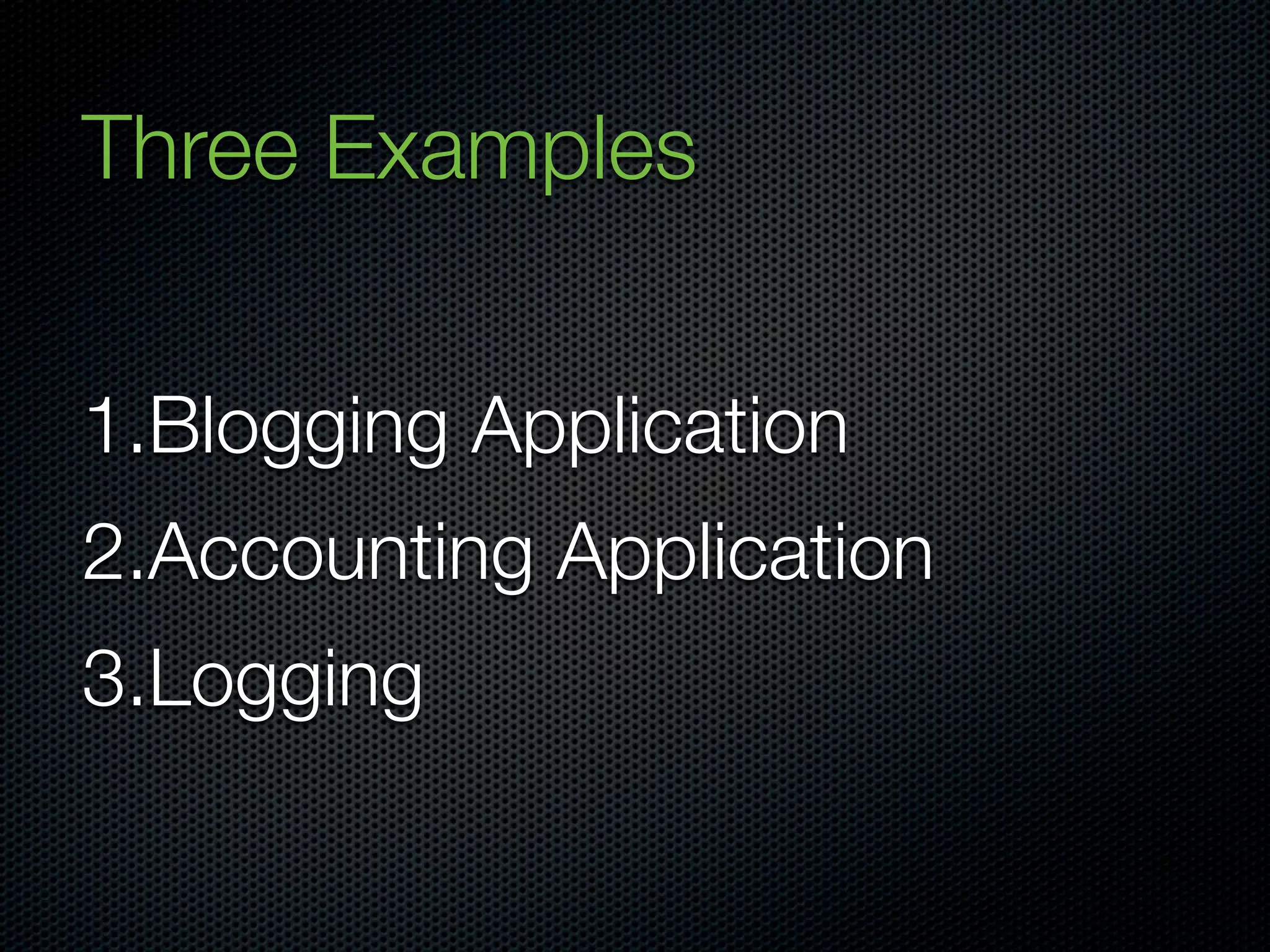
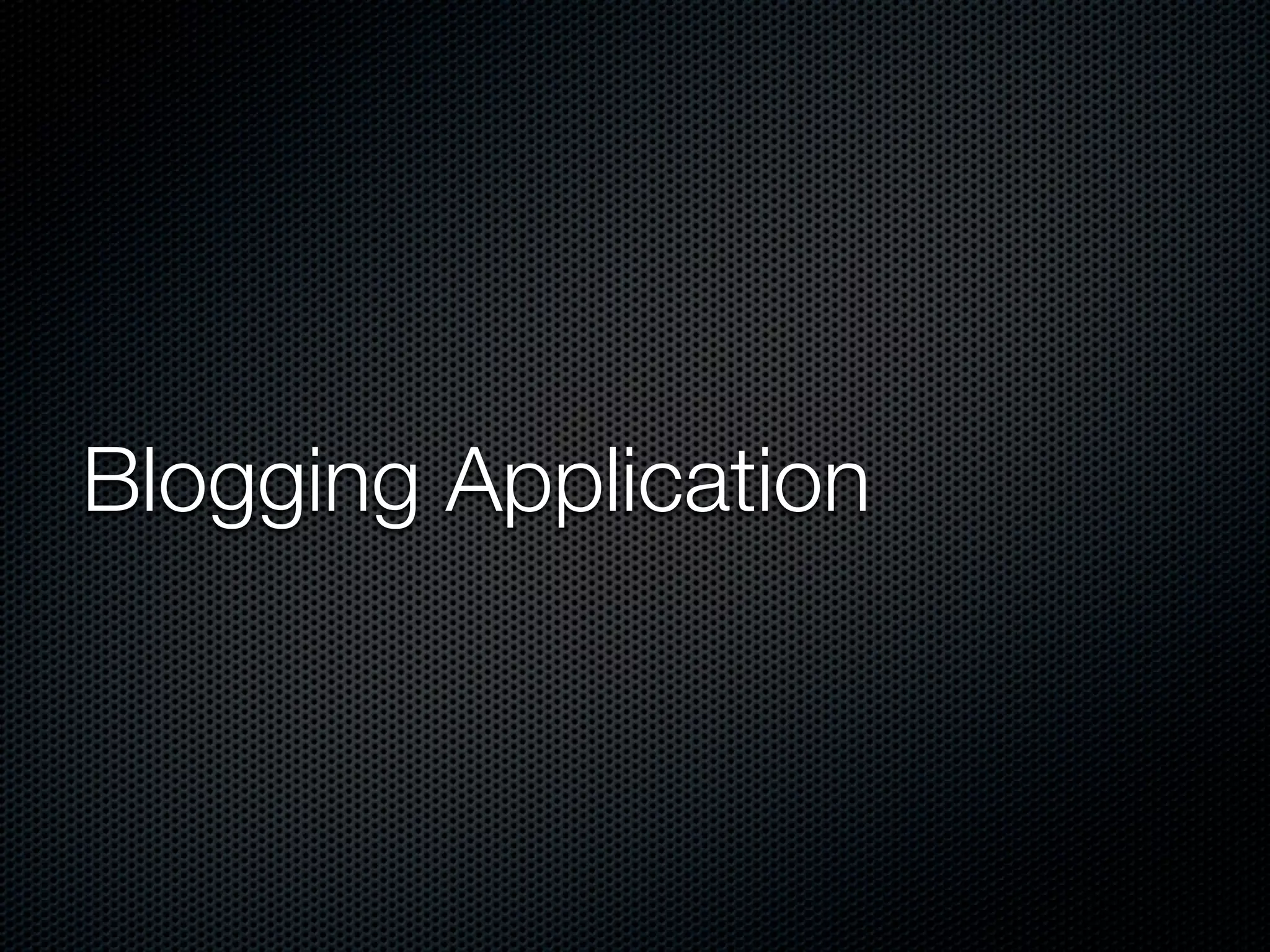
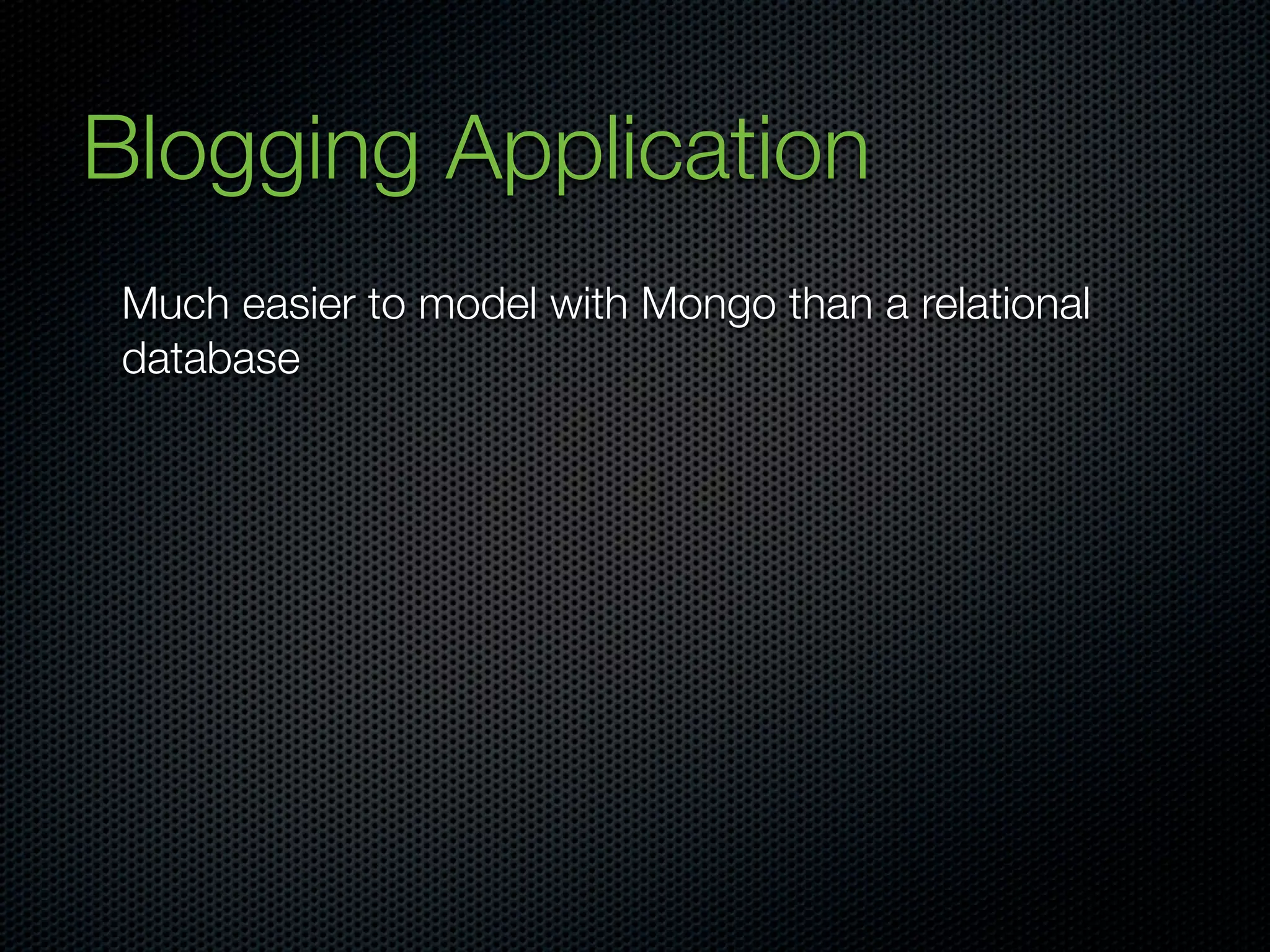
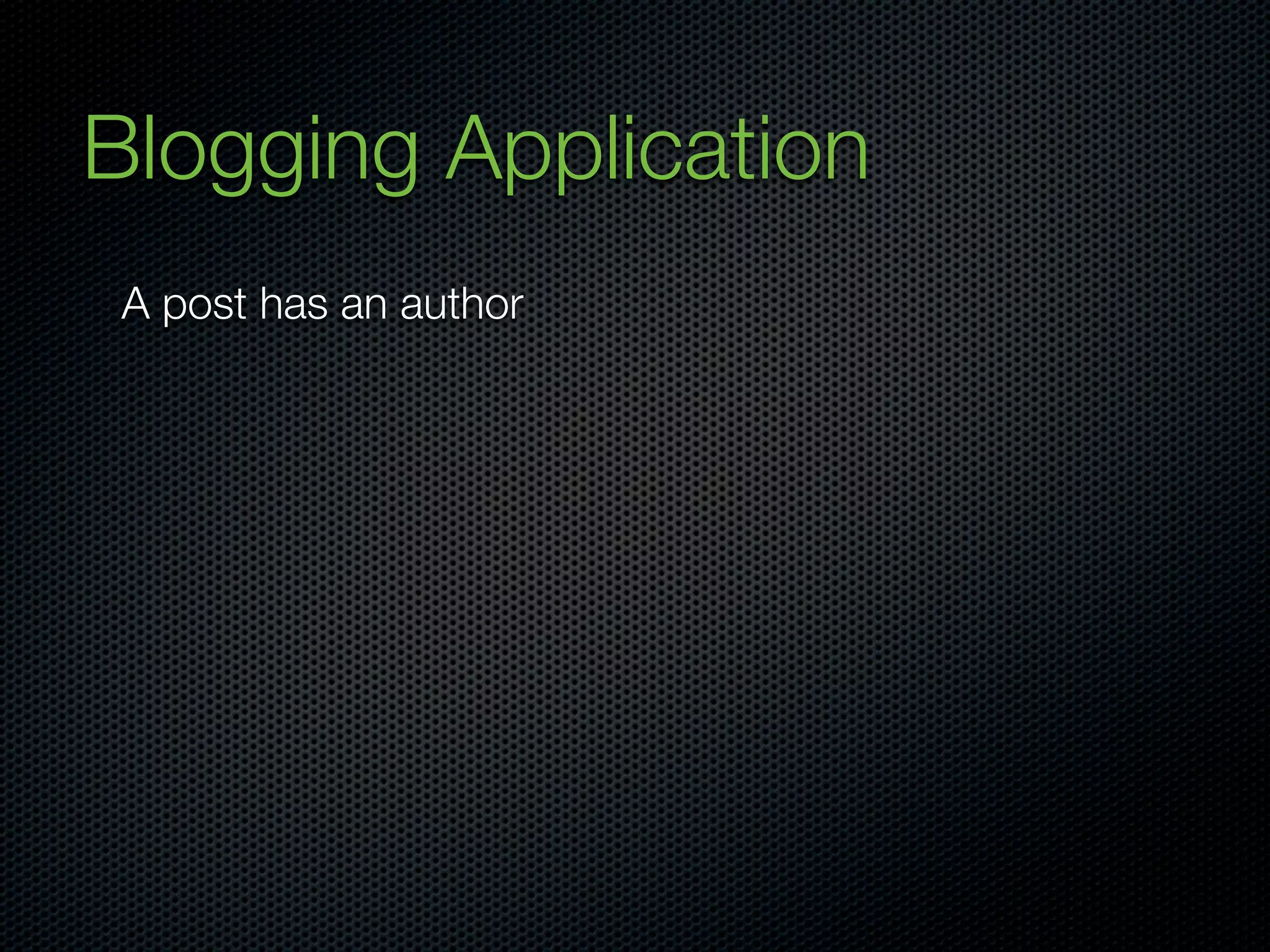
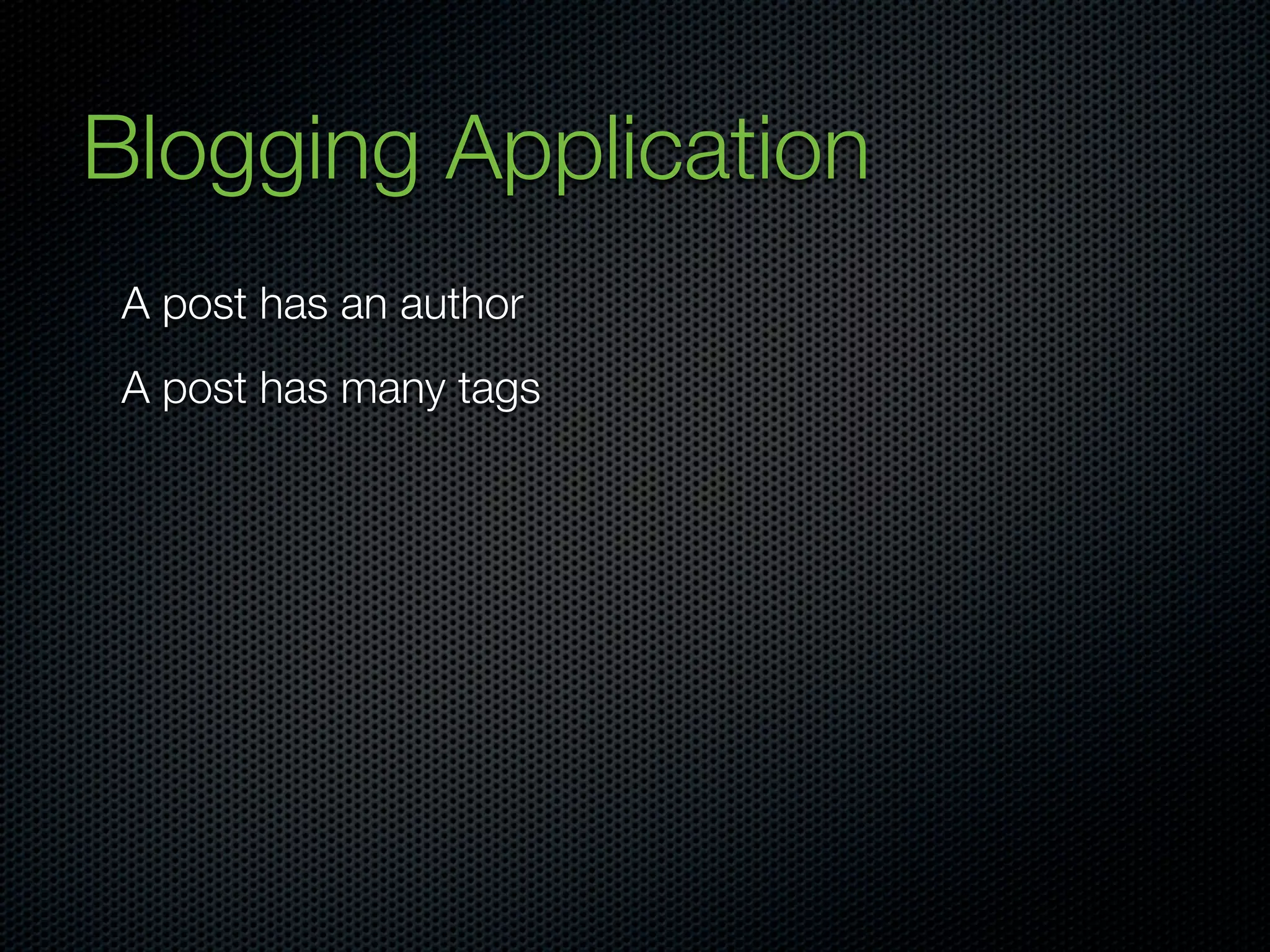
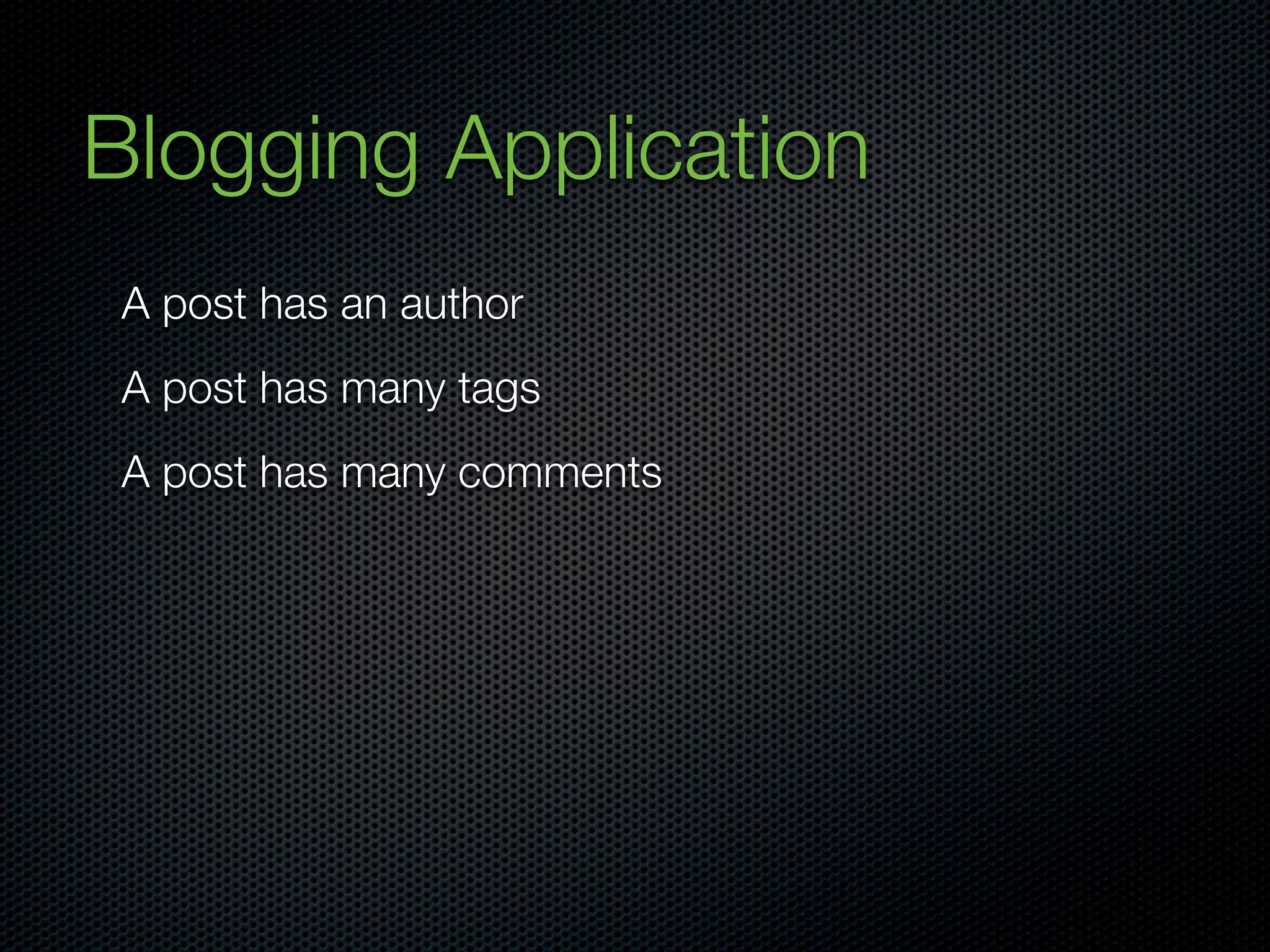
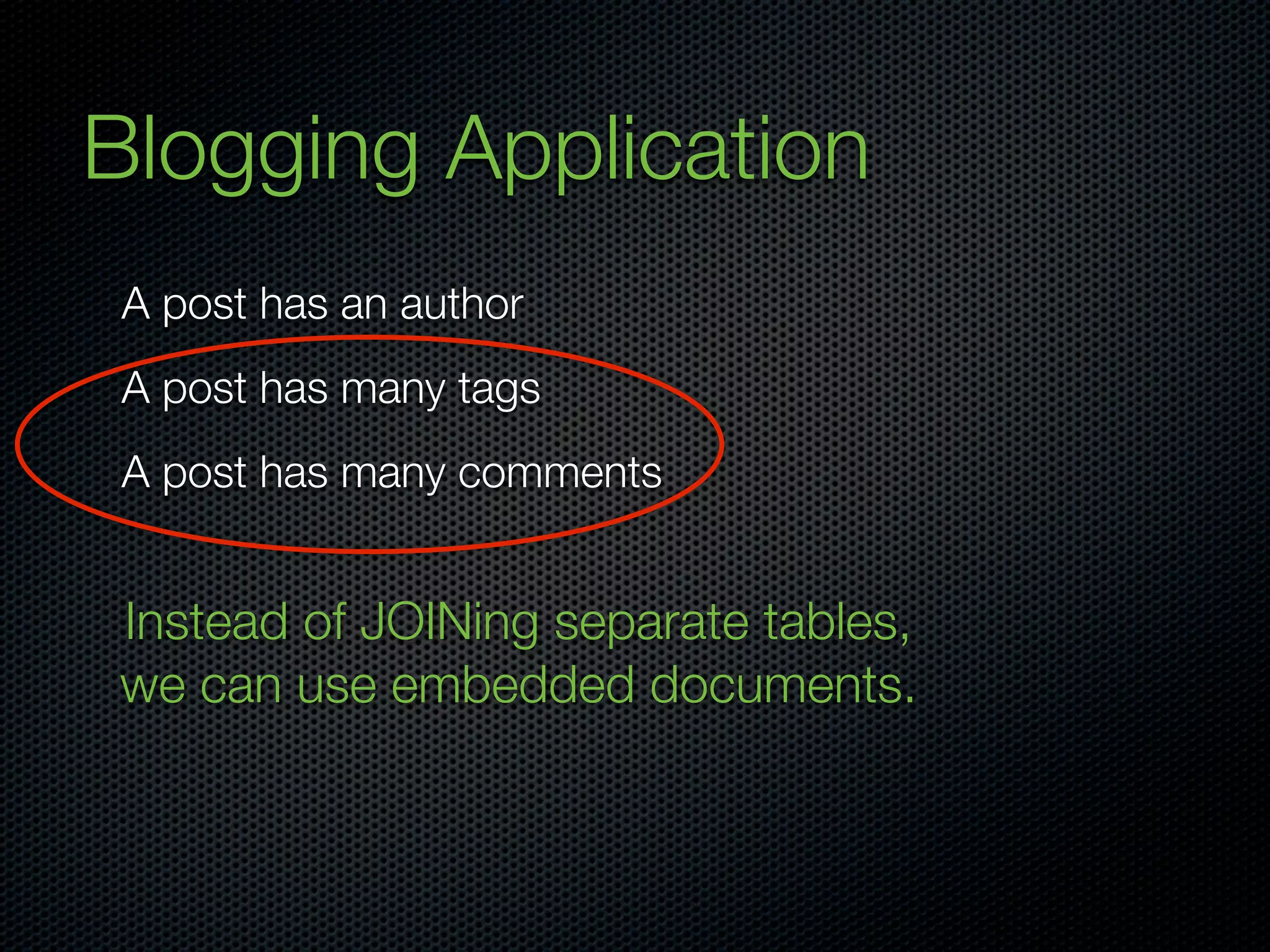
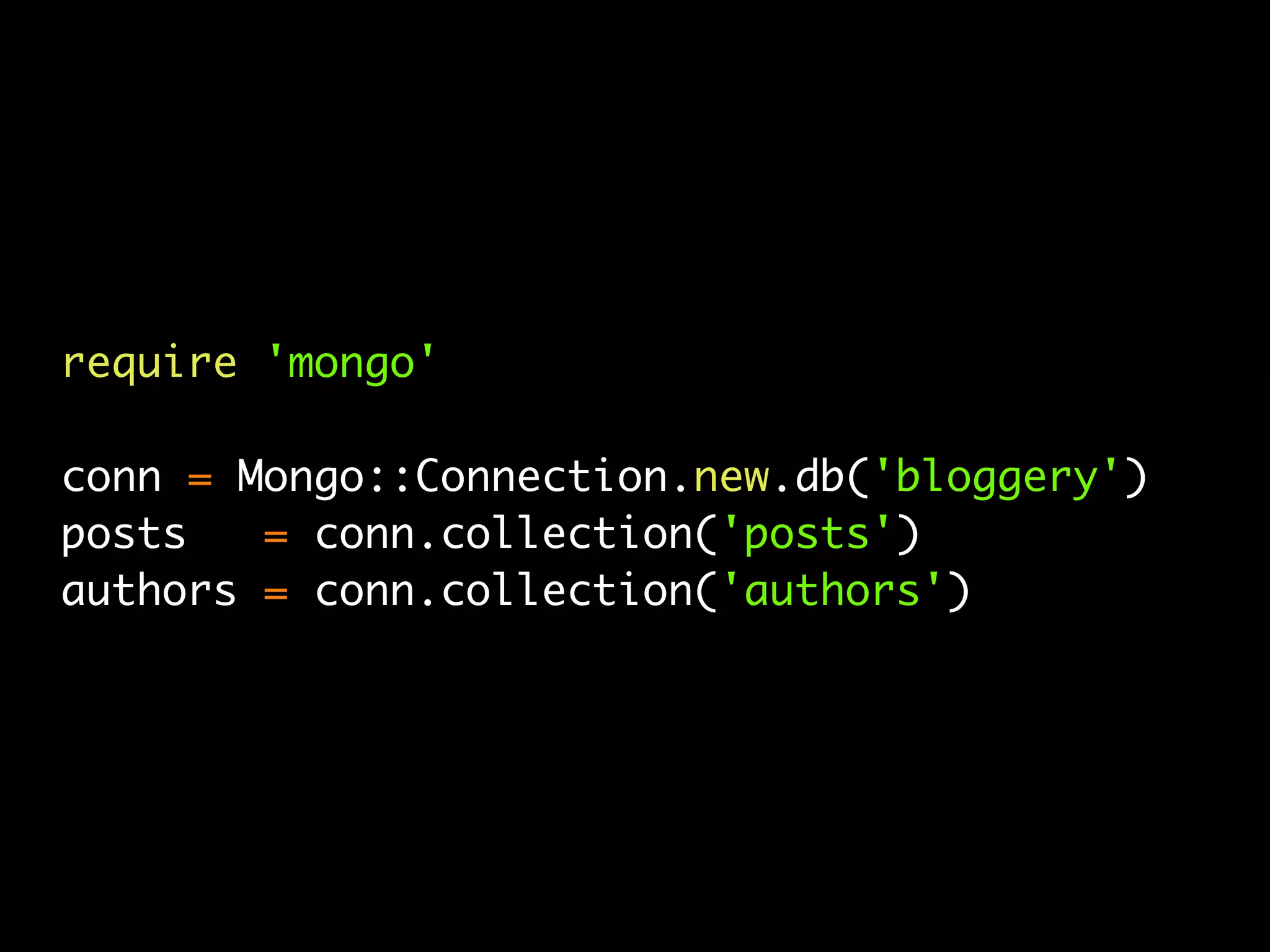
![# returns a Mongo::ObjectID object
alex = authors.save :name => "Alex"
post = posts.save(
:title => 'Post title',
:body => 'Massive potification...',
:tags => ['laruby', 'omg', 'lolcats'],
:comments => [
{ :name => "Loudmouth McGee",
:email => 'loud@mouth.edu',
:body => "Something really ranty..."
}
],
:author_id => alex
)](https://image.slidesharecdn.com/practicalrubyprojectswithmongodb-100408221143-phpapp01/75/Practical-Ruby-Projects-With-Mongo-Db-58-2048.jpg)
![# returns a Mongo::ObjectID object
alex = authors.save :name => "Alex"
post = posts.save(
:title => 'Post title',
:body => 'Massive potification...',
:tags => ['laruby', 'omg', 'lolcats'],
:comments => [
{ :name => "Loudmouth McGee",
:email => 'loud@mouth.edu',
:body => "Something really ranty..."
}
],
Joins not necessary. Sweet.
:author_id => alex
)](https://image.slidesharecdn.com/practicalrubyprojectswithmongodb-100408221143-phpapp01/75/Practical-Ruby-Projects-With-Mongo-Db-59-2048.jpg)
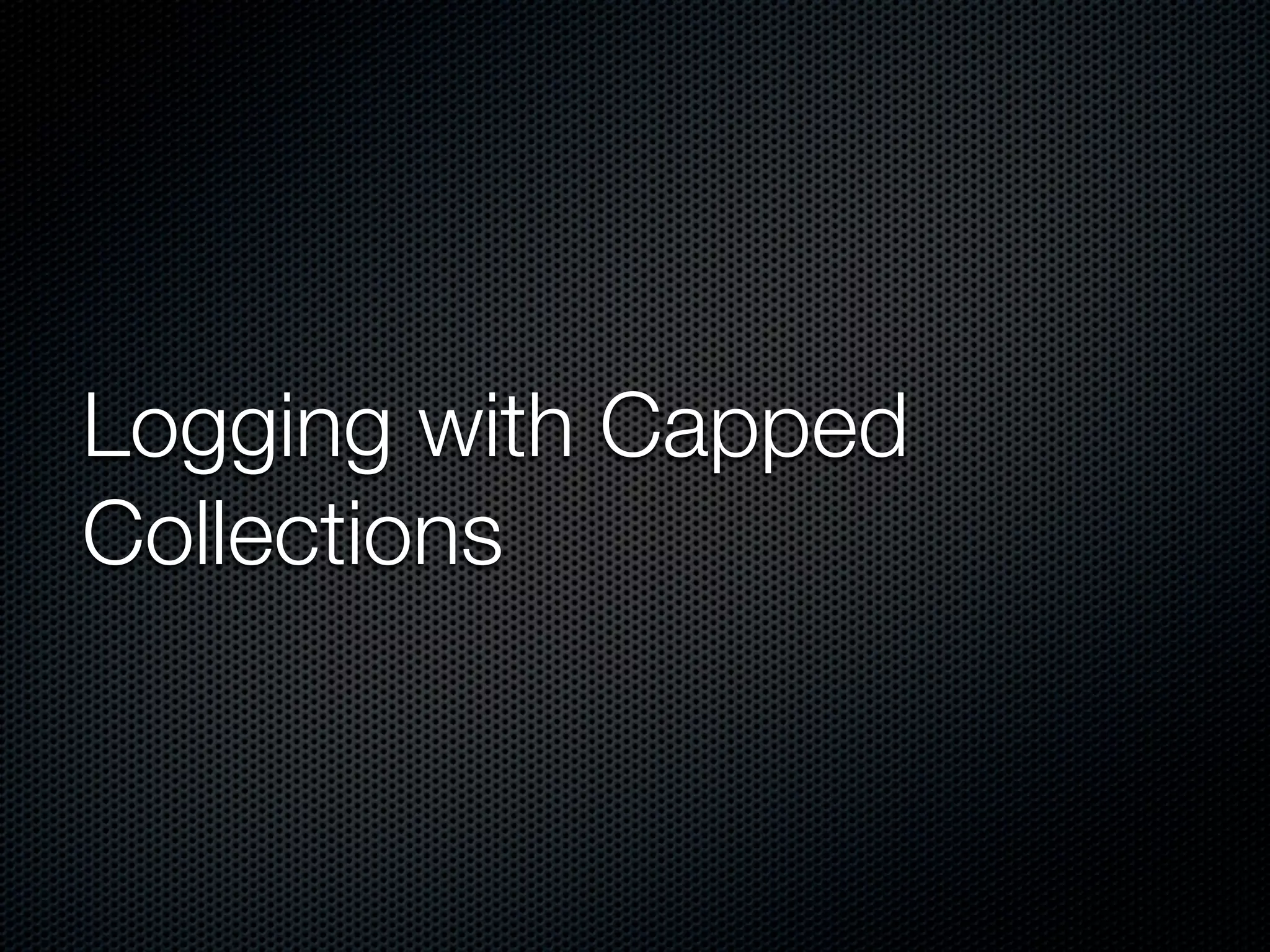
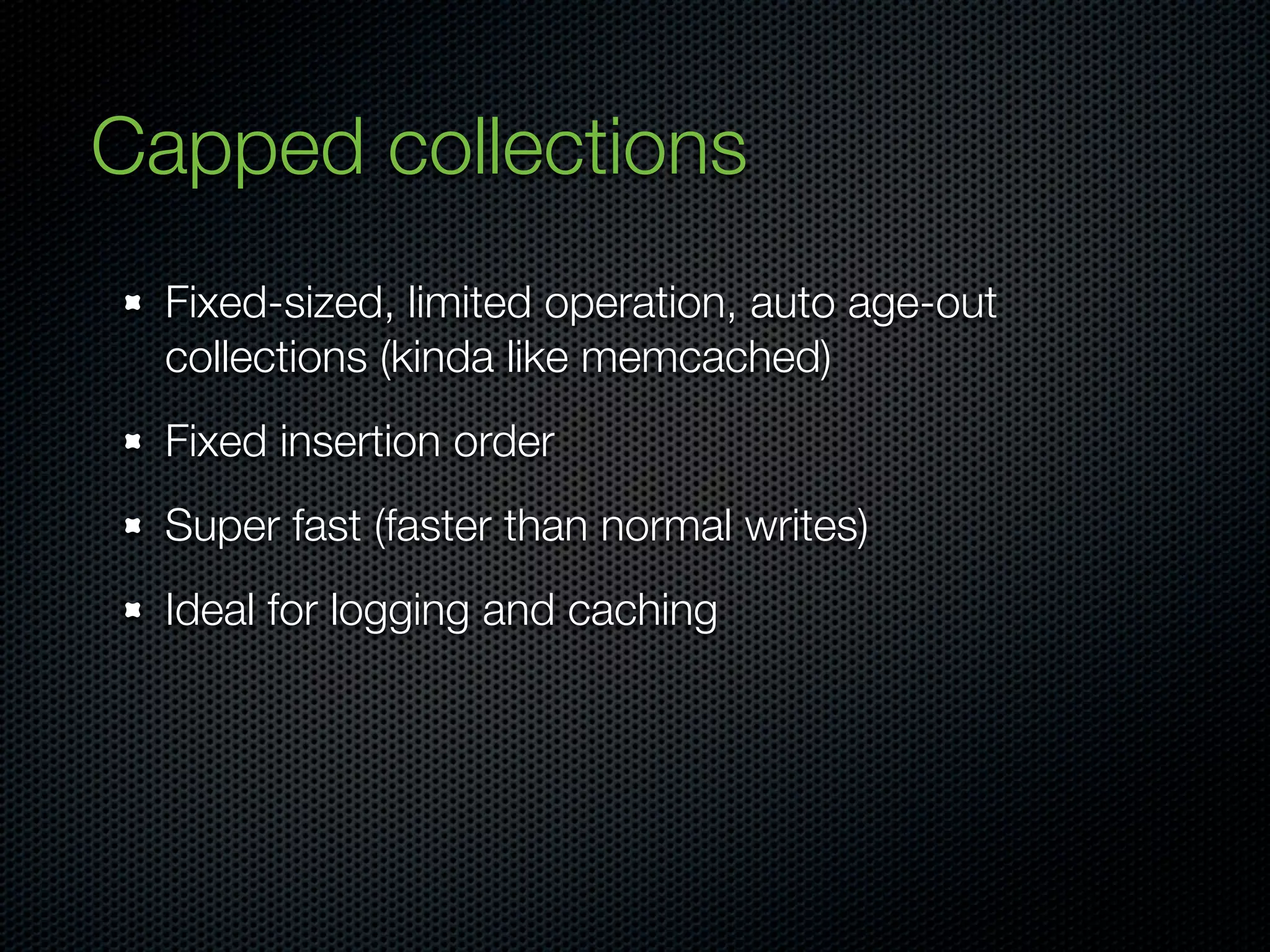
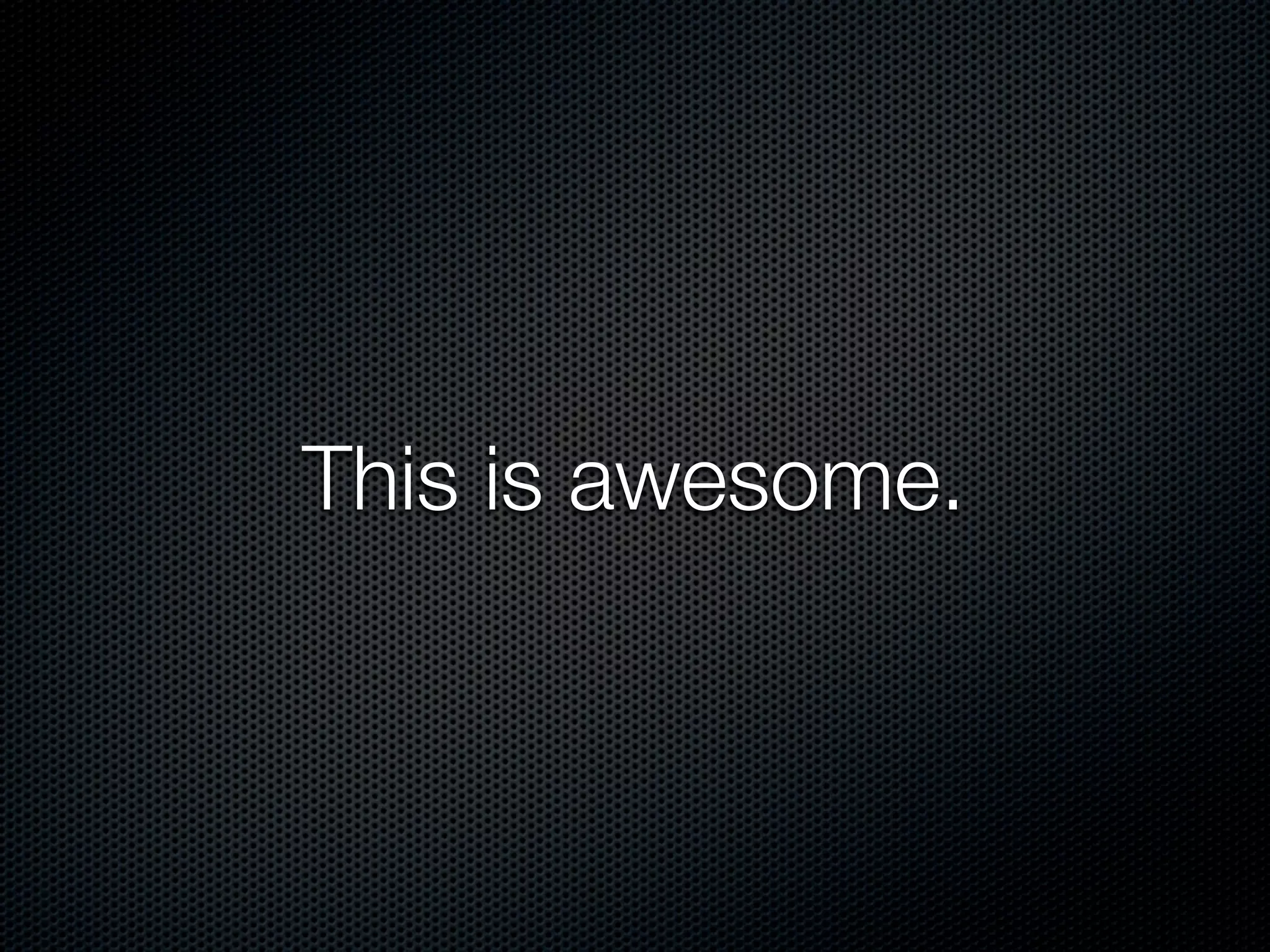
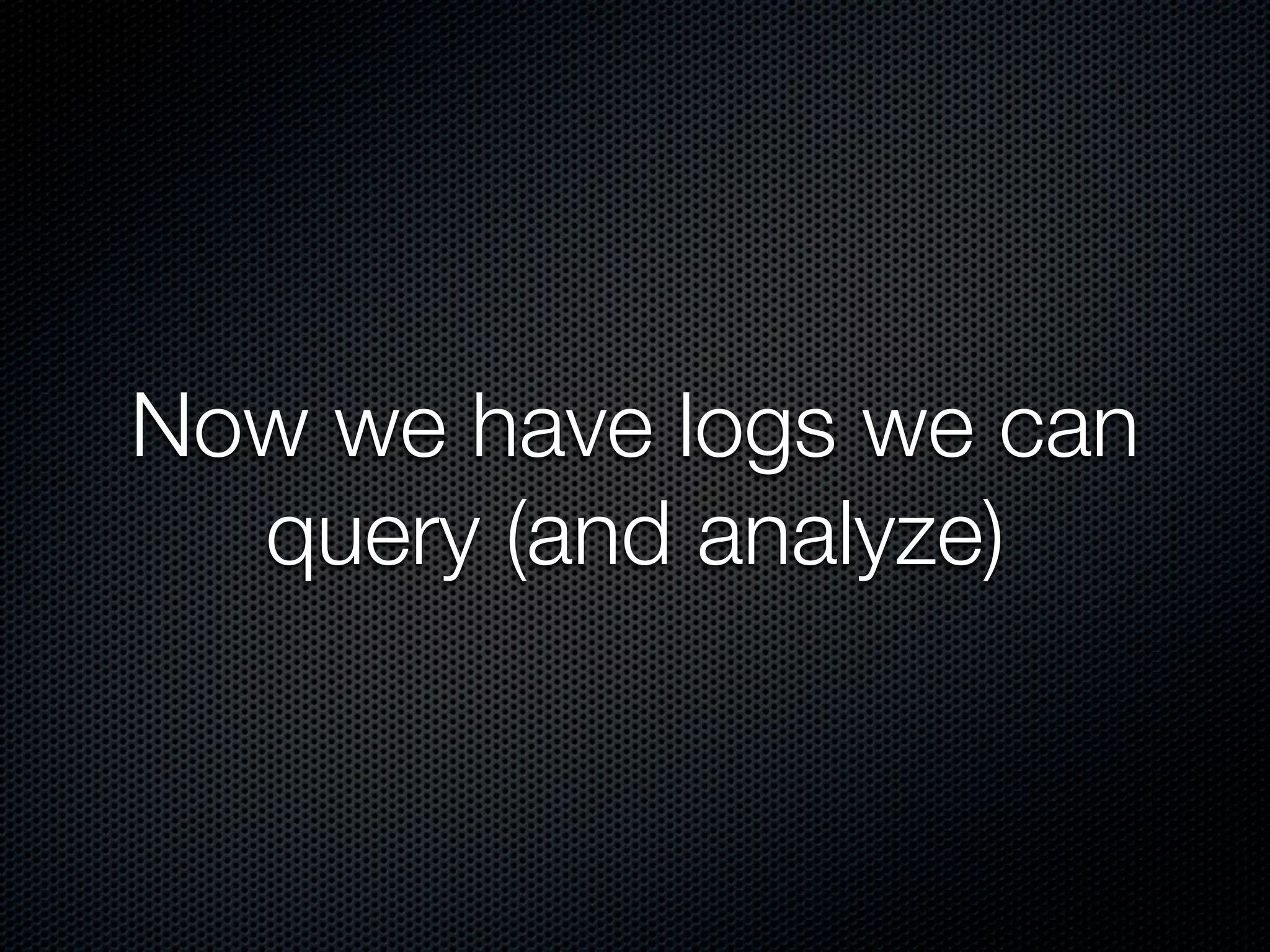
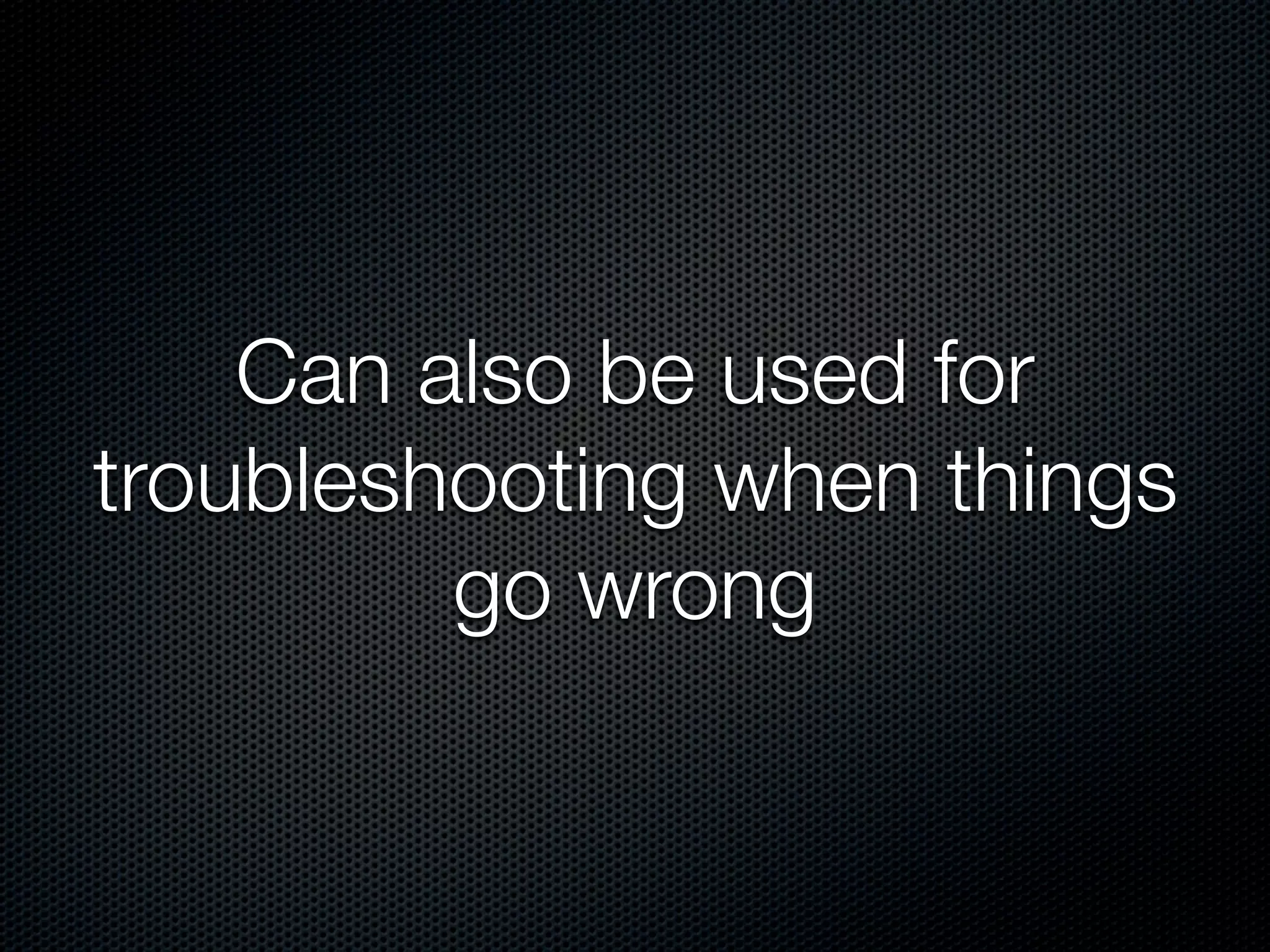
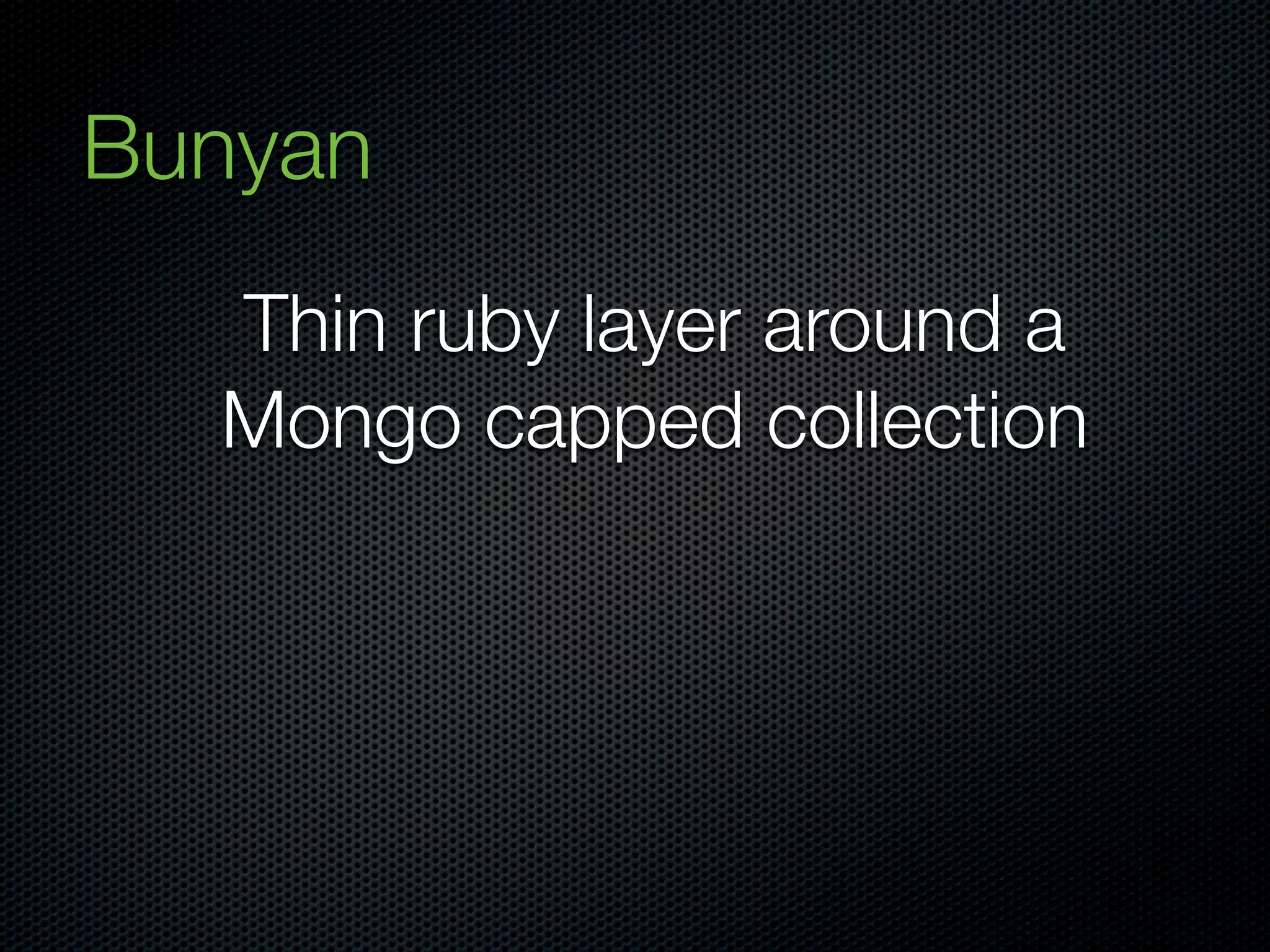
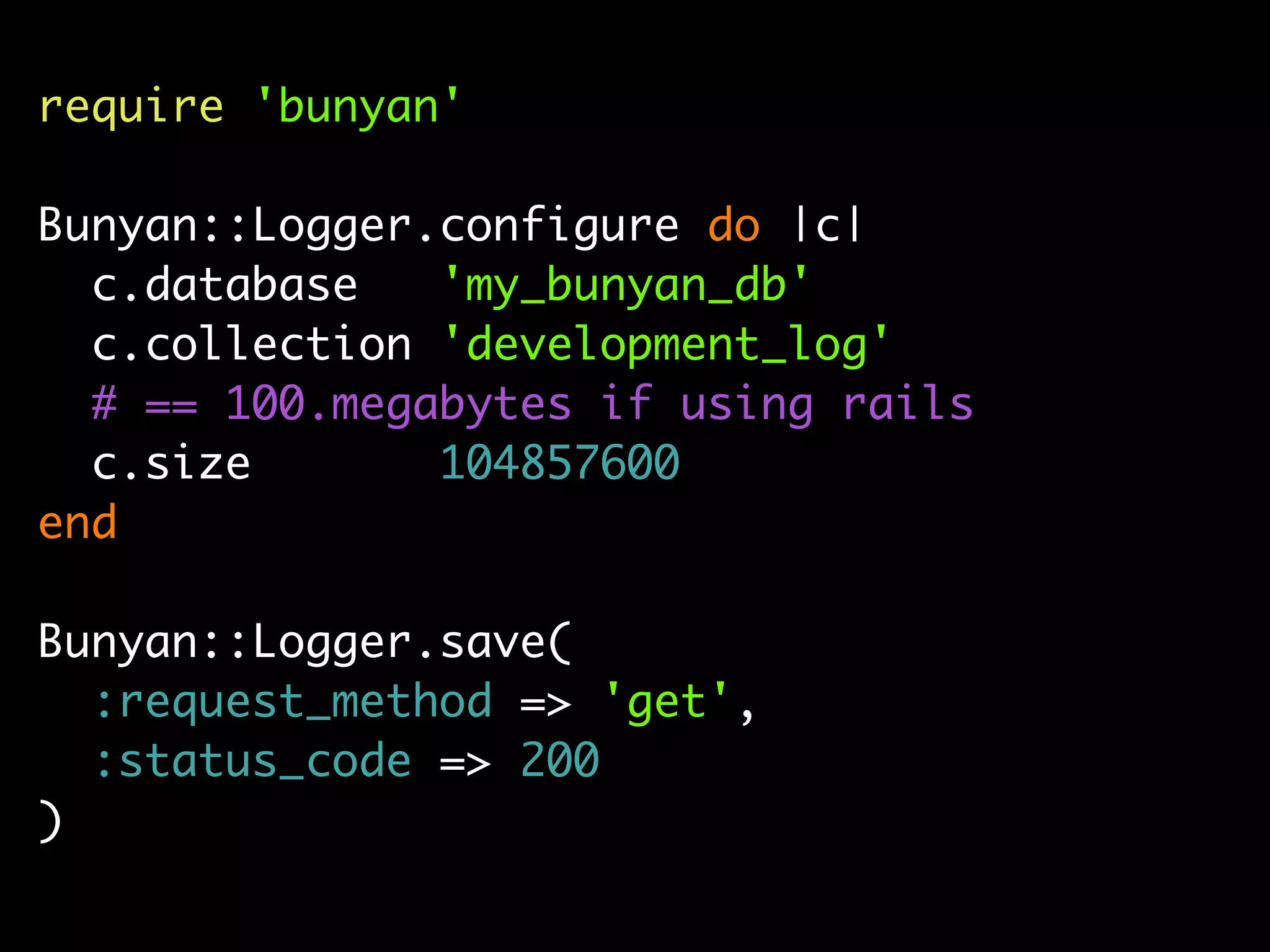
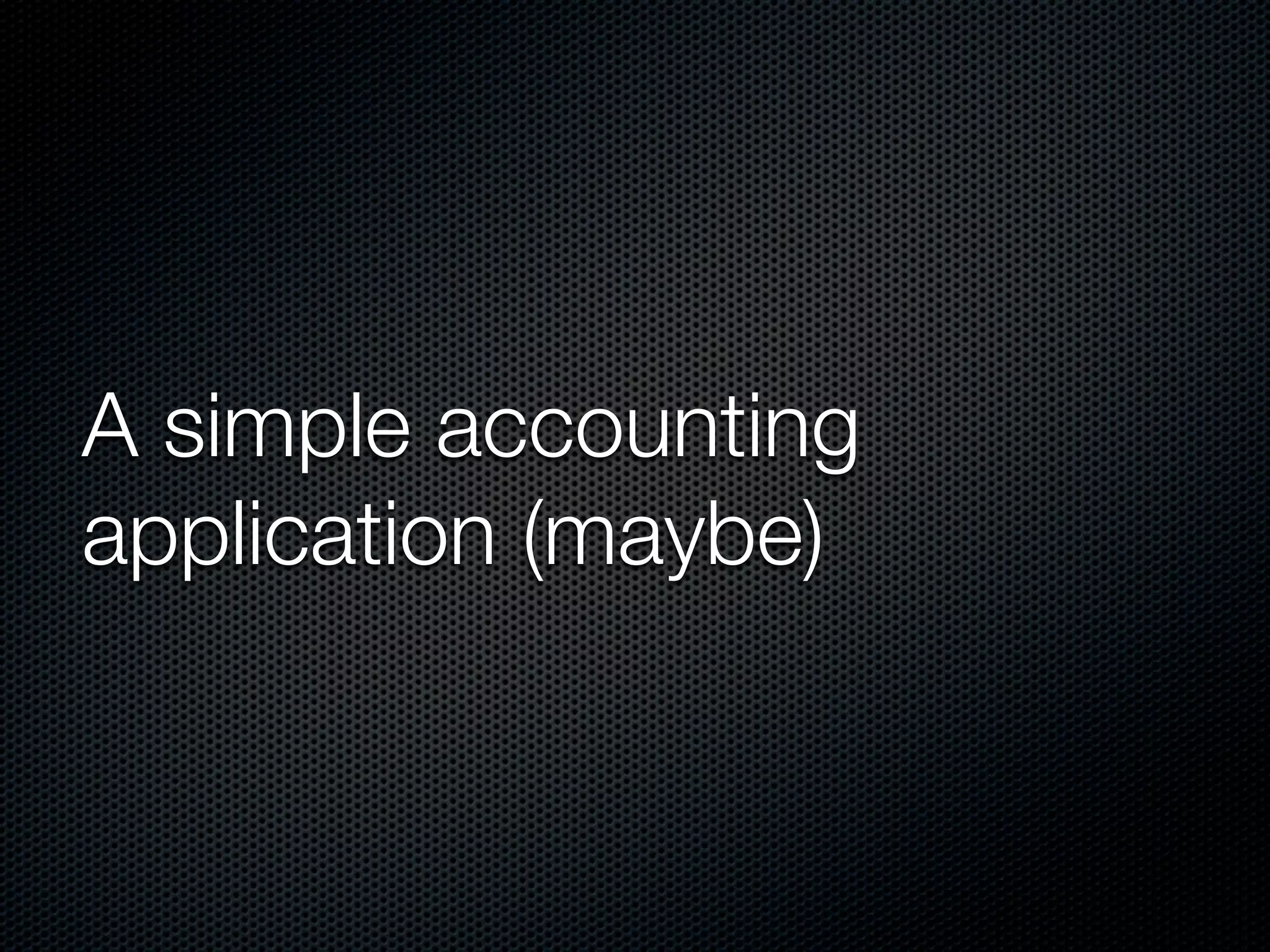
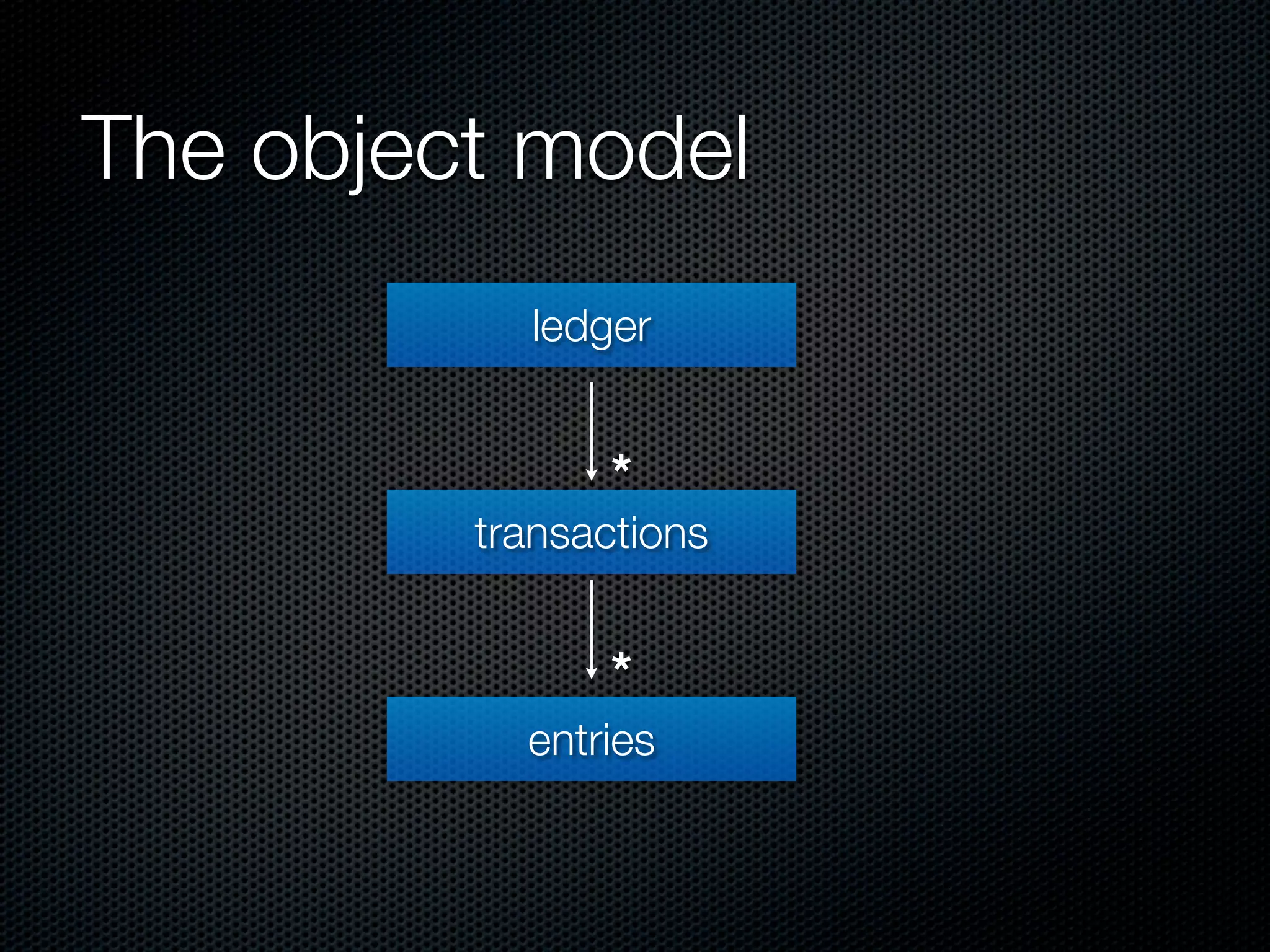
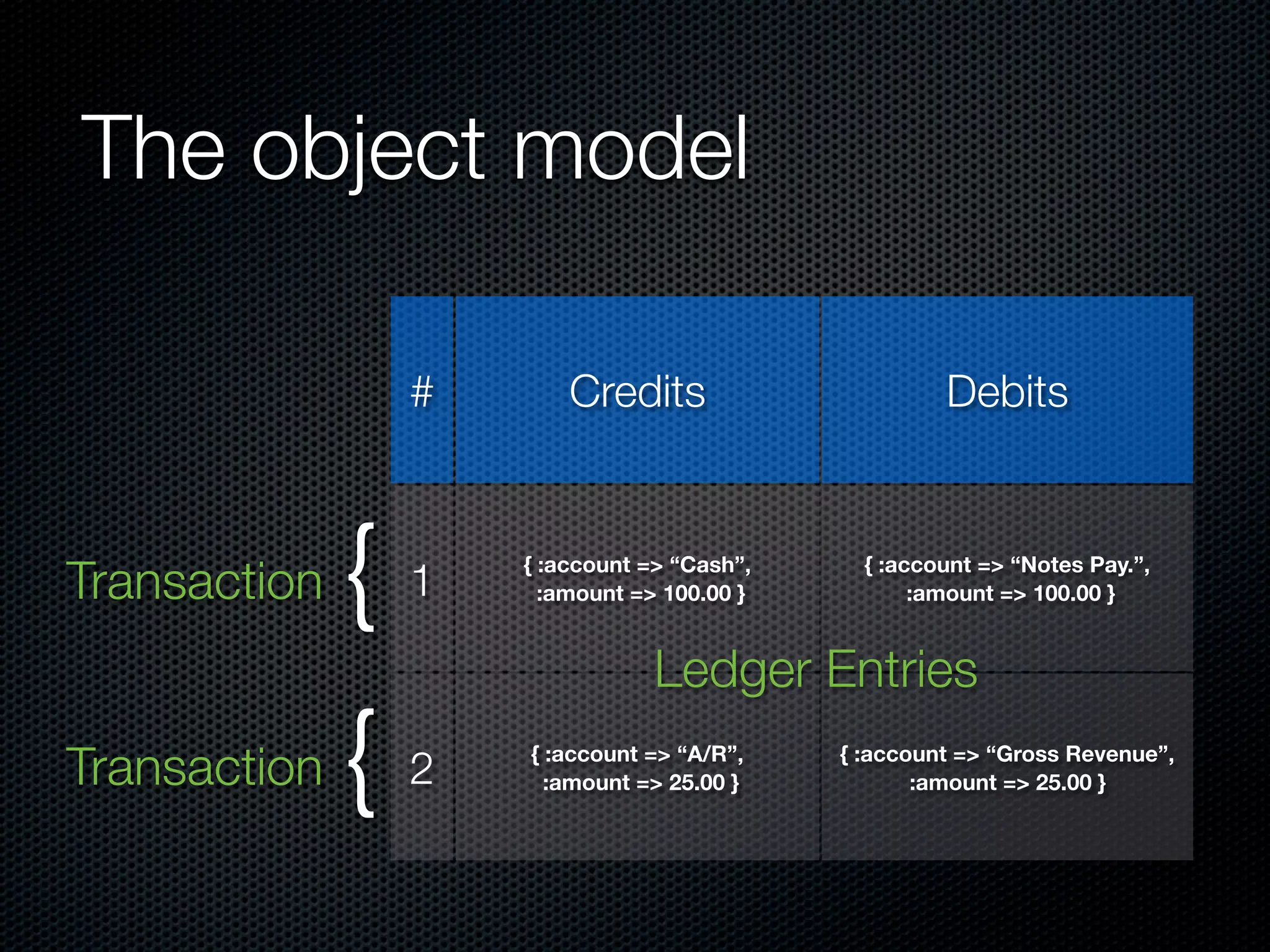
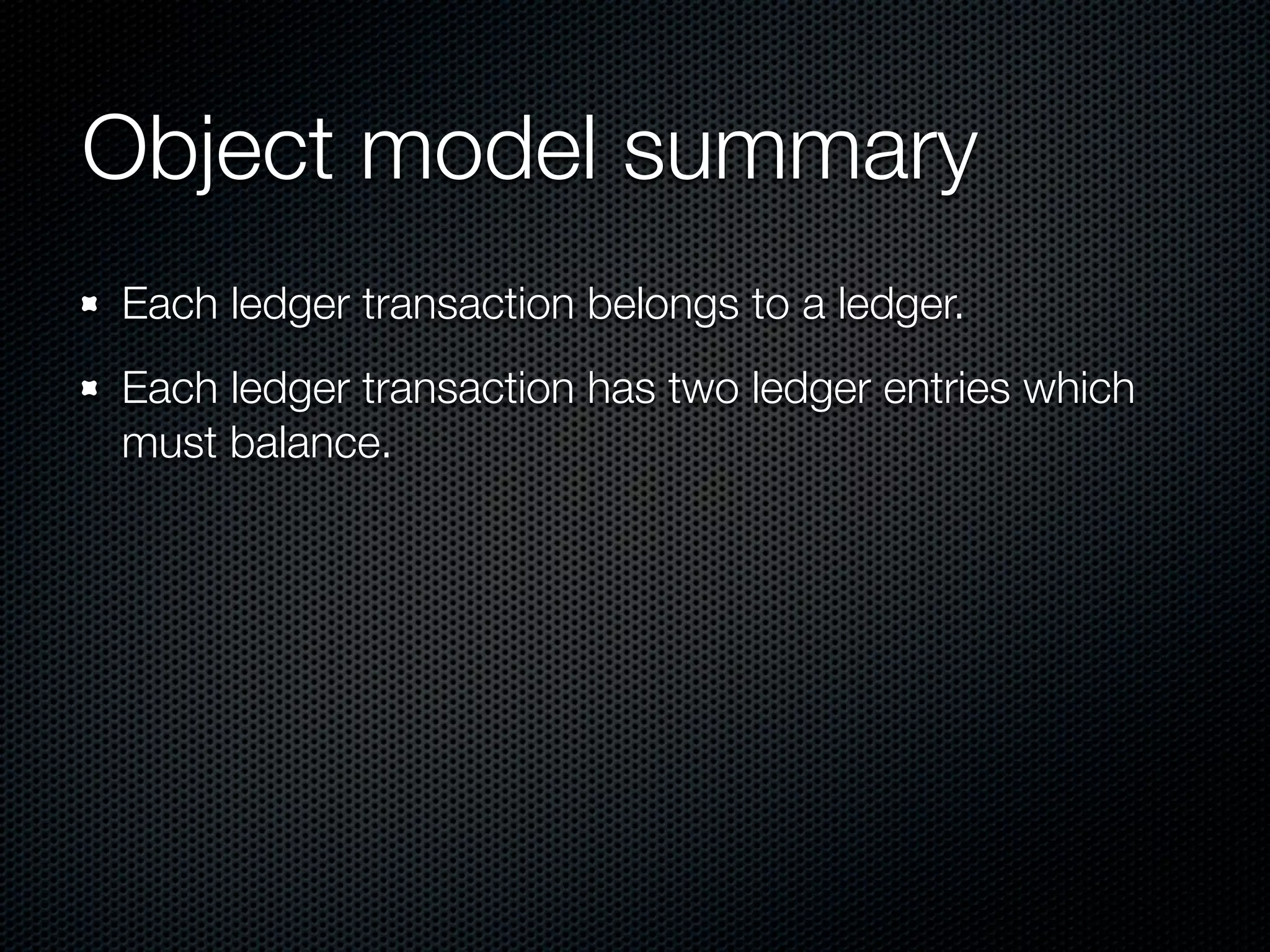
![Object Model with ActiveRecord
@credit_entry = LedgerEntry.new :account => "Cash",
:amount => 100.00, :type => "credit"
@debit_entry = LedgerEntry.new :account => "Notes Pay.",
:amount => 100.00, :type => "debit"
@ledger_transaction = LedgerTransaction.new
:ledger_id => 1,
:ledger_entries => [@credit_entry, @debit_entry]](https://image.slidesharecdn.com/practicalrubyprojectswithmongodb-100408221143-phpapp01/75/Practical-Ruby-Projects-With-Mongo-Db-71-2048.jpg)
![Object Model with Mongo
@ledger_transaction = LedgerTransaction.new :ledger_id => 1,
:ledger_entries => [
{ :account => 'Cash', :type => "credit", :amount => 100.00 },
{ :account => 'Notes Pay.', :type => "debit", :amount => 100.00 }
]](https://image.slidesharecdn.com/practicalrubyprojectswithmongodb-100408221143-phpapp01/75/Practical-Ruby-Projects-With-Mongo-Db-72-2048.jpg)
![Object Model with Mongo
@ledger_transaction = LedgerTransaction.new :ledger_id => 1,
:ledger_entries => [
{ :account => 'Cash', :type => "credit", :amount => 100.00 },
{ :account => 'Notes Pay.', :type => "debit", :amount => 100.00 }
]
This is the perfect case for embedded documents.](https://image.slidesharecdn.com/practicalrubyprojectswithmongodb-100408221143-phpapp01/75/Practical-Ruby-Projects-With-Mongo-Db-73-2048.jpg)
![Object Model with Mongo
@ledger_transaction = LedgerTransaction.new :ledger_id => 1,
:ledger_entries => [
{ :account => 'Cash', :type => "credit", :amount => 100.00 },
{ :account => 'Notes Pay.', :type => "debit", :amount => 100.00 }
]
We would never have a ledger entry w/o a transaction.](https://image.slidesharecdn.com/practicalrubyprojectswithmongodb-100408221143-phpapp01/75/Practical-Ruby-Projects-With-Mongo-Db-74-2048.jpg)
